
THE OFFICIAL MAGAZINE OF THE NEW ZEALAND WINE INDUSTRY FEBRUARY/MARCH 2023 ISSUE 138 NEW ZEALAND WINEGROWER Regional Update The season, the places, the people and the wines. Altogether Unique FEBRUARY/MARCH 2023 / ISSUE 138 Altogether Unique New Zealand Wine brand refresh Melanie Brown At The Laundry Trunk Disease Monitoring techniques
An innovative new biological fungicide, Botector® offers grape growers, including certified organic, a cutting-edge alternative to protecting their crop from botrytis.
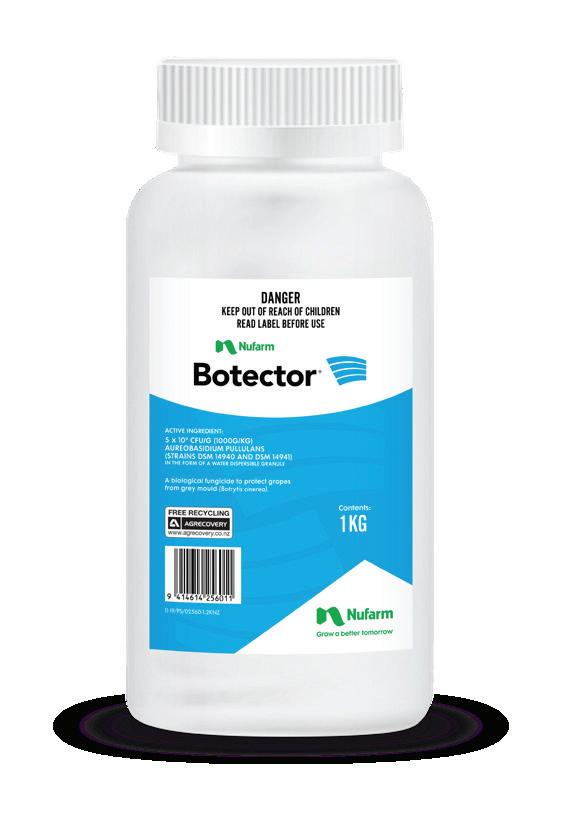
Developed by Nufarm, it has no influence on ripening, no known resistance issues, no effect on wine quality or taste, and a withholding period of just one day.

For more information talk to your local Horticulture specialist or visit us at nufarm.co.nz/botector

®Botector is a registered trademark of Erber Aktiengesellschaft. ONF207334NF
ISSUE 138 – FEBRUARY/MARCH 2023
4 6 30 38 42 50 54 14 42 48
Editorial Sophie Preece

From the CEO
Philip Gregan
PhD Précis
Amalia Bernardes Borssato
Women in Wine
Melanie Brown
The Profile
Bart Arnst
Wine Weather
James Morrison
Advocacy Matters
Regulars Features
12 14 48
Altogether Unique New Zealand Winegrowers launched its new brand platform in January, with three pillars of Purity, Innovation, and Care. New Zealand Wine, Altogether Unique will give the New Zealand wine industry a fresh start for 2023.
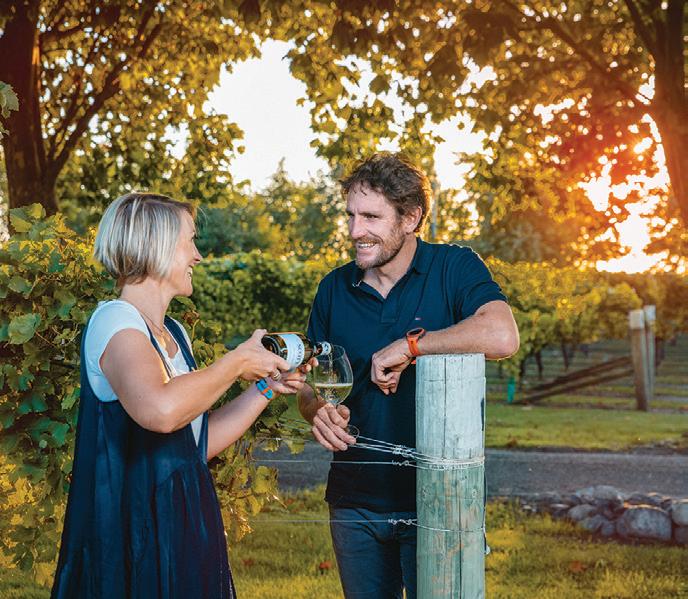

Regional Update
From sub-tropical Northland to the arid climes of Central Otago, New Zealand’s wine industry is enriched by its diversity. This edition checks in on the growing season and asks what each region adds to the character of New Zealand wine.
Trunk Disease
Monitoring grapevine trunk disease is important for determining the size of your problem, and to ascertain if your management is working, or whether you need to “move up a gear” in protecting your vineyard, says Dion Mundy from Plant & Food Research.
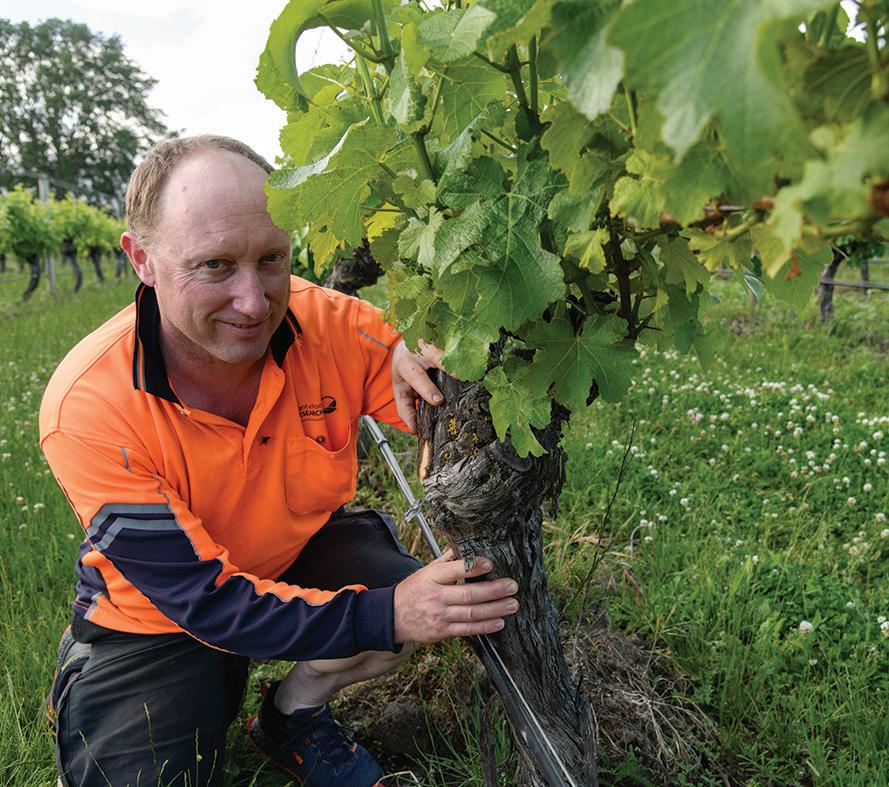

NEW ZEALAND WINEGROWER I FEBRUARY/MARCH 2023 I 3
COVER PHOTO
As Neudorf Vineyards celebrate the release of its 40th vintage, Rosie Finn reflects on the legacy of her parents’ work, and the place of Nelson in the picture of New Zealand wine.
Photo Neil Smith, Chocolate Dog. Go to page 25.
Sarah Wilson 38 23
EDITOR Sophie Preece sophie@sophiepreece.co.nz
CORRESPONDENTS
Wellington Wine Country: Joelle Thomson
mailme@joellethomson.com
Hawkes Bay: Olly Styles oliverstyles@hotmail.com
Central Otago: Jean Grierson jean.grierson@nzsouth.co.nz
Canterbury: Jo Burzynska jo@joburzynska.com
ADVERTISING
Upper North Island: Stephen Pollard stephenp@ruralnews.co.nz
Ph: 021 963 166
Central North Island: Lisa Wise lisaw@ruralnews.co.nz
Ph: 027 369 9218
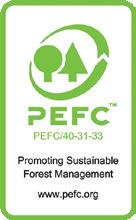
Lower North Island: Ron Mackay ronm@ruralnews.co.nz
Ph: 021 453 914
South Island:
Kaye Sutherland kayes@ruralnews.co.nz
Ph: 021 221 1994
CIRCULATION & SUBSCRIPTIONS
Carolina Paiva carolina.paiva@nzwine.com
+64 027 700 0740
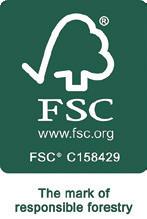
New Zealand Winegrowers PO Box 90 276, Auckland Mail Centre, New Zealand
PUBLISHING & PRE-PRESS
Rural News Group PO Box 331100, Takapuna, Auckland 0740
Ph: 09 307 0399
Location: Top Floor, 29 Northcroft Street, Takapuna, Auckland 0622
Publisher: Brian Hight
Managing Editor: Adam Fricker

Production: David Ferguson, Rebecca Williams
Published by Rural News Group Ltd under authority of New Zealand Winegrowers Inc. Unless directly attributed, opinions expressed in the magazine are not necessarily those of Rural News Group and/or its directors or management, New Zealand Winegrowers Inc. or its constituent organisations. Published every second month. One free copy is mailed to every member of the New Zealand Winegrowers Inc, the New Zealand Society of Viticulture & Oenology and the New Zealand Vine Improvement Group, and to such other persons or organisations as directed by the owners, with provision for additional copies and other recipients to be on a subscription
ISSN 1174-5223
From the Editor
This long lean country, with its fringe of beaches, spine of mountains and korowai of cloud, is altogether unique. From subtropical Northland to arid Central Otago, geological, climatic and human influences have carved out a patchwork of unique places, each of them extraordinary.
In many of these places, pioneering winegrowers have taken old world wine traditions and new world wine knowledge to forge vineyards and wines that reflect their little corner of New Zealand in this little corner of the world. From the tiny 59 hectares of Waitaki to more than 29,000ha in Marlborough, and from the Chardonnay of Gisborne to the Pinot Noir of Central, they all add texture and richness to our story.
Which is why New Zealand Wine’s new brand platform - New Zealand Wine, Altogether Unique – is so apt (see page 12). “The combination of New Zealand’s location, people, and climate is simply magic.” says Mike O’Sullivan from Many Minds, which developed the brand with New Zealand Winegrowers. “There is nothing else like it on earth.”

Checking in with growers, viticulturists and winemakers over the past week, I’ve been reminded of how unique our wine regions are, and how Altogether Unique our industry is, thanks to people and place. The attributes of natural environment and passionate people are the “anchors” of an industry with a long-term future, says Emma Jenkins MW in this edition (see The Blind Tasting on page 19). “Where you have not only the ability to make really fine wine but you have people who are absolutely passionate about getting the best out of their site and their varieties.”
That’s happening in every single one of our wine regions, with wine communities striving to make extraordinary wine from extraordinary places.
Sophie Preece EDITOR
Contributors
Joelle Thomson
Joelle Thomson – a writer, published author and wine lover who also works as a wine adviser – learns about field grafting in a Wairarapa vineyard.
Go to page 36
Jo Burzynska

Wine writer and academic Jo Burzynska heads to The Laundry to talk to Melanie Brown about hospitality, Covid lockdowns, and giving New Zealand wines a presence in the UK.


Go to page 38
Tony Skinner
In this edition, Tony Skinner explores a collaboration between a collective of Marlborough grape growers and one of the region’s pioneers, David Hohnen.
Go to page 46
Power, cooling and heating specialists for wineries
With over 20 years’ experience working with the wine industry throughout the New Zealand Pacific region, we understand what it takes to enhance productivity and decrease costs for your winery. We can help you make your vintage a success by:

Controlling fermentation
Providing temporary cooling for cellars or other critical functions
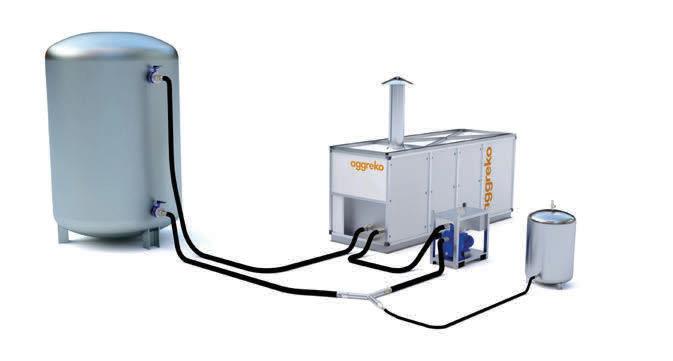

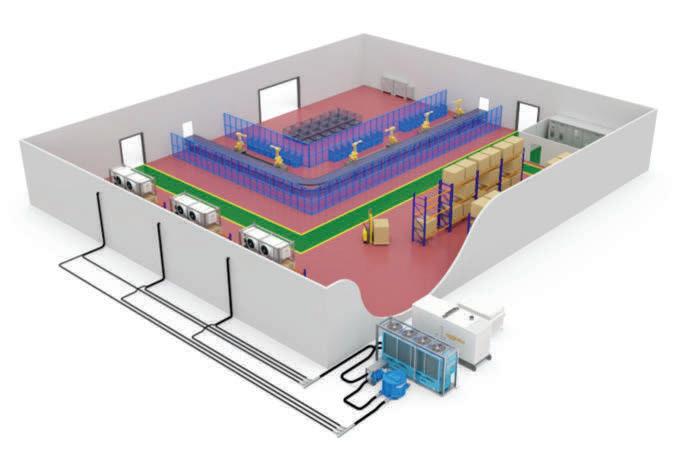
Providing additional power when needed
We are on call 24 hours a day, seven days a week to serve you.
Warehouse cooling Extra chilled water for tank cooling Hot water for seasonal peak loads Call us to learn more 0800 003 921
From the CEO

Thinking Longer Term
PHILIP GREGAN
For many growers and wineries, the past three years have all been about getting through the immediate challenges associated with the Covid-19 pandemic. Those challenges were not made any easier by the additional complication of supply shortages for many businesses, and the steep rise in inflation during the past 12 months. But at the beginning of the New Year, it is timely to think more long term –where are we going and how are we going to get there?
For the past 30 years or so, growers and wineries have built the New Zealand wine industry into a global success story. Exports, virtually nil in 1990, are now worth well in excess of $2 billion per annum. Domestically we sell about $400-$500 million of New Zealand wine each year. There are more than 40,000 hectares of producing grapes, and we employ more than 7,000 full time staff and support the employment of thousands more in service sectors and the distribution and retail trade. That success reflects the reputation producers have built for our wines. Our reputation for quality, and for distinctive, premium and sustainable wines, resonates with consumers and is the foundation on which our sales success is built. In turn that reputation underpins the economic and social contribution our growers and wineries make to Aotearoa New Zealand as a whole, and our individual regions and communities. That contribution is the reason our sector is valued by those communities.
Looking forward, our growers and wineries need to continue to build on the basics that have got us to where we are today. That means continuing to invest in the production of premium, sustainable wines that reflect and represent that distinctive environment in which they are produced. And to resonate with our consumers, how producers do that will be important.
Recently, we launched a new brand essence for New Zealand wine which, in its own way, is a good guide to the ‘how’. The pillars of that brand essence – Purity, Innovation and Care – will be important touchstones that we know resonate with consumers now, and will do so into the future.
(whether in the form of restrictions on sale of wine, excise, or increasingly stringent production requirements), are a real concern. To counter this, we need to ensure that our sector retains its social licence to operate. In other words – we need to look after our reputation to ensure our producers are valued by their local communities as an asset worth keeping and protecting.
Offshore there are undoubtedly significant opportunities. These opportunities won’t be for everyone as some producers will continue to focus on the local market, but they will be the major driver of growth and change in the industry, just as they have been in recent years.
Strong international demand has driven expansion in the vineyard area for the past three decades. Since 2015 the vineyard area has expanded at just under 1,000ha per year and is now 42,000ha. It seems it won’t be long before the vineyard area reaches 50,000ha and only time will tell how much further it will grow beyond that.

Consumers, and regulators, are going to demand increasing levels of detail about industry production practices. This has been a long-term trend, and it shows no signs of easing; on the contrary, demands are increasing. Recent moves towards fuller ingredient and energy labelling on wines are indicative of this.
Our industry’s ability to grow the domestic market will be limited by the small size of the market (just 5 plus million people in total) and intense competition for the consumers’ dollar. While this market may be small, it is still very important – in fact, more than 300 wineries sell only in the domestic market. While the overall market may be constrained, there are growth opportunities, whether it be the return of high value overseas tourists, the revitalisation of the on-premise trade or the growth of the zero/low alcohol market.
It is clear from discussions with wineries that potential regulatory risks domestically
Export growth has been steady over a long period (despite the occasional ups and downs). In 1999 exports were $125m and they reached $1b in 2009. The $2b mark was reached a decade later in December 2020, and for June year end 2023, MPI is projecting $2.4b. With continuing demand, and expansion of the vineyard area, it seems that $3b of export is now on the horizon.
It is easy to think about the future based on evolution of current trends, as I have done here. More challenging is to think about the game changing events that are revolutionary. Half a century ago, the first grapevines in the modern Marlborough wine industry were planted. This revolutionary act fundamentally altered the trajectory of our sector. I wonder if, in another 50 years, growers and wineries will look back to 2023 and be able to identify a similarly game-changing event.
Best wishes for vintage and a successful 2023.
6 I NEW ZEALAND WINEGROWER I FEBRUARY/MARCH 2023 FROM THE CEO
Offshore there are undoubtedly significant opportunities. These opportunities won’t be for everyone as some producers will continue to focus on the local market.
Early Order Program On Now
For the moments that matter on the land, you need a high performance machine to get the job done. The Fendt Early Order Program is back and better than ever. With 3.99% finance on our range of tractors , you can feel confident going into the new year with the best machines on the market. Now is the time to talk to your local Fendt dealer.

It’s bold – It’s Fendt. *Offer ends February 28, 2023, while stocks last. Finance with an interest rate of 3.99% p.a. available on a Hire Purchase agreement based on a minimum 30% cash deposit, the GST component repaid in the fourth month and monthly repayments in arrears over a 36 months term. Fees and lending conditions apply to approved GST number holders who use the equipment for business purposes. Finance is approved by AGCO Finance Pty Ltd, GST number 88-831-861. † Standard 2 year/2,000-hour factory warranty is included in the 3 year/3,000-hour extended warranty. Fendt tracked tractors not included in offer. MAKE EVERY MOMENT COUNT. 3.99%* FINANCE RATE 3 YEAR/3,000-HOUR EXTENDED WARRANTY † www.fendt.com/au
Tracking down the ghost vines
New Zealand agritech startup Cropsy Technologies is leading a $1.3 million project to help growers identify and replace grapevines that are missing, dead, dying or otherwise unproductive. Cropsy has been awarded $534,000 through the Ministry for Primary Industries (MPI’s) Sustainable Food and Fibre Futures (SFF Futures) fund and a $200k AGMARDT Agribusiness Innovation grant to lead the project, called You know I can’t harvest your Ghost Vines: Vineyard-scale monitoring of unproductive vines.

Cropsy Head of Product and Innovation Dr Gareth Hill says the project will develop tools to help growers understand the health and productivity of every vine in their vineyards in order to identify missing, dead, dying or otherwise unproductive grapevines. “These vines receive all the labour, water, and other vineyard inputs that other vines do without contributing to the overall productivity of the vineyard.” Cropsy’s current vision system can measure the current state of grapevines. By also measuring and analysing the state of every vine and its neighbours over time, the Ghost Vines project will enable the diagnosis of declining productivity and disease at the earliest possible stage, says Gareth. “We are building up a ‘patient history’ of all the vines in a vineyard.”
Young Vintner of the Year
Bryn Craddock, (pictured), a third year Bachelor of Viticulture and Wine Science student at EIT|Te Pūkenga, was named as Hawke’s Bay A&P Society & Craggy Range Young Vintner of the Year for 2022. As part of the scholarship prize, Bryn wins $2,000 towards study from the Hawke’s Bay A&P Society and a vintage position at Craggy Range Winery for the 2023 harvest season. She will also be an associate judge for the Hawke’s Bay A&P Bayleys Wine Awards next year.
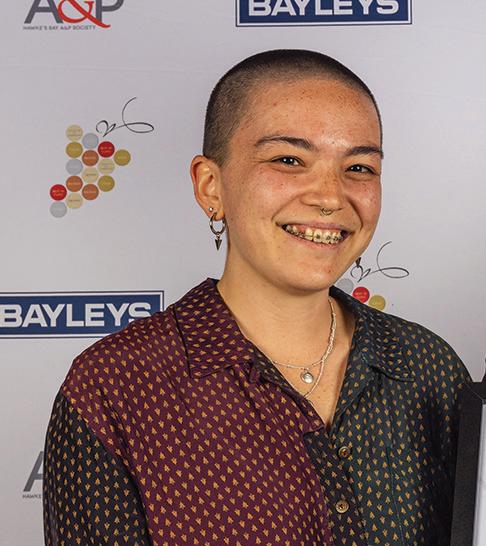
Protecting Coastlines
Babich Wines is sponsoring the Sustainable Coastlines Charitable Trust to support communities around New Zealand to clean and protect local beaches and waterways. The company has a proud history of investing in water conservation initiatives, nationally and abroad, says Chief Executive David Babich. “Over our 100-year history, through periods of drought, climate change, and increasing pressure on natural resources, we’ve always understood the importance of a healthy environment. Not just to the industry and the quality of our wines, but most importantly to local ecosystems and communities. Sponsoring Sustainable Coastlines is a really natural fit for us.”

Winemaker of the year
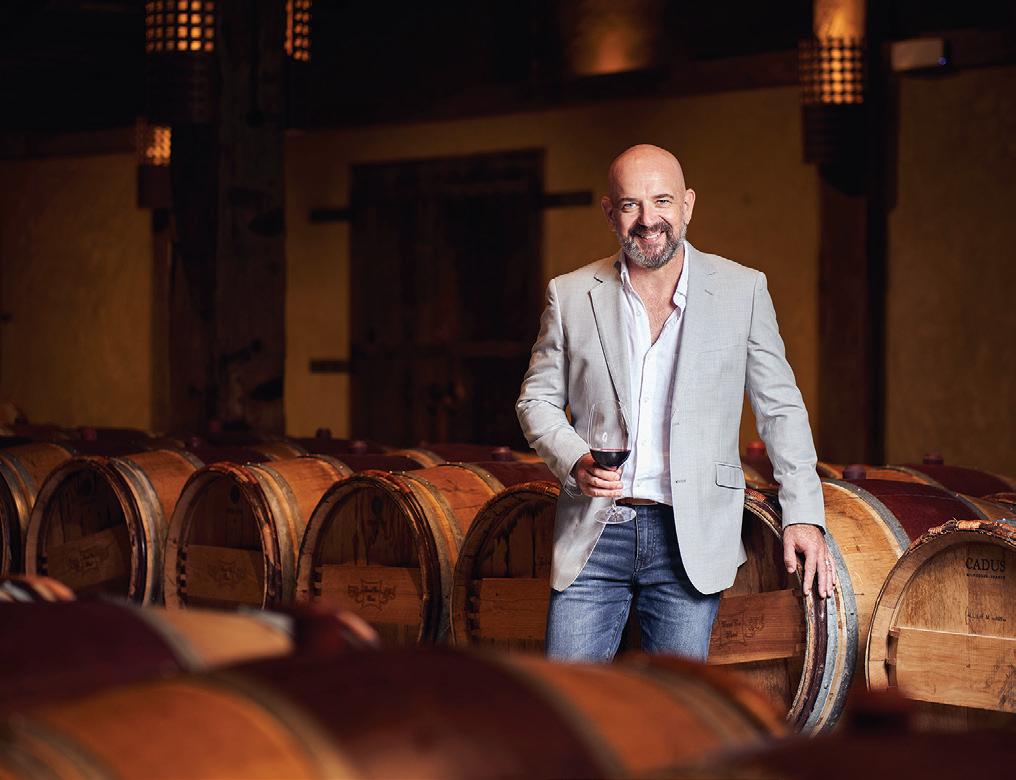
Church Road Chief Winemaker Chris Scott (pictured) was named New Zealand Winemaker of the Year at the Winestate Wine of the Year Awards, taking the title for the fifth time. “This award is as much for the team here at Church Road as it is for me,” he says. “We have such a huge amount of skill, experience and dedication amongst the Church Road family and an incredible fruit resource from some of the very best vineyards in Hawke’s Bay. It is a bit of a dream really, to do what we do and we’re lucky to be able to do it in such a beautiful part of the world.”
Hey Syrah, Syrah
Mission Estate Winery was awarded New Zealand’s only Syrah Masters medal in the 2022 Global Syrah Masters, for its 2019 Mission Huchet Syrah from the Gimblett Gravels in Hawke’s Bay. Run by The Drinks Business magazine, it is the biggest United Kingdom-based competition for Syrah and secures entrants from all around the globe each year. Only six Masters medals were awarded in 2022, with the other five for wines from Barossa. The very limited Huchet wines are only made in select years and Paul Mooney, Chief Winemaker at Mission, says 2019 was a fantastic vintage in Hawke’s Bay. As a winemaker for more than 40 years, Paul rates the region’s Syrah highly. “This award is a real credit to the efforts of both our winemaking and viticultural teams, and it’s not just about this vintage, but the learnings and knowledge of these vineyards that we’ve picked up over the years.”
8 I NEW ZEALAND WINEGROWER I FEBRUARY/MARCH 2023 NEWS BREIFS
Paul Mooney
Biodiversity Plan
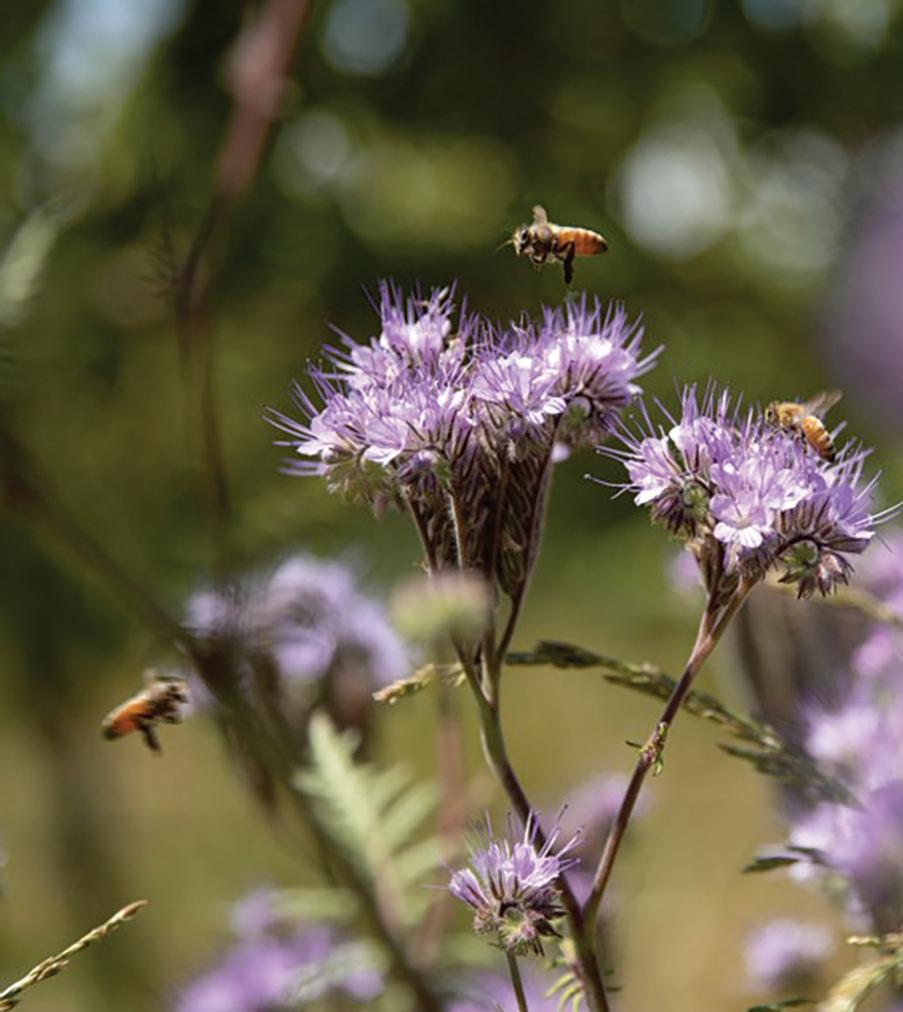
Yealands Wine Group has launched an award-winning 30-year Biodiversity Plan, which will see around 270 hectares planted in natives at its vineyard in Marlborough’s Awatere Valley. More than a million native trees are to be planted in order to improve water quality and protect and enhance sensitive natural areas. The company

Bragato Trust Scholarship
The Bragato Trust provides scholarships for New Zealand resident graduates and exceptional undergraduates to gain further qualifications or experience in subjects of relevance to the viticulture and wine industry. Three grants are available from $3,500 to $15,000 and the closing date for applications is 28 February.
won two golds at the 2022 International Green Apple Awards for the Biodiversity Plan, topping the Regeneration and Carbon Reduction categories. The awards are run by global non-profit The Green Organisation to recognise environmental best practice around the world. “When we launched, we had an ambition to
Climate Action Week Marlborough
Marlborough’s inaugural Climate Action Week, to be held from 13 to 17 February, has been designed to grow awareness and knowledge about lowering carbon emissions for a climate positive future, says organiser Catherine van der Meulen. The week includes “immersion experiences”, including a session on organics, biodiversity and tackling carbon emissions at Dog Point Vineyards, and another at Yealands Estate, focused on decarbonisation, biodiversity, “and leveraging these assets to grow the brand with meaning”, says Catherine. Yealands are also on board as founding sponsor: events.humanitix.com
become a world leader in sustainable wine production,” says Michael Wentworth, General Manager Sustainability and Strategic Projects at Yealands. “We believe creating a more biodiverse environment makes for a healthier, more resilient vineyard – one that’s also more resilient to climate change.”
NEW ZEALAND WINEGROWER I FEBRUARY/MARCH 2023 I 9 NEWS BRIEFS
Upcoming events
To have events added to our calendar contact sophie@sophiepreece.co.nz
Urban Wine Walk Wellington
18 February
urbanwinewalk.com.au
The streets and laneways of Wellington will come alive as individual venues transform into Urban Cellar Doors on a self-guided trail, tasting wines from a line-up of New Zealand winemakers, from Tony Bish Wines at Noble Rot to Decibel Wines at Little Beer Quarter.
Marlborough Wine & Food Festival, Marlborough
11 February
marlboroughwinefestival.com
The 36th Marlborough Wine & Food Festival is shaping up as a feast of opportunities for both seasoned foodies and those looking to learn. All ticket holders have access to the Culinary Pavilion where top chefs such as Peter Gordon and Mark Southon will create masterpieces from Marlborough’s best local produce and artisan foods. There is also the option to purchase a ticket to a masterclass. With more than 30 wineries exhibiting, festivalgoers can wander up and meet the makers and growers of award-winning wines at any time.
North Canterbury Wine & Food Festival
5 March
ncwineandfood.co.nz
Gather under the oaks for the coolest little wine festival in the country. Delicious wine meets the tastiest food at the North Canterbury Wine & Food Festival, which returns to Waipara on 5 March.
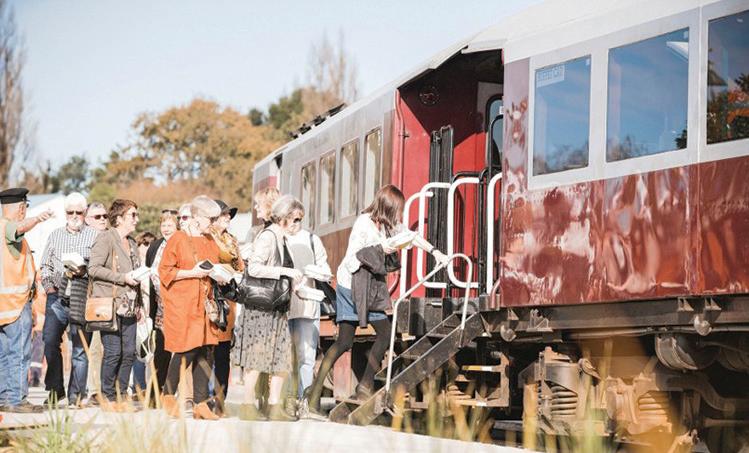
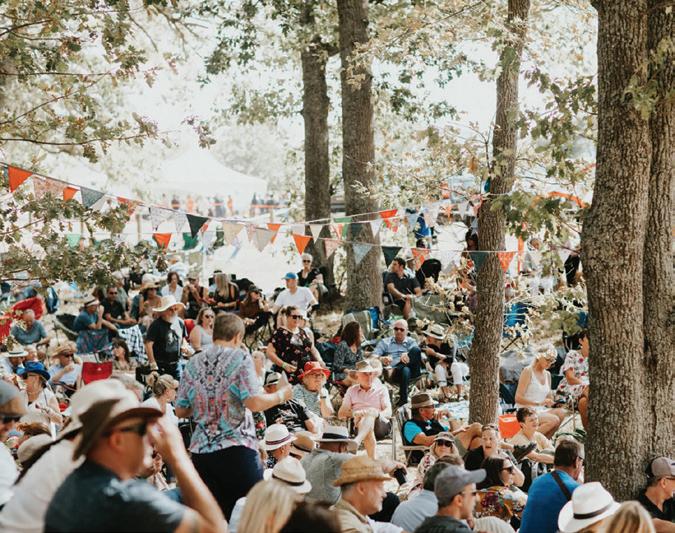

The Chardonnay Affair
26-28 May
thechardonnayaffair.co.nz
The Chardonnay Affair is a four-day celebration of all things Chardonnay on the East Coast of New Zealand. Ride the historic steam train WA 165 from Gisborne railway station through the countryside, indulge in the Chardonnay In The Vines long lunch, and celebrate International Chardonnay Day on 25 May.
Organic & Biodynamic Winegrowing Conference
20-22 June
organicwineconference.com
Organic Winegrowers New Zealand will hold the Organic & Biodynamic Winegrowing Conference in Marlborough in June. Themes for the conference will build upon key pillars of Create, Care and Connect.

WSET Courses
wineedco.com/wsetcourses
Wairarapa Wines Harvest Festival, Wairarapa
17-18 February
wairarapaharvestfestival.co.nz
Wairarapa’s finest wineries, high profile restaurants, and food producers will showcase their wares set amongst ancient native trees in the festival’s spectacular riverside setting.
Ripe : The Wānaka Wine and Food Festival
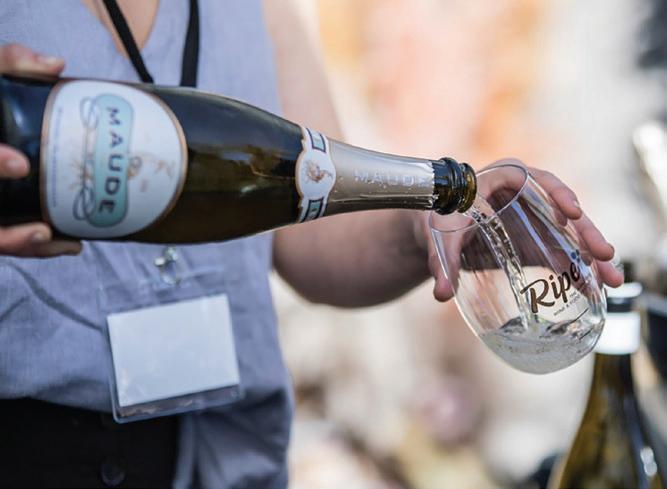

18 March
ripewanaka.co.nz
Ripe returns to Lake Wānaka in March, amid the picturesque setting of Glendhu Bay. “We can’t wait to showcase the world-class Central Otago wine and food producers surrounded by the majestic scenery of Lake Wānaka to our guests coming from near and far,” says event organiser and Wānaka local Nathan White.
The Wine Education Company is an approved provider of the WSET Global Wine Award courses, upskilling cellar door, sales, viticulture, and winery teams. There are courses in Marlborough, Hawke’s Bay, Christchurch and Queenstown throughout 2023, ranging from a one-day introductory qualification at level 1 to the five-day advanced level 3 award, preparing many for their diplomas and Master of Wine training.
XXXXXXXXX 10 I NEW ZEALAND WINEGROWER I FEBRUARY/MARCH 2023
Coming up Rosés
The eighth annual New Zealand Rosé Day on 5 February will celebrate New Zealand’s fastest growing wine style in the height of summer, with wineries, retailers, and restaurants thinking pink. Caro Jensen, who launched Rosé Day with Emily Camblin in 2016, under the auspices of Sip NZ (now Caroha.com), says it started as a way to raise awareness about the rise of Rosé across the country, with an array of quality wines in a variety of styles, sweetness and price point. “Since then, New Zealand Rosé has come a long way.”


Rosé is the fourth largest New Zealand wine export, with 7.9 million litres sent around the globe in 2021, compared to 3.6m litres in 2018 and just 0.56m litres in 2010. According to IWSR Drinks Market Analysis, the Rosé category is forecast to grow by almost 70% from 2020 to 2024. “Rosé remains one of the most potent and far-reaching trends within the wine category,” IWSR says in a report on the variety, noting that it has benefited from its
positioning as a gender-neutral beverage. New Zealand Winegrowers says the style is no longer limited to summer-sipping, with year-round popularity. “Every wine region throughout New Zealand produces Rosé so chances are wherever you choose to travel, you won’t be far from a winery producing a premium drop that you might not have heard of or which could take you into new taste territory.”
Winemaker Jules Taylor says it’s hard to
gauge the growth in demand, because they easily sell every Rosé they make each year, with supply the limiting factor. “It’s cool that Rosé has become an everyday kind of wine and that there’s one for everybody,” says Jules. “It’s like most things; finding the ‘style’ that suits your palate can take a bit of effort, but once you’re tuned in, boom!”
5 February #nzroséday #nzrosé
Labels for ice buckets
Water beading on labels has never looked this good. Our FSC® certified, moisture resistant wine label materials offer superior wet strength and print quality. The combination of the moisture protection in the facestock and Rapid Labels’ varnishes deliver outstanding ice bucket performance.
Let’s make it a great summer! Talk to our team today.
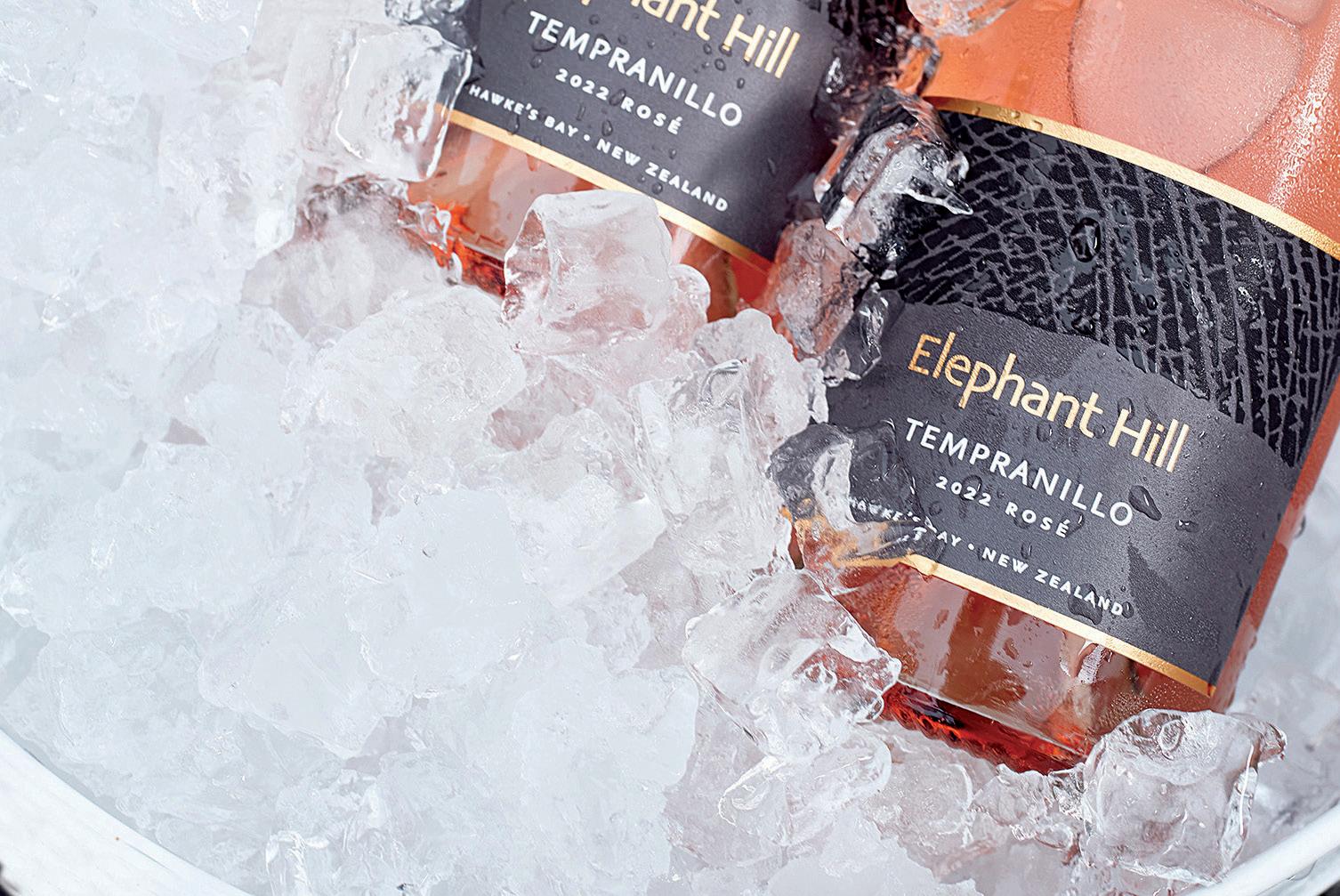
NEW ZEALAND WINEGROWER I FEBRUARY/MARCH 2023 I 11 UPCOMING EVENTS
Licence Number: 807004 0800 865 223 • www.rapidlabels.nz
The Marketing Place
Taking NZ wine to the world: Bringing the world to NZ wine
New Zealand Wine, Altogether Unique
New Zealand Winegrowers launched its new brand platform in January, having defined the brand essence of New Zealand Wine and devised a new visual identity to accompany it.
New Zealand Wine, Altogether Unique is the first branding refresh since Pure Discovery was developed in 2006, and will give the New Zealand wine industry a fresh start for 2023. During the November and December Marketing Hui series, New Zealand Winegrowers (NZW) shared with members how the New Zealand Wine, Altogether Unique brand story intends to be the foundation on which regional wine stories are built, and on top of that the special and unique brand stories of member wineries and the New Zealand wine industry as a whole.
The new brand encompasses the three pillars of Purity, Innovation, and Care in a way that is fresh, modern, and sophisticated, whilst infusing a sense of New Zealand-ness. Incorporating the latest consumer insights, NZW worked alongside creative agency Many Minds to define its brand essence and create an accompanying new visual identity.
“The combination of New Zealand’s location, people, and climate is simply magic. There is nothing else like it on earth,” says Mike O’Sullivan, Creative Director, Many Minds. “There were key words that came back from the consumer insights, like our people, nature, and purity, which formed the foundation pillars of the New Zealand Wine essence of Purity, Innovation, and Care.” From these three pillars, the New Zealand Wine Brand Story was developed: Some places have unblemished sunlight, young soil or beautiful water. Others have innovation, passion for the craft or care for the land. But only one place has the purity of it all… New Zealand Wine. Altogether Unique.
New Zealand Wine Brand Story
To assist members to leverage the new brand platform, NZW has developed the New Zealand Wine Brand Story. This resource contains building blocks for telling the New Zealand wine story, as well as the journey NZW went on to develop the New Zealand Wine brand essence and new visual identity. The New Zealand Wine Brand Story is dynamic, and examples of the new brand in action will be added as they come to life. Download the New Zealand Wine Brand Story and video assets at nzwine.com.
To bring the brand story and the three pillars of the brand essence to life, NZW has created video content that can be used across the wine industry. A ‘member-sourced jigsaw’, the video aims to create an emotional connection to New Zealand wine. “This storytelling asset will tell the foundational story of New Zealand wine through the lens of the key pillars of Purity, Innovation, and Care – aspects that make New Zealand wine and the New Zealand wine industry, so unique and special,” says Charlotte Read, NZW General Manager Marketing.
“With global activity returning to ‘normal’, it’s more competitive than ever to have the voice of the New Zealand Wine brand heard, and a clear, premium brand message is essential. Creating a compelling brand positioning for New Zealand Wine is important as we seek to engage and motivate evolving wine drinking audiences.”
The short clip features Kiwi actor and winemaker Sir Sam Neill (pictured), of Jurassic Park and The Piano fame, who has been a part of the New Zealand wine story for more than 25 years. Sam is the proprietor of Two Paddocks, a family vineyard established in Central Otago 30 years ago.

The New Zealand Wine, Altogether Unique video can be used by all promoting the New Zealand wine industry, and used in presentations, at events, or on your social media channels.
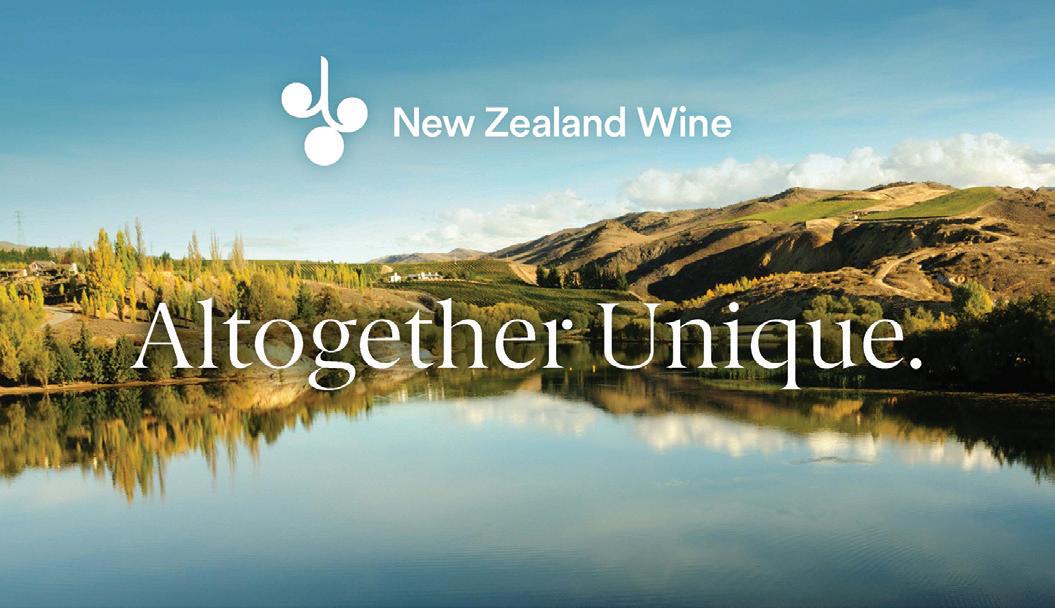

As part of the brand essence work, a new visual identity for New Zealand Wine has also been created. “Whilst it wasn’t our intention originally to devise a new logo, they do act as a shortcut to understanding that we’ve put significant time and effort into understanding our brand,” says Charlotte. “The new design encapsulates the meaning of the brand essence in a way that our current fern logo does not.”
The origins of three circular forms in the logo represent the three unique selling points for what makes New Zealand wine different - Purity, Innovation, and Care. These three circular shapes were further crafted into more geometric organic forms reminiscent of fronds you would find on a grapevine, but rendered in “a more bespoke and timeless style”, she says. “The result is a highly contemporary mark, unique to New Zealand, that gives New Zealand Wine a more distinct visual presence on the world stage.”
12 I NEW ZEALAND WINEGROWER I FEBRUARY/MARCH 2023
New Zealand Wine Week ran from 30 January to 7 February and was the first opportunity for the new NZW brand to been seen around the world. Book-ended
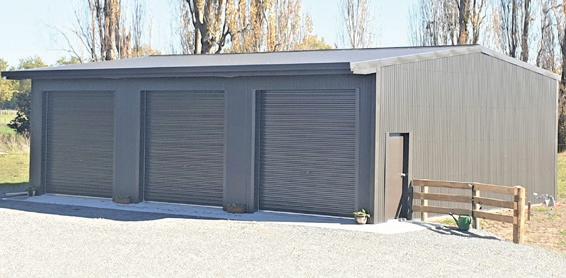
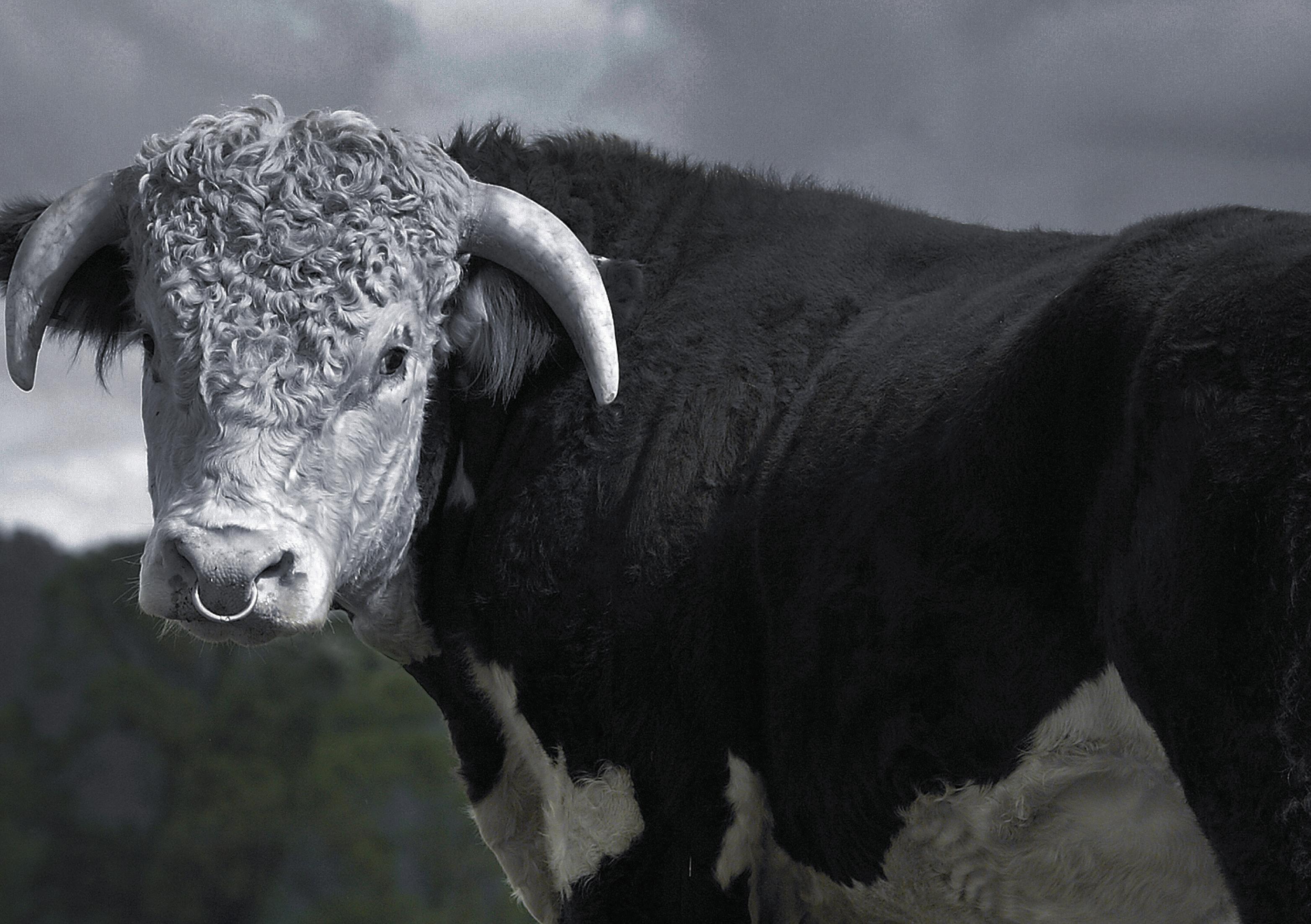
“wine adjacent” webinars targeting trade and media in the UK, US and Canada, covering research at the forefront of New Zealand wine, our wine regions, and our

international trade had conversations about sustainability, site, and Sauvignon. A longer tasting webinar also took place, where Stephen Wong MW presented


THE MARKETING PLACE
strength. Built to last. Distribution Centres: Whangarei, Hamilton, Levin, Taupo, Christchurch, Gore 0800 347 259 greenwoodinfo.co.nz GRW0008
New Zealand Wine Week 2023
Designed for
Calf Sheds
Implement Sheds
Gable Sheds
The Focus
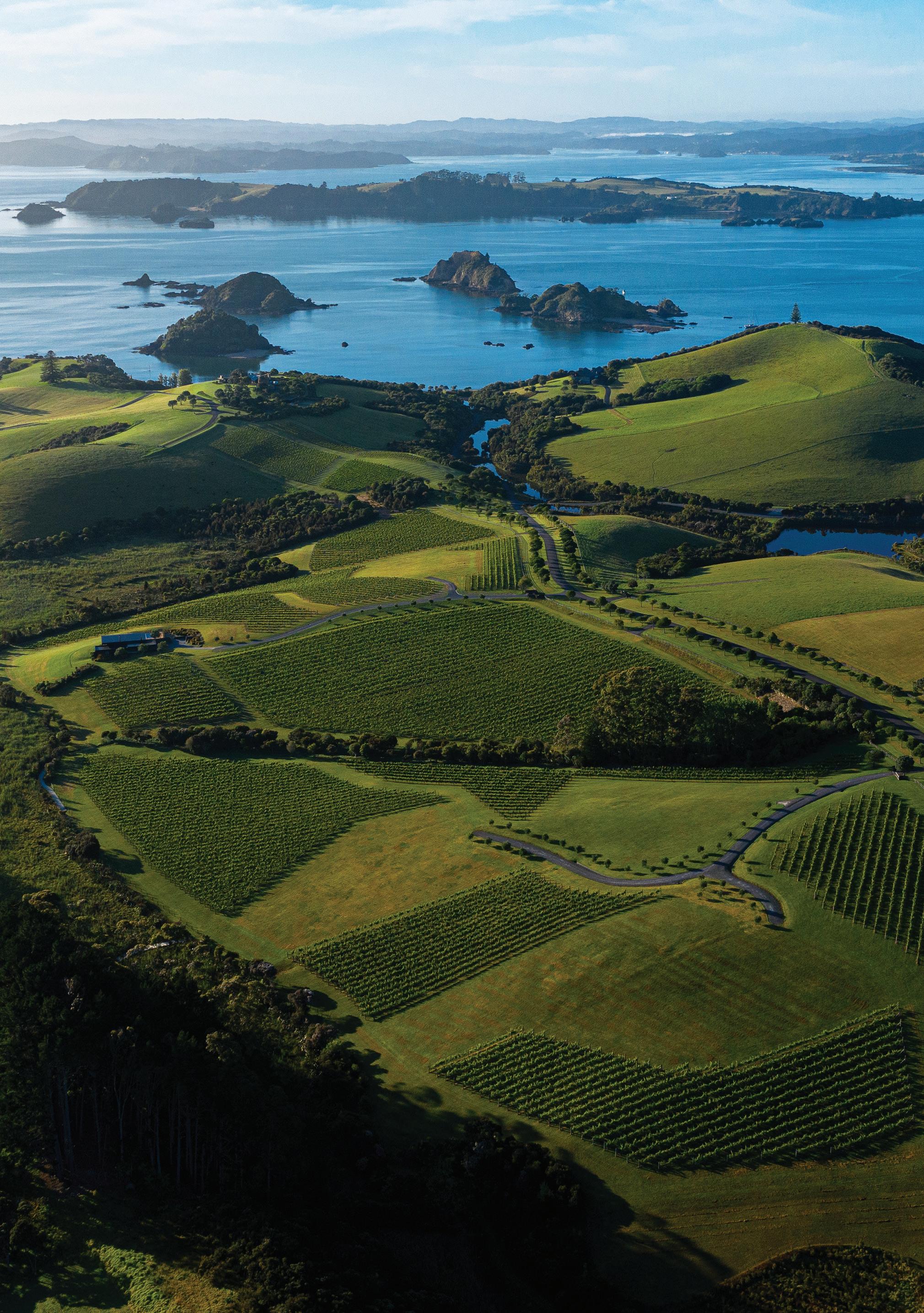
XXXXXXXXX 15-29 I Altogether Unique Exploring our regions 19 I The Blind Tasting Regional strength 21 I Askerne Wines Hawke’s Bay’s evolution 25 I Neudorf turns 40 Small & mighty Nelson 28 I Central Otago ‘Well red’ and thriving
Altogether Unique
From sub-tropical Northland to the arid climes of Central Otago, New Zealand’s wine industry is enriched by its diversity. Myriad threads are woven into the fabric of our wines and wine story, shaped by climatic conditions and soil structures, size and business models, and the people and philosophies behind the winegrowing. In this seasonal update, SOPHIE PREECE also asks for insights into what each region brings to New Zealand wine as a whole, creating an industry that’s Altogether Unique.
Northland
Northland has had a wet and challenging season, requiring a vigilant spray programme and plenty of work to keep grass and canopies under control. Rod MacIvor of Marsden Estate in Kerikeri says vines are about seven days later than typical because of a cool and overcast spring. While his vineyards were early enough to miss the cool flowering, some in Northland have had a poor fruit set, he says. “We must have timed it perfectly. We have some of the best crops and the vines are looking as good as we’ve ever seen them.”
However, keeping on top of vineyard growth and disease pressure has “made for a hell of a lot of expense”, including around 20% more on the spray budget.
“It certainly hasn’t been a perfect season, but it’s the tail end that’s really important now.” Meanwhile, Rod is grateful for an excellent worker pool of retirees who are filling the labour void left by backpackers, who are thin on the ground in the wake of the Covid-19 pandemic. “They’re really quite keen to get out and do stuff and to socialise,” he says of his older workforce, many of whom are eager for the extra income.
Northland echoes an old school European way of doing things, with myriad lifestyle vintners running vineyards for the love of it, Rod says. “Most New Zealand wine regions have areas of vine that are
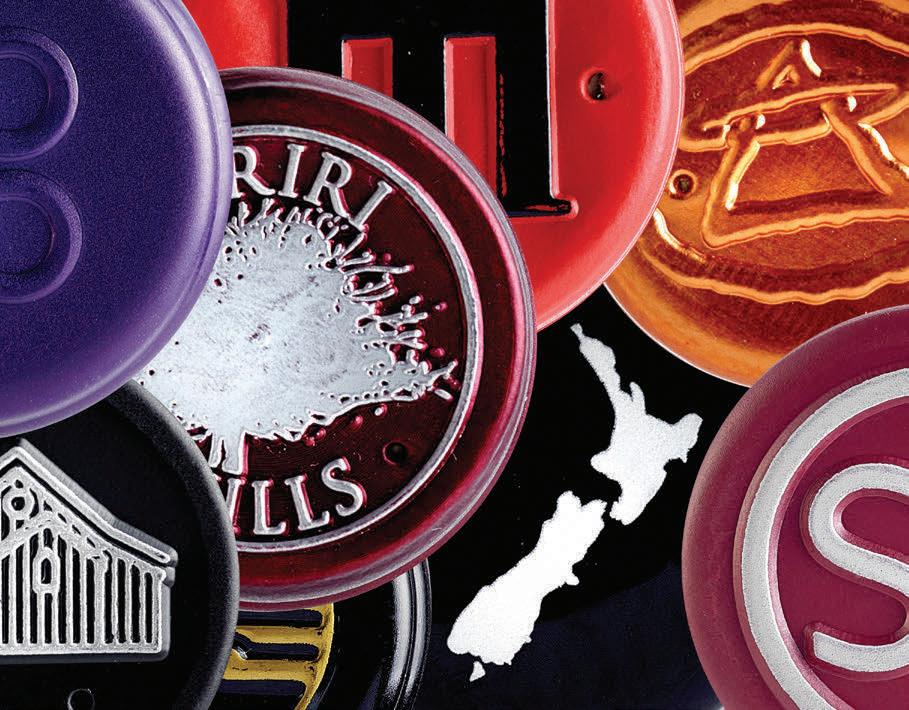
economic and a reasonable size. If you look at Northland, there are 40 growers up here and 140 hectares of grapes, and some of them are very small blocks.” Few growers rely on their blocks for a full-time income, he adds. “It’s more like you have a couple of acres and quite like the idea of making your own wine.” Marsden Estate is like a French-style cooperative in that equation, taking in parcels of fruit and giving back cases of bottled wine.
The cost of production is high, with little scale and a lot more mowing, spraying and leaf plucking required in the subtropical climate. Despite a precarious economic position, there’s continued growth in Northland plantings, thanks to an eager Auckland market on its backdoor, and visitors liable to stash a case or two in their boot before returning home, Rod says. About 70% of the wine is sold in the region, and direct to consumer sales through cellar doors, markets, wine festivals and restaurants, meaning there’s no margin lost to an intermediary.
The region has a unique place, Rod says. “The nice thing about it from a New Zealand wine point of view is that you can go from Cape Reinga to South Otago and have a completely different style of wine.”
Auckland
A very wet winter and spring in Auckland vineyards was relieved by a spell of fine
weather at Christmas, drying everything out. Then the first two weeks of January brought downpours, says Kumeu River Wines Winemaker Michael Brajkovich MW. “So we’re back to square one”.
The outlook is nonetheless relatively sunny, with a reasonable flowering and good fruit set, Michael says, noting that the rainfall was pre-veraison, so didn’t damage fruit “as long as it stays pretty dry from now on”. He’s anticipating a start date of about 10 February for Sparkling wine, followed by table wine later in the month.
Auckland is one of New Zealand’s oldest wine regions, established in the early 1900s by passionate Croatian, Lebanese and English winemakers, including Michael’s grandparents Mick and Katé, who came from Croatia with his father Maté in 1937. By 1944 they had saved enough money to purchase a 7-hectare block in Kumeu, which Mick and Maté cleared to plant in vines.
While such a rich history is integral to Auckland’s wine legacy, it is Chardonnay that has earned Kumeu River (as it’s now called) a global reputation, stacking up against the best in the world, with countless awards and accolades. Michael says the success illustrates how adaptable Chardonnay is to a number of different environments, including the winery’s small corner of West Auckland.
a w inning i nfluence (nz) ltd suppliers of fine

corks, barrels, screw caps & capsules
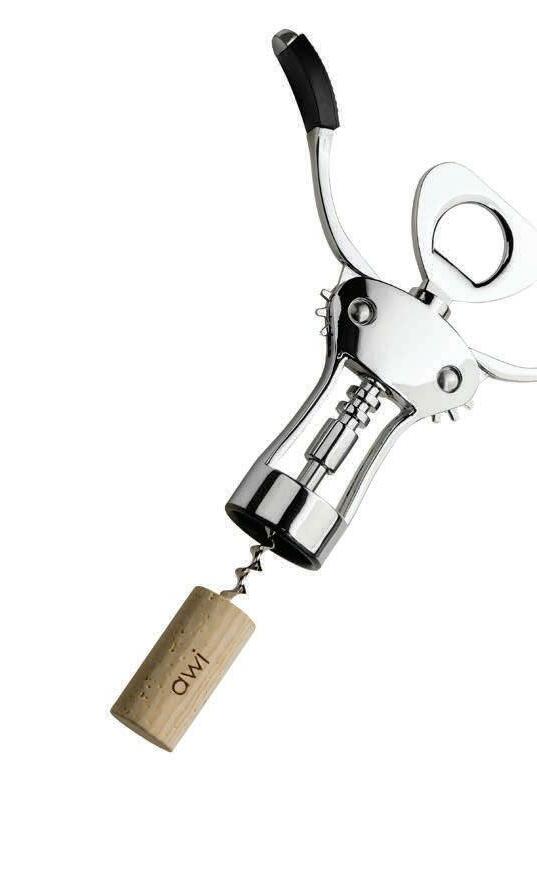
Distributors of European made bespoke screw caps and bottle capsules by Americo Coelho Relvas.

NEW ZEALAND WINEGROWER I FEBRUARY/MARCH 2023 I 15 THE FOCUS
tel 06 879 6074 email info@awiclosures.co.nz www.awiclosures.co.nz Your Imagination Is Our Limit
Waiheke
With more than 30 boutique vineyards and 20 commercial cellar doors within its beach clad borders, Waiheke’s wine industry is truly bespoke. There are plenty of complications making premium wine from tiny vineyards on a little, but eagerly populated, island. Not least among them this season has been the shortage of staff, as cellar doors and restaurants re-open to international tourists after the hiatus caused by the Covid-19 pandemic.
Marketing and Relationships Manager at Tantalus Estate, Chrissy Powlesland, notes that the likes of Airbnb have enabled bach owners to make some money when they’re not on the island, but have been a blow to staff accommodation, already limited by the island’s development restrictions. Tantalus, along with many other operators, is ensuring it has good onsite staff accommodation and this summer the company has refined its menu and capacity, to ensure guests continue to receive a five-star experience at the restaurant and cellar door.

Visitors are an “integral” component of making wine on Waiheke, says Chrissy. “In more commercial wine growing regions, you would have a cellar door as a brand
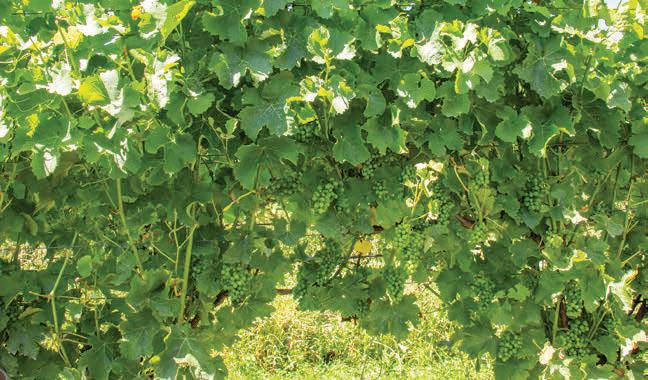
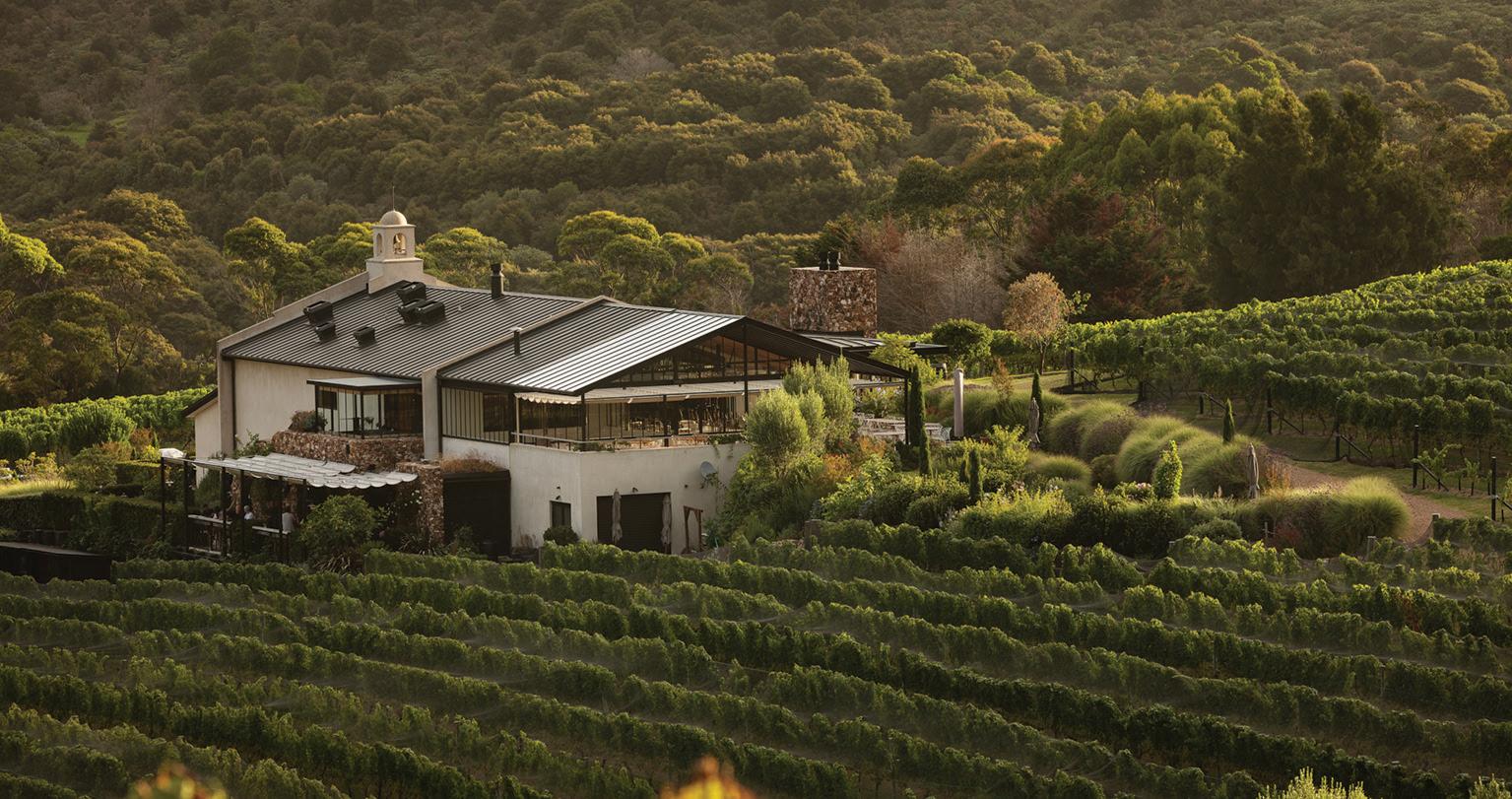
experience and there’s not as much of an expectation around it being profitable. Whereas here, 99% of the wine is sold through the restaurant and the cellar door.” That worked perfectly from the opening of Tantalus in 2016 to the beginning of 2020, with the strongest tourism stats ever. When the pandemic closed borders and locked down the regular stream of Auckland visitors, it faced major challenges but also fortuitous opportunities, with other sales channels such as Farro in Auckland opening up. Now Tantalus is casting its eyes at wider domestic and international markets, despite having just 8 hectares to grow from.
Waiheke’s tagline is ‘A world apart, not a world away’ which “perfectly captures its proximity to Auckland, and the diverse cultural mix on the island”, says Chrissy. Estate Winemaker Alex Perez agrees. “You can encounter an international and multidisciplinary community on Waiheke. I believe it’s quite enriching to be immersed in that cultural pluralism and humbly contribute to it.”
He likes to encourage a “vintage blend” in the small winery, with young oenologists and cellar hands from around the world. “That interdependence with mother nature and each other harmonises our unique terroir”.
MARTINBOROUGH Lot 20 Vineyard Lane

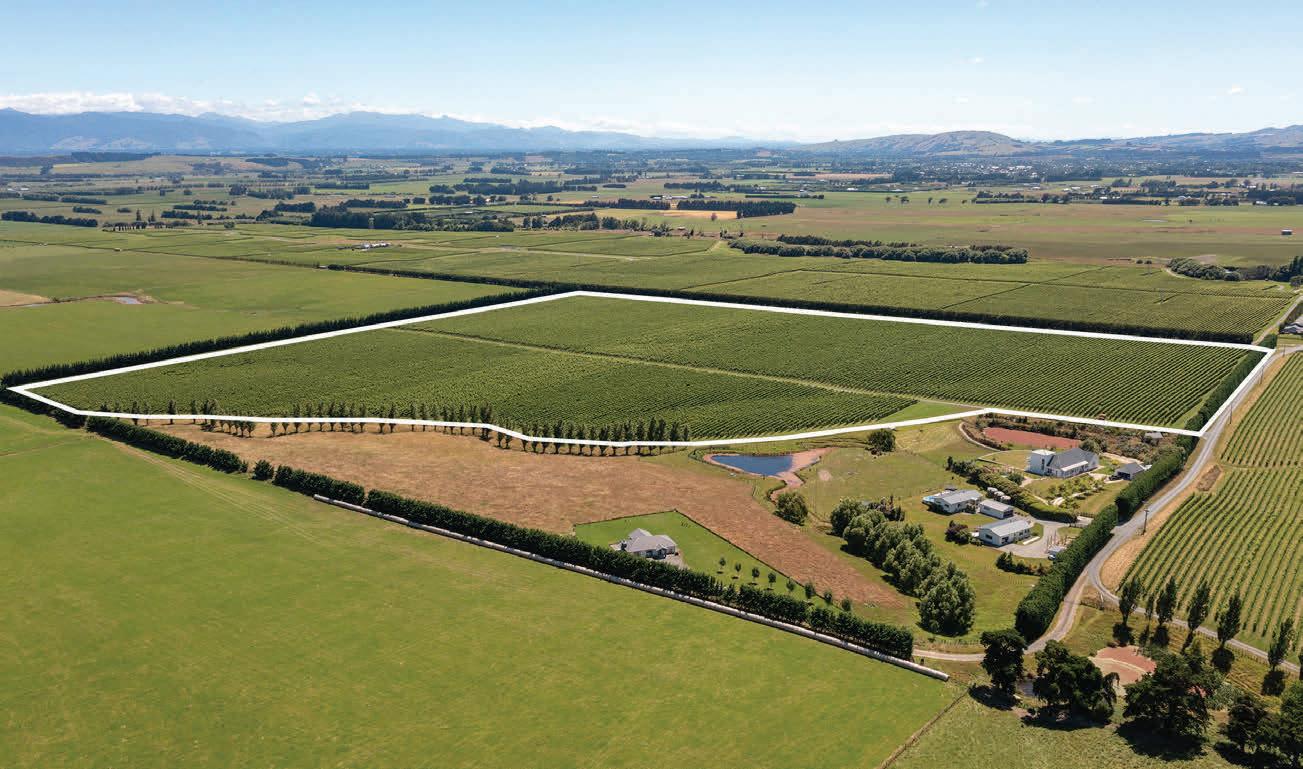
20.0703

Invest, Diversify or Expand in Martinborough
Sought after location and surrounded by neighbouring growers an opportunity is available with or without a grape supply contract. Offering 20 ha in total with 17.6 ha of planted Sauvignon Blanc vines the block comes with irrigation from a reservoir that is owned and managed by the current owners. The vineyard is northwest facing with excellent sunlight for ripening and the gentle sloping terrain creates air movement which alleviates the potential for frost damage in early spring. The property has subdivision approval for 5 lots comprising approximately 4 ha each.
NZSIR
Each office is independently owned and operated.
TENDER: 4:00 p.m. Wednesday 8 March, 2023, 98 Main Street, Greytown
VIEW: nzsothebysrealty.com/GRY01107
16 I NEW ZEALAND WINEGROWER I FEBRUARY/MARCH 2023 THE FOCUS
Tantalus Estate
For a full comprehensive Property Information Memorandum please give me call or make an appointment to view this very desirable vineyard block. ha
Limited
JO LOE: M +64 27 243 3718 jo.loe@nzsir.com
WAI
(licensed under the REAA 2008) MREINZ.
nzsothebysrealty.com
Gisborne

The 2022 vintage in Gisborne was a “perfect storm”, with big yields, heavy rain on ripening fruit, and a Covid-19 wave that slammed the vineyard and winery workforce. “I still don’t know how we achieved it to be honest,” says Mark Thompson, Chief Winemaker at GisVin and Chair of the Gisborne Winegrowers Association.

So while the region has been inundated with rainfall this season, with 219.3mm recorded in the first 15 days of January, he’s counting himself lucky that it has fallen pre-veraison. “The best-case scenario is that we’re prepared for the worst and hopefully what we get is better than that,” Mark says on 18 January, in the midst of “a substantially amazing two days where the sun has shone, intermittently”.
He’s been visiting vineyards every one or two days and says despite the high incidence of botrytis infection periods, vineyards are looking relatively healthy, “apart from the fact that there’s a fair amount of water out there”. Growers have
done a really good job of minimising issues, he says, applauding their vigilance in spray schedules and canopy maintenance.
Kirsten Searle, from Matawhero Wines, says the season has been challenging, but agrees that fruit is looking unscathed, thanks to the timing of the rain. “There are some pressures definitely, but we have done
“The less fruit you have to ripen, the easier it gets.” And as long as the rain stops and sun comes out, “it could be a good vintage at the end of the day”.
Labour has been a challenge in the region, but the return of some backpackers is providing workers for the vineyard and winery. However, there’ll be pressure to get canopy management completed before nets go on “to keep the birds off our beautiful fruit”, says Kirsten, who’s also trialling laser technology as a bird deterrent this year.
everything we can to combat that disease pressure and if the weather changes the fruit will come through fine.” And she says for all the headaches of the last vintage and this season, Gisborne had blessed vintages between 2012 and 2022, “so we’ve had a really good run as a region”. Nature often serves up lighter crop loads at the right time, and the lower Chardonnay yields are welcome given the season, Kirsten adds.
The rich fertile soils of Gisborne mean grape growing competes for space with other crops in the region, such as lettuce, tomatoes, sweet corn and squash, alongside apple and kiwifruit orchards. But vineyards are nonetheless going in, including Pinot Gris and Sauvignon Blanc blocks that are proving a successful option for growers. Meanwhile Gisborne’s dry farmed Chardonnay remains its calling card, “with a ripe, fruit driven style,” Mark says. “It’s a region that has produced some incredible wine over the years and will continue to do so.”
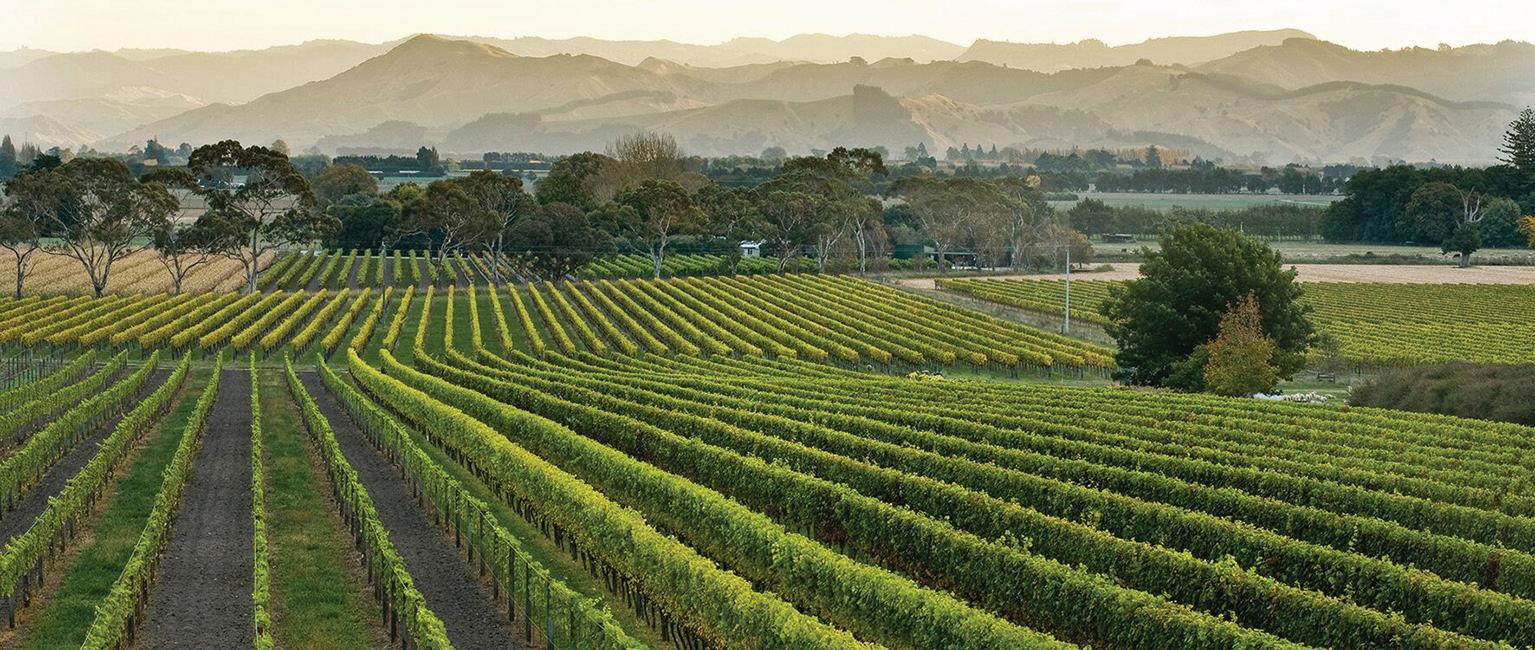
NEW ZEALAND WINEGROWER I FEBRUARY/MARCH 2023 I 17 THE FOCUS
Matawhero
“The less fruit you have to ripen, the easier it gets.”
Kirsten Searle
Wairarapa

It’s 20 years since Wilco Lam arrived in Wairarapa, and he’s seen a “fantastic evolution” ever since. “The Wairarapa now feels it is on the agenda for travellers and New Zealand visitors,” says the Chief Winemaker and Viticulturist at On Giant’s Shoulders in Martinborough. “Many businesses have been able to take the opportunity and feed off this curiosity into our wines and regional offerings.”
Wilco says there’s no doubt that the wine industry contributes to the appeal of the region, and to the influx of people who want to either live or visit here. “But it is definitely not just wine alone that makes the region unique and appealing. The proximity to Wellington, the coastline and mountains provide great diversity and cater for many different needs”, he says.
The region is on “the up and up”, with plenty of scope for winegrowing, but also for growth and diversification of other business opportunities. With that comes “a
The season
growing beacon of opportunity” in the likes of the arts, sports facilities, schools and job opportunities.
In Martinborough, where Wilco is based, there’s a thriving tourism and hospitality industry. Subsequent Airbnb opportunities have tightened housing availability, but if the town can find a way to alleviate that pressure, Martinborough and the surrounding region could maintain a “healthy demographic mix”, says Wilco. “Able to accommodate working people and visitors alike”.
When it comes to the region’s role in the ecosystem of New Zealand wine, Wilco says wine and food lovers, along with tourists, are “lured” by the ease of getting around, and the quality offering at cellar doors and restaurants. “Then there are also those who don’t have a cellar door, or provide limited availability and do seated/ guided tastings by appointment only, who are aiming for the more engaged and/or finer wine consumers,” he says. “Either way, the quality of wine across the region has definitely lifted, mostly because of a new wave of trained people in the vineyards, wineries and cellar doors. But also because of heightened expectations from the consumer, which is the ultimate reason to be growing wine here.”
Wairarapa’s season kicked off with a very early frost, but came through with little damage, says Winemaker Wilco Lam. Good spring weather followed, with fairly warm and sunny days and not too much wind. Flowering in late November was fast and effective, he says. “We are looking at a good year, again, due to good weather.”
Rain in the first few weeks of the year was a “damper” on the season, “but most producers are well prepared for this and we are not in a critical time yet”, says Wilco. He expects fine weather to follow, “so we can finish the season on a high”.
Keeping powdery mildew pressure down was an early season focus, but from veraison onwards botrytis bunch rot becomes the main risk. “However, leaf plucking around the fruit zone alleviates most of the pressure for both,” says Wilco. “Also, any type of spray is easily targeted, and wind and sun keep

the berries and bunches dry. Thanks to experience, knowledge, and setups for pest and disease management, most growers are now well equipped and prepared for adverse weather conditions at this time of the year,” he says. “The disease pressure is heightened, but not yet threatening. I cannot deny it elevates our own stress levels.”
Labour supply in Wairarapa is still below pre-Covid-19 levels, and has proved a challenge in recent years. “However, some of the larger producers anticipated this and were able to invest in mechanisation for this year,” says Wilco. “That allowed some of the labour to be freed up for smaller producers, so it hasn’t been as much of a headache as last year. We are very much looking forward to welcoming travellers and oversees winemakers back into the labour pool again, since they bring another dimension too.”
18 I NEW ZEALAND WINEGROWER I FEBRUARY/MARCH 2023 THE FOCUS
Palliser Estate
“The Wairarapa now feels it is on the agenda for travellers and New Zealand visitors.”
Wilco Lam
The Blind Tasting 2022
The Blind Tasting 2022 highlighted the “sweet spot” behind New Zealand viticulture, from Northland through to Central Otago. There’s variation in growing conditions down the length of the country, but all 10 wine regions entered in the tasting fall into cool climate viticulture, “or just on the margins of it”, says panel leader Emma Jenkins MW. “That is what brings out the best in grape varieties.”
The attributes of natural environment and passionate people are the “anchors” of an industry with a long-term future, Emma says. “Where you have not only the ability to make really fine wine but you have people who are absolutely passionate about getting the best out of their site and their varieties. It’s really neat to have a tasting which is starting to celebrate that focus.”
emerge kaleidoscopically from the glass,” she writes.
Emma led 27 panellists in nine teams at The Blind Tasting, which has been reviewed to offer greater value to members and trade, while selecting wines for levy funded New Zealand Winegrowers (NZW) marketing activity. The team tasted 845 wines in 36 varieties and styles from 10 New Zealand wine regions, with a varietal range Emma sees as a strength of the industry. “It’s not any blinding insight to say there were lots of good Pinots that came out of Central or lots of good Sauvignon that came out of Marlborough,” she says. But her Varietal Summaries report, just released to NZW members, emphasises the lack of regional monopoly on these varieties or any other, with excellent and exciting examples from throughout the country.
It talks of the depth and diversity in New Zealand Sauvignon Blanc, “with top scoring wines hailing from all regions”, and the high performance of Pinot Noir from New Zealand’s smaller regions, as well as subregions in Central Otago and Marlborough. “There was a good range of styles, from charming juicy drink-me-now wines, to thoughtful, elegant Pinots that
Rieslings submitted from throughout the South Island provided “a solid and at times exciting class,” with no regional front runners, while eight of the 10 regions that submitted Chardonnay, delivered top wines. “New Zealand’s climate and environment can produce thrilling Chardonnay the length and breadth of the country”, the report says. The panellists were also “pleasantly surprised” by entries in the small Orange category, with five wines from four different regions. It’s likely to remain a niche area, “but it’s great to see boundaries being pushed and horizons broadened”.
The refreshed programme was launched in August 2022, after a review by NZW into how it benefits members. Previously a closed-door event in Auckland dedicated to selecting wines for marketing activity, The Blind Tasting will now travel to a different region each year, with 2022’s tasting held in Nelson.


NZW Education and Insights Manager Felicity Turner says The Blind Tasting still identifies wines that tell the most compelling story for New Zealand wine, “focused on quality, site and style”. However, the new iteration is set to deliver wider benefits, more directly to members and domestic trade, including the Associate Panellist Programme, which
provides opportunity for all industry members to learn and develop their palate alongside industry peers, and wider trade. Trade panellists are now a large proportion of the tasting, ensuring “more robust results”, Felicity says. “Particularly when one considers that the end audience of these wines is international trade.” Meanwhile, The (Not) Blind Tasting after the formal selection, open to all members and local trade, is an “unparalleled” opportunity for members and trade to taste a snapshot of New Zealand, Felicity says.
The Blind Tasting itself has small flights of 10 to 12 wines to ensure each can be considered closely, and allow more time for discussion and debate. “The idea was to not look at things from a gold, silver, bronze point of view,” Emma says, noting the event included submissions from wineries that don’t typically enter wine shows, because it has a different purpose and focus. “We’re not just looking for something that’s perhaps a shiny, perfect classic gold. We wanted something that captured how we are making our wine here. Because these wines are the ones that are going to go out and be our calling card for the world at NZW events.”
To read The Blind Tasting 2022 Varietal Summaries, go to: nzwine.com/members/ marketing/education/blind-tasting/ varietal-summaries
NEW ZEALAND WINEGROWER I FEBRUARY/MARCH 2023 I 19 THE FOCUS
“The idea was to not look at things from a gold, silver, bronze point of view.”
Emma Jenkins MW
Emma Jenkins MW
Hawke’s Bay
Another wet growing season has tested the mettle of Hawke’s Bay grapegrowers, who’ve fought back with “brilliant” canopy management, says Mark Allen of Mark Allen Vineyard Advisory. Driving through the region in mid-January he was impressed by the care being taken to ward off downey mildew, powdery mildew, and botrytis, following the drenching from Cyclone Hale
in the first few weeks of the year. “They are doing all they can in terms of canopy management,” he says, noting that after a wet summer in 2022, growers are getting better at managing powdery mildew using good coverage with the right sprays.
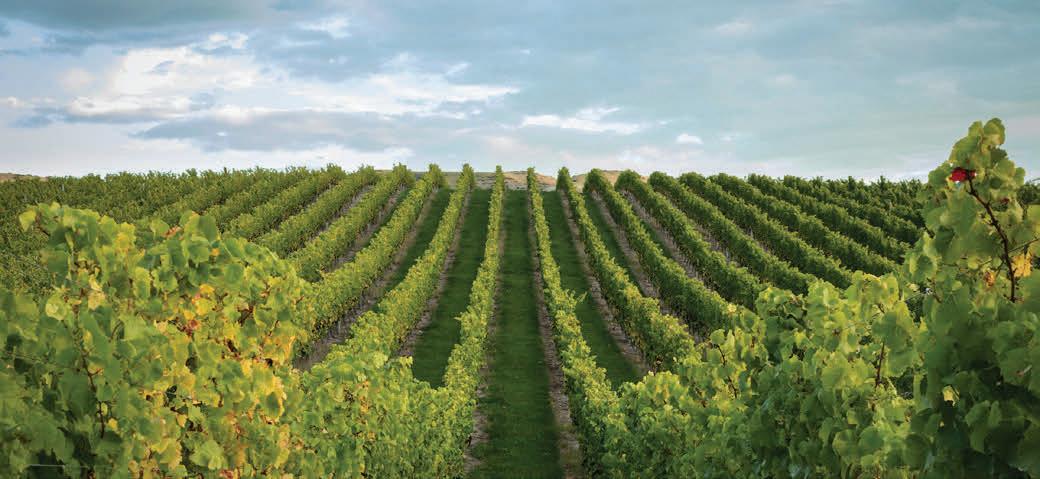
Mark says crops look good, with Chardonnay and Bordeaux reds displaying a reasonable fruit set. But with paddocks of maize flooded in mid-January, he says the
region does not look like it’s in the midst of summer. “It feels like a very early spring and it hasn’t dried out from winter.”
Growers on the Gimblett Gravels will be enjoying the free draining soils, but those on heavier soils face a different picture. “Unless there’s a super dry autumn it would take just a few rain events to kick it all off again.”

Hawke’s Bay growers are “very resilient”,
says Mark, confident they’ll manage their way through the season. He’s also noted a “newfound enthusiasm” for Sauvignon Blanc, which has become a reliable varietal for some companies, selling an East Coast style into the United Kingdom market. The price paid might be lower than some of Hawke’s Bay’s more traditional varieties, he says. “But they produce quite good yields so the net return per hectare is quite good”.
WINE GROWERS WANTED
Seeking from Marlborough Sauvignon Blanc, Riesling and Chardonnay (for Table wine and Methode) AND

Hawkes Bay
Chardonnay (for Table wine and Methode)

If you are interested in this opportunity, please contact:
North Island: Claire Pinker Claire.pinker@pernod-ricard.com
South Island: Mary Plaisted Mary.plaisted@pernod-ricard.com
20 I NEW ZEALAND WINEGROWER I FEBRUARY/MARCH 2023 THE FOCUS
Craggy Range
“Hawke’s Bay growers are brilliant at canopy management.”
Mark Allen
Askerne Estate

In April 1993 John and Kathryn Loughlin transferred their love of wine into a lifetime of winegrowing, buying a 11 hectare paddock on Hawke’s Bay’s Te Mata Mangateretere Road, at the edge of the Tukituki River.
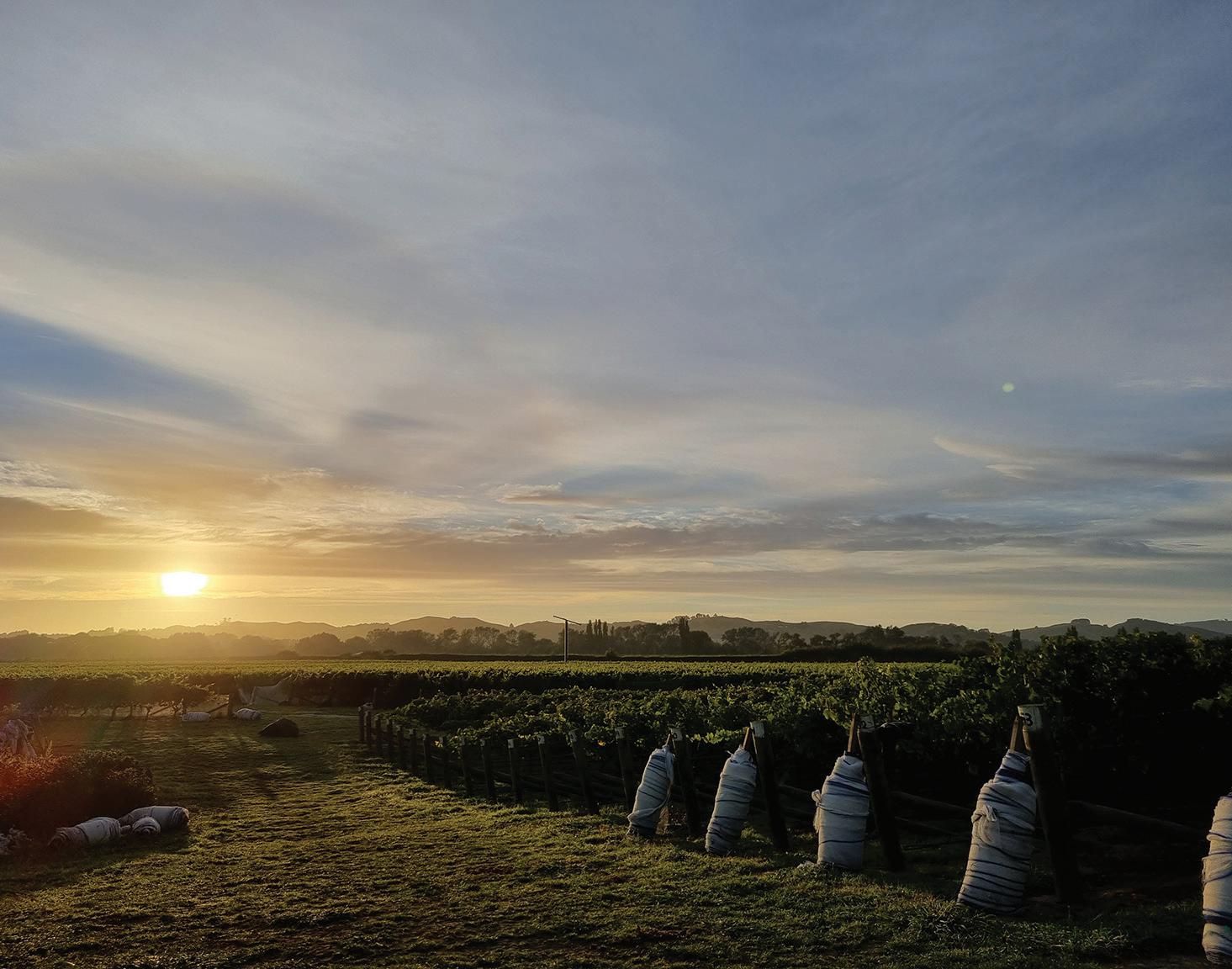
Thirty years on, with two of their three daughters working in the business, Askerne Estate Winery is hitting its straps, with 10 major awards in 2022, a bustling cellar door they expanded “immensely” during the Covid-19 pandemic, as well as the purchase of a neighbouring block last year.
Hawke’s Bay makes “some absolutely fantastic wines that are world class”, says John, who works outside of the business in corporate and governance roles, while Kathryn runs Askerne, named for the Yorkshire village she grew up in. “And they represent enormously good value for money,” he adds, lamenting the fact that a Hawke’s Bay wine can be fetched for a quarter of the price of comparable wines from established wine regions. New Zealand is not a cheap place to produce anything, with its absence of cheap land, cheap labour or cheap capital, he says. “So we have to find ways for people to appreciate the fantastic things we can do and pay a price that reflects that appreciation.” That’s going to require wineries to continue improving their quality and growing their marketing skills, as well as a collective effort “to build the brand and reputation, for the region and for the country”, he says.
Askerne has grown quietly and carefully since John and Kathryn arrived in Hawke’s Bay 30 years ago, having each done an extramural winemaking and viticulture course through Eastern Institute of Technology (EIT), with a “loose idea” of becoming winegrowers. When they moved from Wellington, Kathryn managed the plantings and ran the estate, while John continued to work in business governance, including six years as Chief Executive of the meat company Richmond Limited, five years as Chair of Zespri, and a few years at the turn of the century as Chair of Hawke’s Bay Winegrowers, of which he was made a life member last year.
In 2000 they bought another 9ha bare block, which grew again last year with the purchase of an adjoining 12ha. “One of the interesting things about the wine industry
is you need to have a certain size to have efficiencies of scale,” John says. “But at the same time if you get too big it’s hard to have high prices. You are balancing the need to have an efficient cost structure with the ability to have a premium price . . . marketing is a key part but that’s the balance you have to strike – and it’s not easy.”
Askerne Estate remains “absolutely boutique”, with exports to three countries but the bulk of its sales through the cellar door. For a long time that cellar doorwhich opened in 1997 - was “virtually a room in the corner of the shed”, until they made expansion plans on the cusp of the Covid-19 pandemic. “We came through the first lockdown and had big conversation about whether we press the ‘go’ button or pause and see if it plays out,” John says. “We pressed ‘go’ and have never looked back.”
A great run of wines from 2018, 2019, 2020 and 2021 put the cellar door on a good footing, and community support has well exceeded their expectations, says John as he describes the success of supplying gourmet picnic treats at the cellar door so people can enjoy deli cheese, salami and olives with their wines. “It’s great to see international tourists, but they buy by the bottle. Locals, if you do it properly, buy by the case. So we’re pretty fond of the locals.”
To top off a year of success, Askerne
Estate Winery’s 2021 Reserve Chardonnay took out the Supreme Champion Wine at the Aotearoa Regional Wine Competition, and Askerne won a trophy apiece for the 2021 Gewürztraminer and 2021 Viognier at the The National Wine Awards of Aotearoa New Zealand, also announced late last year.
It’s been a rewarding 30 years, during which time Hawke’s Bay’s wine industry has “changed immensely”. There were major plantings underway when they arrived in 1993, including the Gimblett Gravels and Bridge Pa areas, John says. Plenty of “longstanding players” remain, “but there have been an awful lot come and go over the years as well”, he adds. “People have tried in the industry and not succeeded.” Meanwhile newer entities and “fresh faces” have brought a renewed interest to the Hawke’s Bay region, and the broad range of varieties and styles made give Hawke’s Bay’s wine industry a rich character. “Most things seem to work reasonably well here and some things really, really well.”
John says the collegiality of New Zealand’s wine industry plays a big role in its success. “The collective offering from New Zealand is really fantastic, in that we can all enhance what each other does. No one lets the side down – everyone produces fantastic things that they can do consistently really well.”
NEW ZEALAND WINEGROWER I FEBRUARY/MARCH 2023 I 21 THE FOCUS
Askerne Estate
Marlborough

Marlborough’s flowering in late 2022 was variable, due to cool weather, but Mark Allen of Mark Allen Vineyard Advisory is seeing a good average crop load in Sauvignon Blanc vineyards, and expects yields to be average or slightly above.
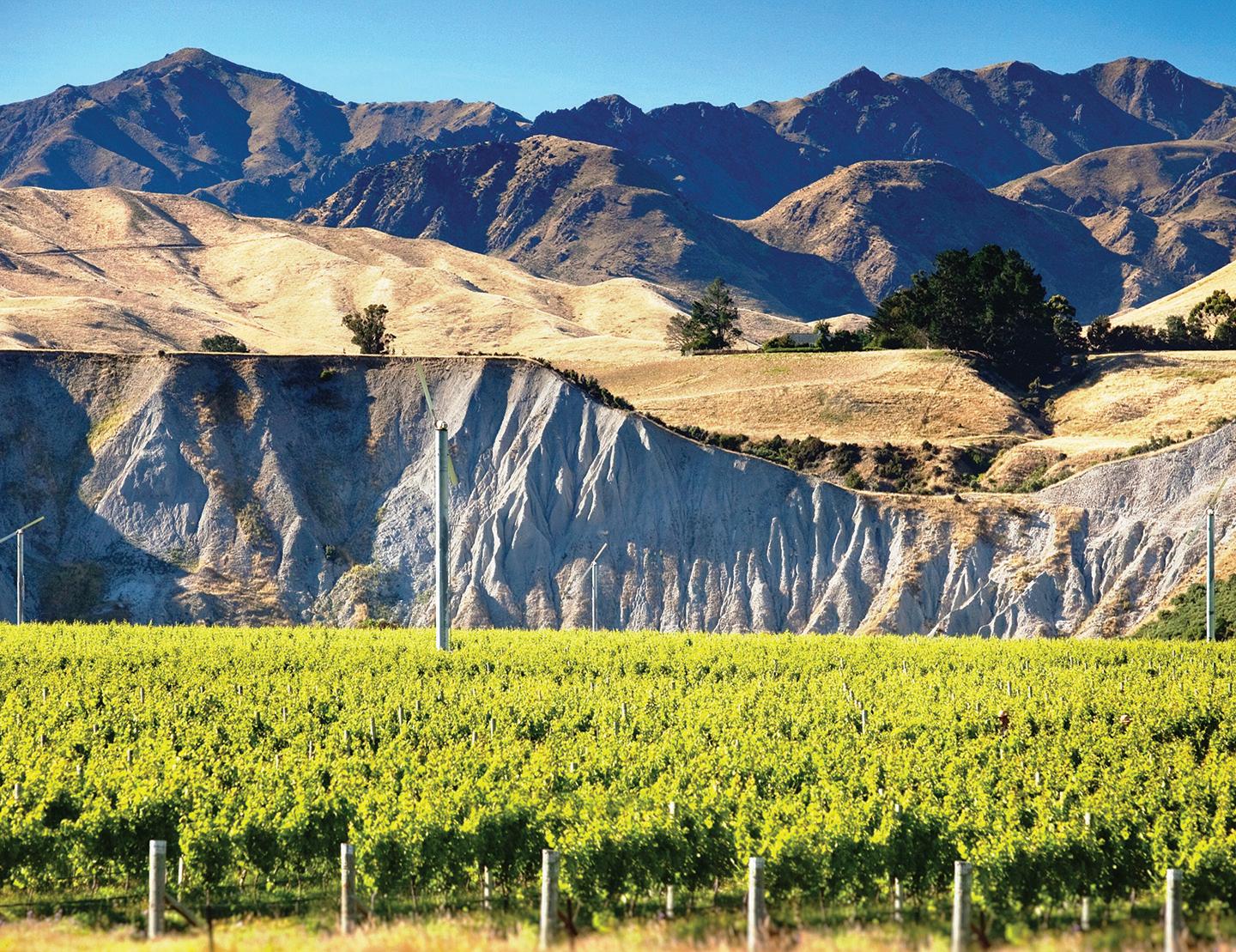
In a good year he expects to see 80 berries per bunch, compared to 50 berries per bunch in a low yielding year, “which is driven by temperature over flowering”. Many of his counts this year are well into the 80s, and he’s also seeing plumped up berries, due to an abundance of rain, “which is what happened last year”.
Like most of the country’s wine regions, Marlborough has been battling disease pressure, with plenty of rain over the growing season. According to VineFacts, the region had 221mm of rain between 1 September and 10 January, including 43.2mm between 4 and 10 January. VineFacts reports 12 botrytis infection periods by mid-January, compared to a typical four, “so they have a really high pre-harvest risk”, says Mark, while noting that growers have been vigilant with spraying and canopy management, with many getting in early with leaf plucking to mitigate the risk. Downy mildew had potential to cause problems, but “hasn’t reared its ugly head”, he says, noting that it’s “just by the skin of their teeth” that Marlborough growers avoided it.
There’s been a jump in the number of growers using mechanical shaking to reduce botrytis risk, with some companies
making it mandatory, says Mark, a longterm advocate for the process. Shaking helps remove trash and small green aborted berries, but also impacts on skin thickness, helping combat rot, he says. “Every block we monitor is 50% better at least with Sauvignon Blanc, so that’s huge.” However, a shortage in harvester and tractor drivers is curtailing the ability of some to get that and other key work done. “Most vineyards are 10-20% down on operators so there’s a lot of prioritising.”
Labour is the biggest issue in Marlborough this growing season, Mark says, flagging the large proportion of inexperienced Recognised Seasonal Employer scheme workers here for the summer season. While some are coming up to speed rapidly, a vineyard manager he spoke to in January told him that he needs considerably more people to complete wire lifting this year adding extra cost and time.
Again that is seeing growers take a strategic approach, with some trimming after the second wire lift “simply to get through the vineyard in time for mechanical leaf plucking”, says Mark.
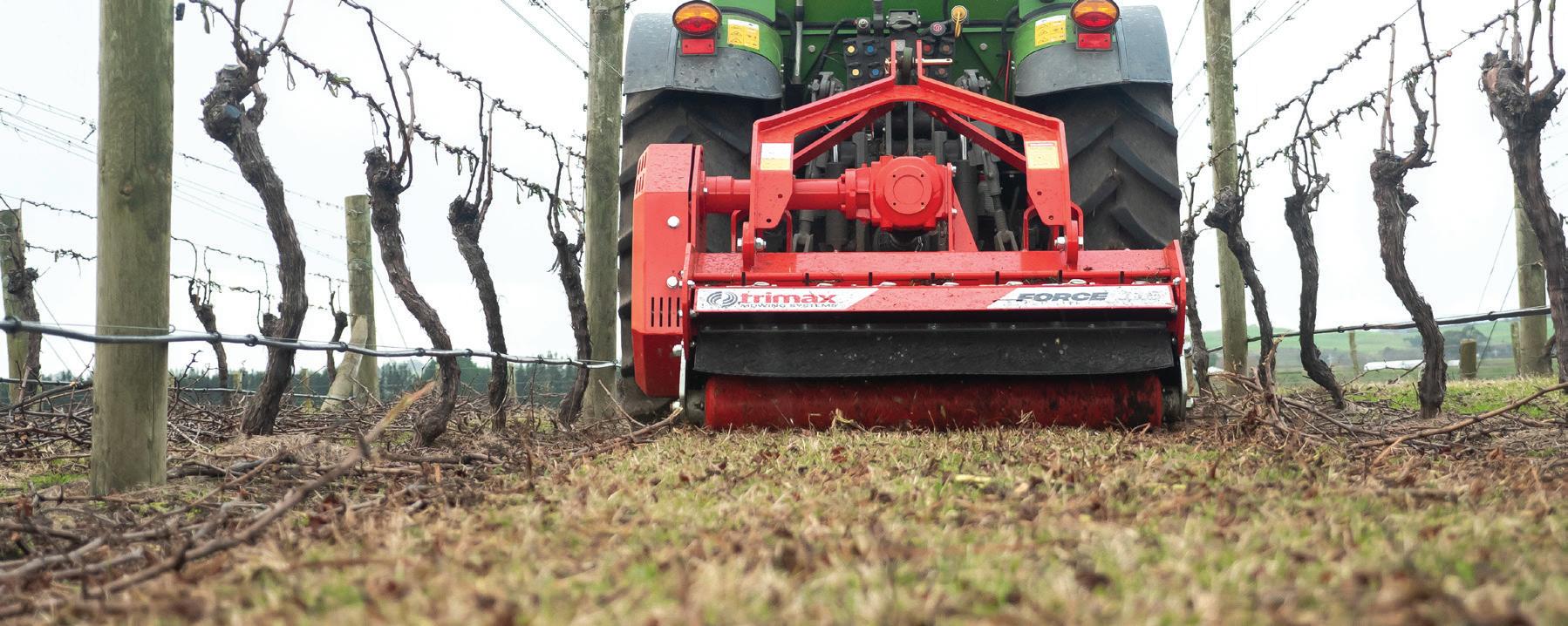
New trimming and leaf plucking machines that blow and suck at the same time are a saving grace, allowing them to get across the ground much faster, he adds. “They are doing a fantastic job of opening up the canopy”.
The region has had normal heat units, but has lacked sunshine - “the cheapest fungicide in the world” - with few classic blue-sky days to dry out vines and kill off spores. That’s also likely to push the season out, says Mark. “And if the crop is quite heavy that will push it out as well.” It will be a little bit of a “knife edge season” towards the end, Mark says. “An Indian summer will be magnificent. That would be great.”
22 I NEW ZEALAND WINEGROWER I FEBRUARY/MARCH 2023 THE FOCUS
The Crossings
“An Indian summer would be magnificent.”
Mark Allen
Mulch and Mow in One Pass!
A family legacy
The roots of Allan Scott Family Winemakers go back to the first days of Marlborough’s wine industry, 50 years ago this year. The company’s founder and namesake was a stockman like his father, until a job in August 1973 - digging posts on Montana’s first 400-hectare development – changed everything. “Having to carve out a whole new life I didn’t know about was probably one of the best decisions I made,” said Allan Scott when presented the 2022 Wine Marlborough Lifetime Achievement Award late last year.
The dry and dusty Brancott development was bewildering, but something about it gelled, and by 1975 Allan and his wife Cathy were planting their own Müller-Thurgau vineyard on Old Renwick Road, among the first 10 Montana winegrowers and industry pioneers. A decade later they planted Sauvignon Blanc on Jacksons Road, and in 1990 forged their own label. All the while they were growing a young family, with their youngest daughter Sara Stocker recalling a childhood amidst the vines and wines and relentless work of an emerging business in a nascent industry.
In their very first vintage growing for Cloudy Bay, she remembers nights sleeping in the truck with her dad, waiting for the ‘toot’ that let them know it was time to collect the gondola and get grapes to the winery. “I thought the winemakers were super gods,” says Sara, who is now co-owner of the family business with her brother Josh. “The worst thing was that from a really young age I liked wine. I liked the taste and it was incredible you could get all these different flavours out of a grape.
Josh went on to become a winemaker, while Sara grew a fascination with the vineyard, merging a passion for the outdoors and environment with a career in viticulture. Those are the realms they remain responsible for as owners, although as a family business they are in boots and all in almost every aspect of operation, she says.
Marlborough is New Zealand’s biggest wine region by far, with more than 29,000 hectares of planted vineyard and a gleaming global reputation, led by the immense fan base for the region’s Sauvignon Blanc. But 50 years on from its beginnings, the industry is still driven by community and collegiality, Sara says. “You know everyone in the industry and we’re all really supportive of each other because the market is big enough… we have the whole world.” Marlborough is “incredibly lucky” to be able to grow wine
that no one else can replicate, “and that’s purely down to soils, climate and probably good old Kiwi ingenuity,” she says. It’s also down to a lot of hard work, “and no one in the industry is afraid of it”.
In recent years, the development of Appellation Marlborough Wine, to protect the integrity of the region’s Sauvignon Blanc, and Bragato Research Institute, to grow the science behind vineyards and wine, are examples of an industry staying abreast of the challenges as it grows. And some things never change, she adds. “Like putting back what you take out and thinking about the next generation and the generation after that.”
For Josh and Sara, being part of a 50year wine legacy is something they’ll never take for granted. “We are just so privileged to be in the position that we grew up here in Marlborough with the industry, and have learned so much.”
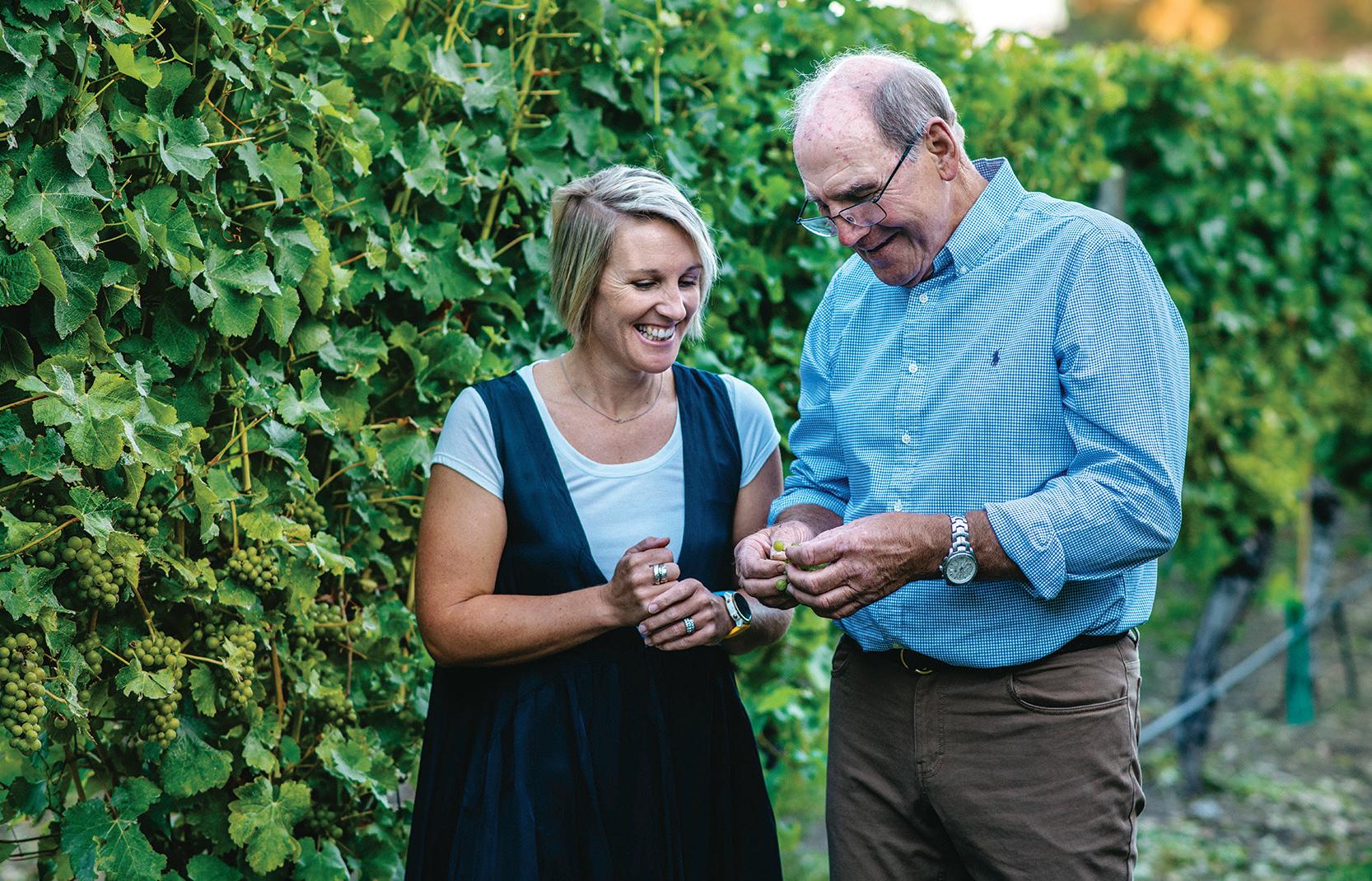
Agriculture and Viticulture



Machinery Sales & Service Specialists


NEW ZEALAND WINEGROWER I FEBRUARY/MARCH 2023 I 23 THE FOCUS
Sara Stocker and Allan Scott
Zealand agent for Netwizz and Olinet netting applicators. Slim, standard and hydraulic mast
available.
225
jeremy@agrivit.co.nz Parts:
03 572 8787 |warrick@agrivit.co.nz 29 High Street,
7204, Marlborough | 03 572 8787 | info@agrivit.co.nz | www.agrivit.co.nz
New
models
Sales & Service: Jeremy Watts 021 446
|
Warrick Meiklejohn
Renwick
Nelson

Nelson grape growers escaped the rain pressure faced by many wine regions in the first few weeks of the new year. And while warmth and humidity have been a challenge in terms of disease pressure, “I am not seeing anything of significance, touch wood,” Neudorf Winemaker Todd Stevens says on 19 January. “So far so good.”

At his vineyards in the Upper Moutere, flowering was moderate. “Certainly not a massive crop and it wasn’t a shocker either.” There’s some variability in some blocks, impacted by inclement weather over flowering, but on the whole it’s a solid fruit set, he says. A line up of warm sunny days in mid-January are set to continue, “and we will take all those credits and bank them”.
Down on Nelson’s plains, Neil McCliskie of Alandale Orchards, says despite some concerns about wet and changeable weather around flowering, fruit set in his Pinot Gris and Sauvignon Blanc blocks has been surprisingly good, with “fabulous berry numbers”. His third variety, Pinot Noir, is more disappointing, but plant health across the board is very good, says Neil. “Canopy growth has been strong, so things look really, really well at the moment.”

When it comes to labour, Nelson is not back to pre-Covid levels, “but it’s certainly better than last year”, Todd says. “Obviously now that borders are a little bit freer, we haven’t struggled as much for labour, but it’s still not easy.” Wine is competing with hop producers, orchardists and other industries for the limited resource. However, by paying a little more and offering onsite accommodation, they’re managing to meet the market. “If you’re willing to be flexible, they’re there”, but companies that stick to the
“old ways”, including the minimum wage, “might be struggling”.
Nelson has been part of the New Zealand wine story for a long time, as “something of a quiet achiever”, Todd says. It has an eclectic and broad range of varietals, which can make it hard to grasp what the region is known for. “But I suppose diversity is actually a good thing. You just need to find a way of telling that story… I like to think we’re a small, diverse interesting player that adds a bit of colour to New Zealand’s industry.”
24 I NEW ZEALAND WINEGROWER I FEBRUARY/MARCH 2023 THE FOCUS
Blackenbrook Vineyard
Good growing at Neudorf
Great things come in small packages, says Rosie Finn, from the midst of a small vineyard in one of New Zealand’s smallest wine regions.
With around 1080 hectares of grapes in an array of varieties, Nelson’s strength is in its size, quality, and “eclectic” nature, says the self-described “global cheerleader” for Neudorf Vineyards. She’s also a pretty rowdy cheerleader for the region and its myriad industries, from arts to apples, hops to dairies, craft beer to boutique wine. “It’s a real mix of people and agriculture and creatives, and I think that is emulated through the wine itself,” Rosie says, rolling off the names of people producing amazing wines in a growing array of varieties and styles. Coming from a region not known for one particular grape is a double-edged sword, making market cut-through challenging on one hand, while escaping pigeonholing on the other, she adds. “We as a region handle that really well.”
Certainly Nelson has regularly hit the headlines for extraordinary wines, including the Neudorf Home Block Moutere Chardonnay, which scored the first ever 100 points awarded by Bob Campbell MW, and the Home Vineyard Moutere Pinot Noir, which made the cover of Decanter magazine. People tend to think Nelson’s wine region is bigger than it is, “and I think that comes from punching above our weight”, Rosie says. She was born 14 years after her parents, Tim and Judy Finn, planted a small Upper Moutere vineyard, with plans to do the best by the land. There were few vineyards in the country and just one other in the region, planted by Hermann and Agnes Seifried in 1973, and Judy is still astounded at the mix of bravery and naivety that drove them. “We have come a long way since the long drop, the home-made grafting machine, and the armchair tied to the back of the tractor where I held two water guns to ensure young vines
survived,” she said late last year, when the company marked the release of its 40th vintage “Today’s Health and Safety would have had a fit.”

It’s still a brave industry, says Rosie, applauding the pioneering nature of its founders as well as the innovations of new labels like Abel, Unkel, and Alex Craighead. “They’re doing exciting new innovative styles as well, so I think it’s a really lovely mix.” She loves the absence of monoculture in her region, which is perhaps best viewed at the Moutere pub on a Friday night, with hop growers, beer brewers, cider crafters and winemakers amongst the mix, along with local potters and painters. Or via the Moutere Artists Collective, where everything from Neudorf Wines to willow baskets are celebrated and promoted, including at local open days held a few times a year. “We all work together because they are all such
complementary products,” says Rosie, again raising a cheer for another dozen producers, from black garlic to smoked duck.
Neudorf Vineyards, now led by Rosie, alongside General Manager and Winemaker Todd Stevens, still has the wellbeing of its land and environment at its heart, with organic certification, solar energy, energetic compost piles, and dry farmed vineyards.
When she was a child Rosie referred to the vineyard as a sibling, and as a teenager, she promised she’d never work in the family business. But now she and Todd are building strategies for five and ten years out, grateful to be working with such a remarkable business. “I am lucky enough to work with a brand that I implicitly trust, but that has got such good foundations already. We’re focussing on future proofing the company for future generations.”
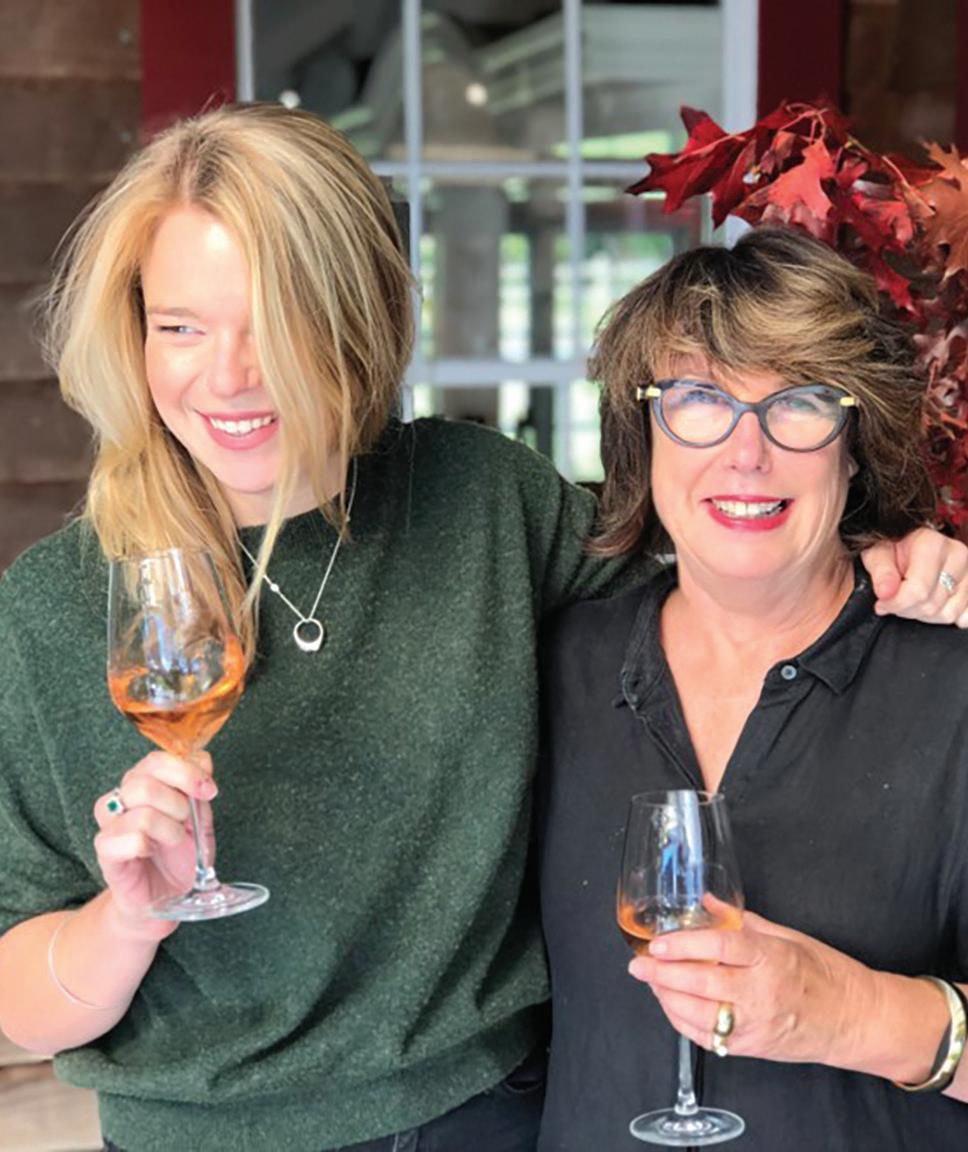
NEW ZEALAND WINEGROWER I FEBRUARY/MARCH 2023 I 25 THE FOCUS
“It’s a real mix of people and agriculture and creatives, and I think that is emulated through the wine itself.”
Rosie Finn
Rosie and Judy Finn
North Canterbury
A dry lead up to spring slowed early canopy growth in North Canterbury vineyards, while cool and wet weather impacted flowering, says Greystone Viticulturist Mike Saunders, who is “cautiously optimistic” in the lead up to vintage.

Lighter crop loads proved fortuitous given cool weather continued through to the start of summer, and balanced canopies have done well in the moderate temperatures enjoyed in early 2023. “I am really happy with what we are seeing in terms of the fruit that is there,” says Mike, who is Chair of North Canterbury Winegrowers Association. “Fruit quality looks exceptional and I know some blocks around definitely have some good yields on them.” He says bunch numbers are a bit variable, particularly in Sauvignon Blanc, but Pinot Noir, Pinot Gris and Chardonnay look strong for the region. “It’s really encouraging, and the biggest thing is that the fruit is really clean. There is very little disease recorded around the region at all.”
When it comes to labour supply, the region has a “really diverse” semipermanent workforce, with a pool of summer vineyard workers able to move on to work with a major pine seedling company after harvest, before returning for pruning. “The great stat was over Covid where the Hurunui district had the highest percentage of essential workers in the country,” Mike says. “That was down to farming but also viticulture in the region.”
North Canterbury growers work “right on the edge” of vineyard viability, with high frost risk, along with heat units “on the cusp” of what’s required to successfully grow grapes. “It’s such a marginal region,” Mike says. So they’re not in the business of chasing yields. “We are one of the last true cool climate regions, along with Central Otago. That means we do grow exceptional grapes and make magic wines.”
North Canterbury is also right on the edge of a major city, with just 60km between urban wine lovers and rural cellar doors. Locals – including those cycling the Waipara Valley Vineyard Trail – visit cellars and restaurants like Greystone’s,
which is booked out most weekends, while Christchurch’s burgeoning food scene is loyal to local producers, with wine lists that support New Zealand’s “coolest little wine region”. If anything, the Covid-19 pandemic strengthened the interplay between the city and its vineyard backyard, Mike says, noting that the vast majority of people at the North Canterbury Wine & Food Festival (see page 10) will come from the city. “That’s super cool and shows the backing we have got from Christchurch.”
The area will soon trade its ‘coolest’ tagline for one that underscores how unique North Canterbury’s wines, wine folk, and neighbouring businesses are. “What we are focussing on at the moment is just how unique the region is in its own right,” says Mike. “We talk about the uniqueness of the country, but we grow exceptionally aromatic Rieslings, which is what the region was probably focussed on, and then we have these clay hillsides with Burgundy-style Chardonnay and Pinot, and then going down into the Glasnevin Gravels, which are a different soil type again, making these amazingly aromatic Sauvignons. Then on to some barrel fermented Sauvignon and bottle conditioned Pét Nat as well. So wine-style wise we produce it all. We’re not focussed on one variety; we have the unique soil type and weather microclimates to produce a range of varieties really well and make a really diverse range of wines.”
It’s a point of difference worth
celebrating, he says. “That thread of uniqueness travels through the people and the winemakers and the viticulturists of the region. We’re a really diverse bunch of characters.” And it’s true too of other operators, from craft brewers and gin distillers to tourism ventures working with wineries, he adds. “The big thing for us is just how unique and diverse the region is, and it’s definitely something we will be focussing on and using as a marketing tool going forward.”
The region’s success is in its diversity, agrees Jack Hill from The Bone Line. “We have a range of soil types and microclimates across the region, so what suits one vineyard may not suit another. It’s an exciting region to visit because of this as you get to visit many different vineyards with different ethos and approaches to making wine, and you will also get to taste a range of different varieties.”
Many operators have developed their own niche, “making us less competitive with one another”, he adds. “We all recommend each other’s cellar doors and wines to visitors hoping that everyone finds what suits them best.” The industry is made up of dedicated people working hard and getting their hands dirty, including a number of family businesses like The Bone Line. “There may not be as many multimillion-dollar cellar doors as other wine regions, but what we do have is passion, hands on experience and tasteful well-styled wineries with everyone
26 I NEW ZEALAND WINEGROWER I FEBRUARY/MARCH 2023 THE FOCUS
Mike Saunders. Photo Jim Tannock
“I feel like there is a collaborative approach these days.”
Jack Hill
showing what’s special about their corner of the region.” Being known as North Canterbury instead of Waipara brings a broader range of wineries into the stable, which is advantageous to them all, Jack says. “I feel like there is a collaborative approach these days.”

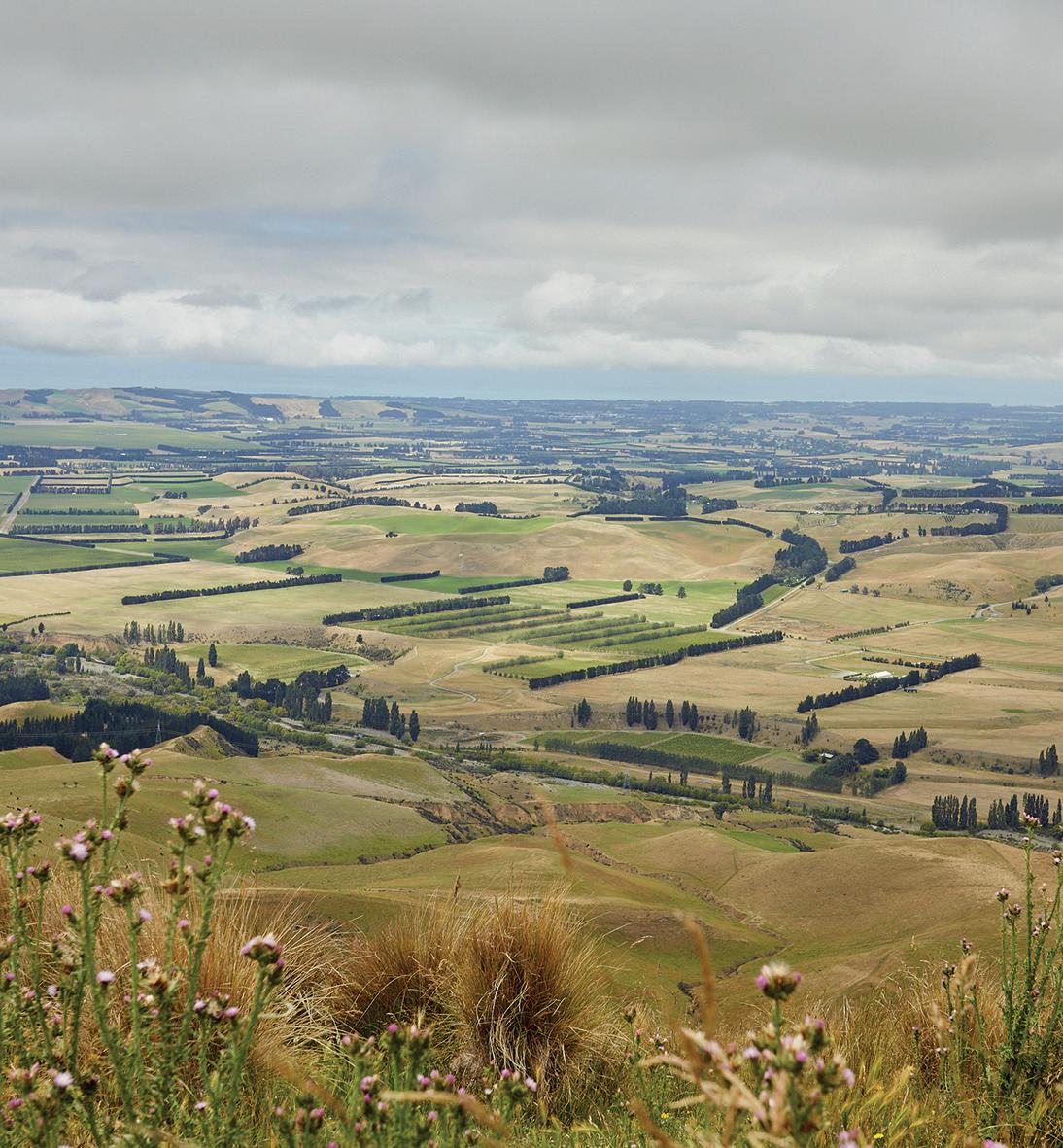
The brown marmorated stink bug is a pest that infests homes, ruins gardens, stinks when crushed, and is almost impossible to get rid of. It could also destroy our fruit and vegetable industries. It’s not in New Zealand yet, and we want to keep it that way. So if you see one, don’t kill it. Catch it, take a photo, and call us on 0800 80 99 66.
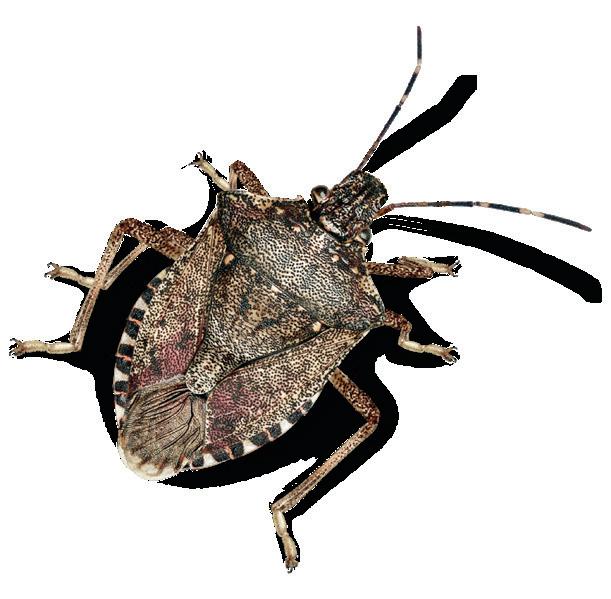
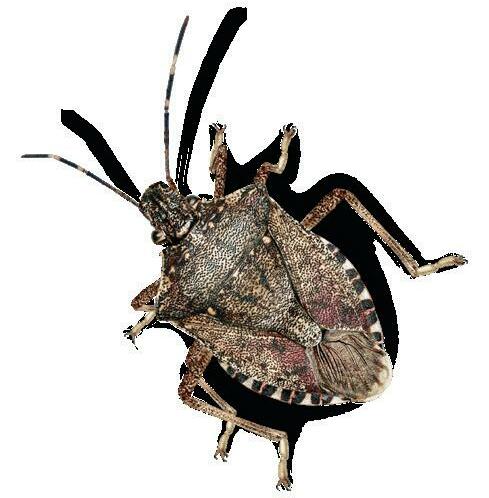
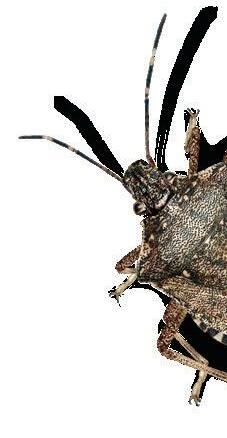
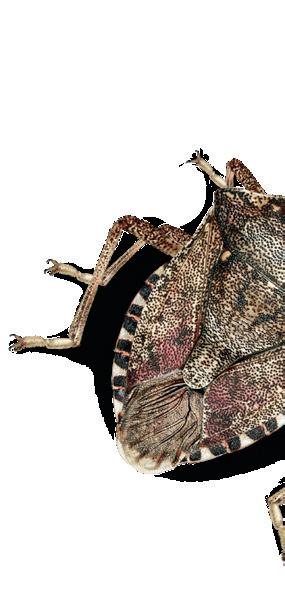

For more information (including how to identify the bug) visit biosecurity.govt.nz/stinkbug






NEW ZEALAND WINEGROWER I FEBRUARY/MARCH 2023 I 27 THE FOCUS
MPB0160 Stink Bugs not shown actual size. (Actual size approx. 1.7cm long)
The Bone Line
IT WOULD BE STINK IF THESE GOT
Look for black & white banding on the antennae Look for black & white banding on the sides of the abdomen Certificate in Professional Wine Knowledge, Level 5 Full time or Part time option available, NZQA approved & student loans • Starts: 29 April 2023 View our website for details Rated excellent on Trustpilot www.foodandwine.co.nz Viaduct, Auckland Quarter Page Portrait - Jan 2023.indd 1 25/01/23 11:55 AM
INTO NEW ZEALAND
Central Otago

Central Otago has enjoyed “almost picture perfect” vintages in recent years, and 2023 is shaping up to be another, says Viticulturist Timbo Deaker. “We’re doing really well. I’m convinced that most grapegrowers’ personalities are solar powered, and when the sun comes out, we’re happy.”

In his VineFacts for 19 January, Plant & Food Research’s Rob Agnew notes that as an island nation, seasonal temperature patterns are generally reflected in most regions. But Central Otago’s distance from the coast means its temperatures can be “disconnected” to what is happening elsewhere. “All of us living outside Central Otago are envious of the 30 days that Cromwell has recorded temperatures above 25C from 1 December 2022 to 17 January 2023, with 7 of those days above 30C,” he says in VineFacts number 17.
Unlike most of the country’s rain besieged regions, Central Otago is drying out rapidly, with shelter belts starting to turn and drop leaf. “Canopies are drying out and we need to be a bit more mindful of irrigation,” Timbo says. “We have big old hot days at the moment and no rain in the forecast.” Meanwhile, the diurnal variation has been extreme, with a 26C swing in temperature between day and night on most of the vineyards he contracts to in the second and third week of January. “That’s remarkable this time of the year.”
Timbo says fruit across all the subregions is “incredibly clean”, but notes that turbulent weather over flowering resulted in a lack of uniformity in bunch architecture in some

cases, with certain areas more affected more than others. “Mother nature’s thumb print this year will be a little bit more than we would like,” he says, comparing the situation to 2013, where Pinot Noir had the potential for green, red and black flavours “in one bottle”. A focus of the viticultural team at the moment is to avoid that spectrum to make Pinot as “uniform as possible”, he says. The situation makes crop estimates harder to ascertain, “but if they’re the only things we’re complaining about it’s probably a lot more low-level than everyone else”, Timbo says. “I think we’re in line for a really nice vintage.”
Winemaker Matt Connell, of Matt Connell Wines in Cromwell, says there was plenty of soil moisture earlier in the growing season, and January has brought hot days. “It was pretty green earlier on and now it’s looking a lot drier.” He’s welcoming the diurnal fluctuations, noting that years like 2018, without a chilling off in the evening, make for “trickier” vintages. “If we get cool nights, we retain acidity and freshness in the wines, and that’s definitely what I am looking for.” And they’re getting that, along with dry conditions. “I’m definitely not complaining that it’s not raining much.”
Central Otago did get an Antarctic snap in November, when some Chardonnay had hit budburst, but the region’s vineyards were largely unscathed, says Matt. “If it had been a week or two later it may have been a different scenario, but I think everyone got through that very well.” There’s hen and chicken in bunches in some pockets, but there’s been a good fruit set across all the subregions, with “nice” bunch sizes and pretty even crops, says
Matt. “Everyone will be happy… I think it’s got the makings of another good season for us, fingers crossed.”

The labour situation for wineries has improved greatly on the past few years, with backpackers returning. “This is the first year I have had an abundance of people applying for vintage positions which is fantastic,” Matt says. “That takes some pressure off, rather than relying on friends and family.” There are issues with housing winery workers, given the crossover between stone fruit and grape seasons, which is a challenge. “But it’s a good challenge to have, that we have labour I guess.”
Timbo says a second wave of Covid-19 took its toll on vineyard staff numbers in January, “but I suspect the rest of the country is dealing with the same thing”. He’s changed the way he manages his operation this season based on a mid-winter report on labour supply. Knowing there’d be a shortage for horticulture in the lead up to Christmas, then a more abundant supply in January, he changed his chemical use and concentrated his labour force on wire lifting and shoot thinning, instead of bud rubbing. “It was good for us to have a few strategies ahead of time to head off that lack of labour,” he says, calling it one of many “forced innovations” in recent years.
Meanwhile, a burgeoning interest in sparkling wine has eased some of the labour pressures in recent years, extending the season by around 20 days. “We managed to start harvest with a much bigger crew and hold them for a much longer period, really based on these bubble projects.”
28 I NEW ZEALAND WINEGROWER I FEBRUARY/MARCH 2023 THE FOCUS
Prophet’s Rock
Osgroseed.co.nz sales@osgroservices.co.nz Jeremy - 027-263 9885 • 9 years proven experience in providing growers cover crop solutions • Cost effects cover crop options
The secret to the future success is taking care of a vital part of the growing system – the soil. Working with nature through planting a diverse range of plant species to naturally overcome today’s challenges
Well Red
Central Otago’s role as a red grape grower is more important to New Zealand wine than ever, says Viticulturist Timbo Deaker. “We are seeing Pinot Noir and more latterly Chardonnay being pulled out of Marlborough at a rate of knots.” One consequence is more Marlborough companies looking to Central Otago for their Pinot Noir, exacerbating an already short supply. Combined with the rise of Rosé and growth of Pinot going to Sparkling wine, demand is high “and we do not have enough grapes for it”, he says. “That’s a really positive position to be in, but it does create problems for our wine industry.”


The region has been adding 8% to 10% to its planted area each year since 2011, while still growing its price point by 3.5% to 4.5% per annum, says Timbo. “So we’ve been planting sustainably without compromising the regional price point.” But they have struggled to keep up with red grape production. “What does that mean for us as a region? And what does it mean for New Zealand as a Pinot producer? Where are we going to go when there is a red grape shortage?”
Expansion will continue, and he hopes developers consider the needs of Central Otago’s modern growing requirements, including vineyards that require less labour input, with a whopping 62% of the budget per hectare of grape growing in Central Otago currently associated with labour costs. They also have the challenge of designing vineyards that will be “organic proof”, or at the very least able to be glyphosate-free, he adds, describing land with more organic matter and fewer rocks. “I think in the future we will be asked to farm without glyphosate, led by the wine consumer. We’re the only region in New Zealand that hit its target by 2020 of 20% of viticulture farmed with organic certification. We want to increase that but we need to stop and talk about what areas in Central Otago can we farm organically.”
Waitaki


Two hours and a climatic chasm from Central Otago, Waitaki has a its own place in the tapestry of New Zealand wine. Te Kano Winemaker Dave Sutton works with grapes from the continental climate of Central Otago, and the maritime climes of its eastern neighbour, so sees the striking difference daily. “When I left Central this morning it was 24C and when I got here it was 16C,” he says, describing Waitaki’s season as similar to other wine regions influenced by La Niña, with more cloud cover promising a longer harvest.
Like Central Otago, Waitaki’s soils are derived from big geological
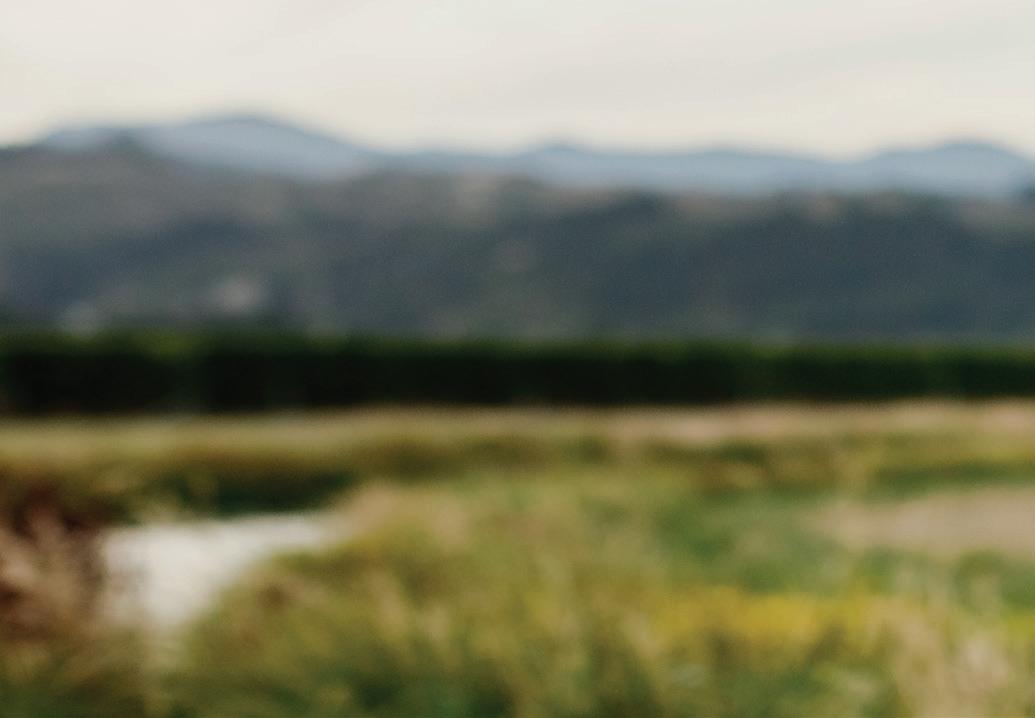
events, but much of it was under sea before that uplift, so there’s limestone with glacial material, says Dave, excited by the impact of that unique soil mix on their wines.
Working in a region with just 59 hectares of planted vineyard has its challenges, particularly because it’s “not on the radar” of a lot of service providers. “So sourcing labour though contractors is challenging, and equipment servicing and repairs is difficult.” People have to be more resourceful, he says, “But most people here have a No.8 wire mentality and manage to find unique solutions to unique problems.”
GRAPES WANTED
Our family-owned winery needs new supply partners, all varieties considered.

NEW ZEALAND WINEGROWER I FEBRUARY/MARCH 2023 I 29 THE FOCUS
Dave Sutton
love
Please
viticulturist
Competitive market rates We offer: Long-term supply options, with favourable cropping and payment terms Expert viticulture advice
We’d
to hear from you.
contact our
Matt Fox on 027 463 2457, mattfox@scvl.co.nz.

32 I Bird Scaring New technology 34 I Verjuice Project Unripe for the picking 36 I Field Grafting Vineyard demonstration 37 I BRIght Ideas Rootstock trial
The Science
PhD Précis
When findings from the New Zealand Winegrowers Pinot Noir project suggested the term ‘green/herbaceous’ could have negative quality associations, there was a call for investigation into the ambiguous description. Sensory scientist Amalia Bernardes Borssato is pulling apart ‘green’ and ‘herbaceous’ to get a handle on what these characters represent, as well as their individual roles in sensory perception of Pinot Noir from experts and non-experts alike. In this Q&A, Amalia offers insights into her PhD research: The importance of green: Understanding green and herbaceous characters in Pinot noir wine and their role in driving judgments of perceived quality.
What led you to become a sensory scientist?
My curiosity to understand individual mindsets and my desire to help people make smart, healthy choices regarding their food and beverage consumption led me to sensory science. During my master’s in food quality and consumption at the University of Campinas-Brazil, supervised by Dr Helena Bolini, I had the opportunity to delve into and apply a series of sensory evaluation methods testing different product categories such as beverages, snacks, and dairy products. At that time, I realised how powerful and unique the human senses and sensometrics are at helping the industry reduce expenses and at the same time develop healthier and tastier products that make consumers happy.
Why is wine a good avenue for sensory studies?
Wine is a complex product appreciated worldwide. However, wine appreciation is subjective depending on the type of wine and who is drinking it. Various nuances of aromas and flavours coming from different components such as fruity, floral, green/
herbaceous, or spicy notes can be perceived differently by individuals. Besides a wine’s organoleptic characteristics, the ‘3V’s’ of a wine – varietal, vineyard and vintage –play an important role in its performance in terms of the perceived quality. Sensory studies involving cognitive and affective dimensions (e.g., what people think about specific wine phenomena and how they feel when they perceive it) allow researchers to access reliable information about wine and correlate with relevant viniviticultural aspects to its identity and commercial value.

What influences an individual’s perception of a wine?
The concept of wine quality is a multidimensional construct based on personal beliefs and previous experiences. In line with that, prior research has demonstrated that consumers from varying levels of domain-specific expertise can have different precepts and concepts regarding key wine phenomena. In order to have a representative population of potential wine consumers and investigate the expertise-perception effects, a topic of scientific interest, the present study considers two groups of participants, namely, wine professionals and standard wine consumers.
What’s the good and the bad of green and herbaceous, according to your research?
Initial results indicate that, based on both wine professionals’ and wine consumers’ perceptions, the most influential descriptors related to green and herbaceous notes driving positive wine quality perception were ‘stemmy/whole bunch’, ‘freshness’, and ‘smoky’. On the other hand ‘reductive notes’, ‘tomato stalk’, and ‘fresh herbs/rosemary/ sage/mint leaf’, respectively, were the main descriptors driving negative perception of quality in New Zealand Pinot Noir wines
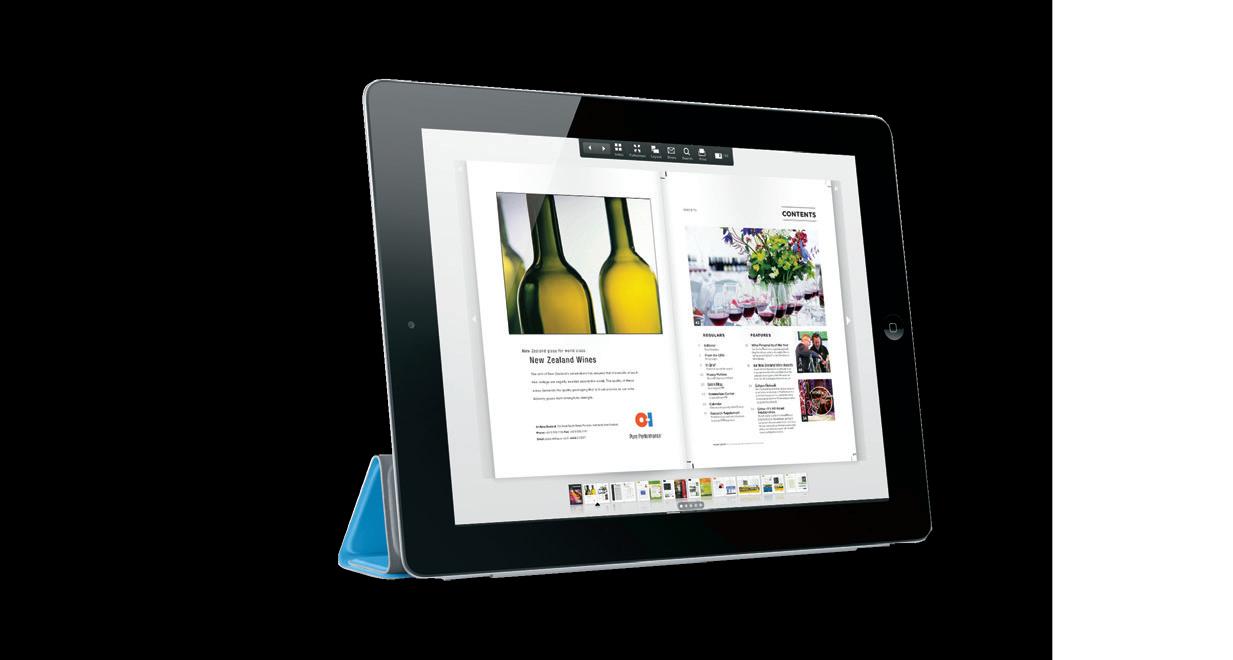
READ IT ONLINE


that were evaluated in this study. The experiments proposed in the PhD Program are still undergoing, data are still being collected and analysed. I am excited about publishing a wider picture of our work very soon.
Where to from here?
We expect in due course to associate the sensory data produced within this project with sensory data from the wider national Pinot Noir research programme, as well as with viniviticultural aspects (e.g., wine price, wine method of production) and with data produced by researchers in other disciplines (e.g., chemistry).
Who has helped you in your work?
I feel blessed to have my family’s support in my career goals overseas. I am grateful to have funding from Bragato Research Institute (BRI) and Lincoln University for this research. There are also key people involved in this project, who are either on hand or behind the scenes; without their help the work at this stage could not be done: Dr Wendy Parr, an enlightened human being and inspiring professional that I have as a mentor; my supervisor Dr Damir Torrico, a very talented person who teaches me the true meaning of commitment and resilience; my assistant supervisor Dr Leandro Dias, who patiently and kindly helps me with his expertise in winemaking and wine chemistry; staff from Lincoln University, Bragato Research Institute, and Plant & Food Research, who efficiently help me with the logistics or execution of wine experiments and events; all wine professionals and consumers who voluntarily took the time to participate in our experiences; and winemakers who provided us with wine samples or important information about wines.
NEW ZEALAND WINEGROWER I FEBRUARY/MARCH 2023 I 31 THE SCIENCE
Photo on left, Amalia Bernardes Borssato
www.nzwinegrower.co.nz GENERAL NEWS OPINION PEOPLE PROFILES REGIONAL UPDATES AND MUCH MORE...
Reading the magazine online has never been easier.
NOW
Scare Tactics
Robotic technologies applied to bird scaring
Small autonomous robots are being trialled as bird deterrents across Marlborough this growing season as the developer looks to demonstrate their utility in the role. Josh McCulloch is the founder of Autonabit, a start-up building small autonomous robots for vineyards. The robots use bird bangers, sirens, kites, and reflectors to protect the vines.
Josh explains that because they are autonomous, the robots are always moving and don’t require manual repositioning. At the end of the day’s operation, they return home to charge autonomously. “We aim to massively reduce the economic
bird deterrents. Throughout the current growing season, he is deploying at least five autonomous robots as part of the trial programme, working with wine companies such as Wither Hills, aiming to prove how the vehicles offer a “set and forget” approach to bird protection.
and environmental impact of operating a vineyard. If we start deploying small robots in vineyards, we can eliminate the number of tasks that tractors and tractor drivers have to do,” Josh says.
“Our Autonomous Vineyard (AV) vehicle is a four-wheel drive, electric vehicle, and it can navigate autonomously in the vineyard. We’re this season going to be operating in a bird management role. On top of that, we are currently prototyping an under-vine mower. So that’s where we get into eliminating the environmental and economic impact of operating tractors.”
While he is based in Christchurch, Josh grew up amongst the vines in Rapaura and realised the robotics technologies he was developing through the University of Canterbury had obvious applications as
The current prototype of the AV is the third iteration of the design, which features a more robust vehicle design and more secure communications connectivity. The day before Winegrower Magazine’s visit, the robots were driven continuously for more than seven hours, covering 42km, using an estimated 20 cents of electricity.


Before the AV is deployed, the vineyard is surveyed, and the vehicles then use GPS for navigation with a camera on the front to avoid unexpected obstacles. The robot’s software is built around the Robot Operating System (ROS) framework, with application-specific code developed to tailor it for vineyards. A dashboard provides control of deployed robots, with the updating camera view showing each vehicle’s current surroundings.
One of the engineering challenges Josh faces is elevating the GPS antenna above
the level of the vine canopy for improved navigation reliability, an aspect that is better addressed by the latest design. Josh says while every vineyard manager has their own methodology for bird deterrence, the robots were designed to employ existing tools such as kites, sirens and gas guns. “We’re not trying to sell you on a new way of doing it – you can use your existing tools, but now you can cut down the management of them. For a larger operation, say 30 hectares, you might have two or three robots and put the bird banger on one, the kite on the other and the siren on the third. And then each day, they might do a different block.”
Operators can reconfigure coverage through the dashboard, allowing the robots to cover different areas as needed. In a bird-scaring context, the fact that the robots remain on the move is a deterrent in and of itself.
“I’ve heard stories about birds actually sitting on bird bangers. I think maybe they learned the cycle – they know they can sit there for the next 10 minutes before it goes off. So, we’re hoping that by keeping things moving, we can keep the birds on their toes.”
32 I NEW ZEALAND WINEGROWER I FEBRUARY/MARCH 2023 THE SCIENCE
“We aim to massively reduce the economic and environmental impact of operating a vineyard.”
Josh McCulloch
TONY SKINNER
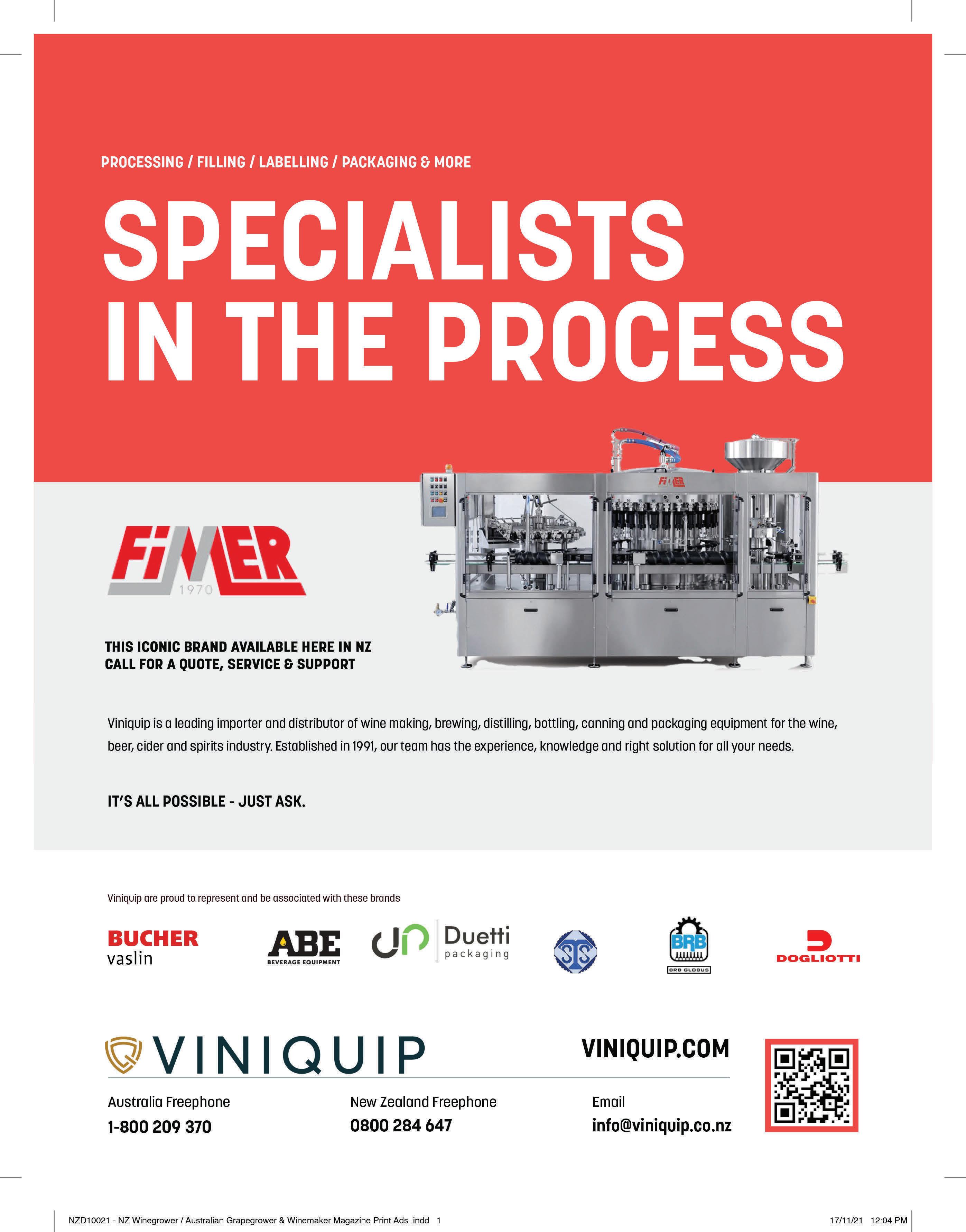
Verjuice Research Opportunity unripe for the picking
With roughly 72,000 tons of grapes dropped from New Zealand vineyards each summer, the wine industry could be tapping into a verjuice income stream, says a sensory expert.
Dr Amanda Dupas de Matos is researching consumer perceptions and preferences around the unfermented grape juice, which is typically used as an acidic condiment, but increasingly in beverages. “The utilisation of thinned unripe grapes represents a great opportunity for New Zealand wineries to increase their income by commercially using a material that is normally discarded, converting a waste material into a high-value product,” her research project reveals.
suggested uses.
Amanda, who is Sensory Research Officer at the Food Experience and Sensory Testing (Feast) laboratory at Massey University, says understanding consumer attitudes could help propel production, marketing and sales of verjuice by New Zealand wine companies. One pertinent finding is that people want the verjuice packaged according to its purpose, such as a vinegar-style bottle if it’s intended for dressings and marinades, and a wine or beer-style bottle if it’s destined for a cocktail or non-alcoholic beverage. They also want label information that sheds light on the product, such as alcohol-free, a product story, sensory description and
Those are useful insights to have, says Greystone Winemaker Dom Maxwell, who likes the fact that thinned Pinot Gris fruit from the North Canterbury vineyard is gathered up for verjuice, with roughly five vintages bottled during the past decade. With foodies on staff, a restaurant on site, and a farming philosophy across the vineyard, the verjuice is seen as a great part of the Greystone package, says Dom. But there is cost involved for this “relatively low return product”, and he’s looking to implement some of the findings of Amanda’s research - including different packaging - to help it pay its way. The company is currently experimenting with other products from grape juice, including sparkling verjuice, though still in development phase, Dom says.
Greystone is one of a handful of verjuiceproducing wineries Amanda has worked with, alongside Neudorf in Nelson and Wrights in Gisborne, and producers in Australia, Portugal, Canada, England and Austria. She says winemakers are passionate about wine, and verjuice tends to get a bit lost at the back of the cellar door. But there
are some winemakers working towards innovation when it comes to wine’s unripe cousin, and eager to tap into knowledge of what consumers want.
The researcher, who is originally from Brazil, completed her PhD on verjuice at Italy’s University of Padua in 2019, and also spent six months in Oregon working on the project. She moved to New Zealand in February 2020, just before the first Covid-19 lockdown, and has been working to bring more wine-related research to Feast, initiating collaboration with wineries across New Zealand.

While verjuice has a long history globally, and has been “rediscovered” as a food condiment abroad, it is still a relatively unknown product in New Zealand. “As verjuice is not yet regulated there is a wide scope for winemakers to innovate and have autonomy over variables such as grape picking time, grape varietal, production methods and target end-uses,” Amanda highlights in her research summary, noting a range in the global market, where some are very sour and others sweeter.
The first stage of Amanda’s research involved asking “what sensory profile is
34 I NEW ZEALAND WINEGROWER I FEBRUARY/MARCH 2023 THE SCIENCE
“The utilisation of thinned unripe grapes represents a great opportunity for New Zealand winegrowers to increase their income.”
Dr Amanda Dupas de Matos
SOPHIE PREECE
Dr Amanda Dupas de Matos
desirable to New Zealand consumers in verjuice products?” Consumer discussion groups used verjuice products from different countries, including New Zealand, Australia, Portugal, England, Austria, Iran, Canada and the United States, and considered sensory profiles, possible uses, preferred packaging types, and desired label messaging. Amanda also conducted interviews with winegrowers from different countries to understand business motivations, challenges and decisions concerning verjuice production, from sensory profile and potential uses, to selling channels and price.
Consumer opinions did not necessarily always agree with the views and needs of winegrowers, in terms of sensory profile, desired packaging and label information. “In addition, it seems that perhaps wine producers have not explored the potential, value and versatility of this product yet.”
The next stage of Amanda’s work is a larger quantitative consumer study to understand consumer responses and characterise the sensory profile of different verjuice products, as well as an assessment of the volatile composition and other oenological parameters.
Understanding and predicting consumer choice is essential to the development, acceptance, and success of new products, says Amanda. “Exploring consumer engagement and responses and therefore potential markets for verjuice in New
Zealand would add further to the national and international wine industry reputation as being at the forefront of global wine industry innovation.”
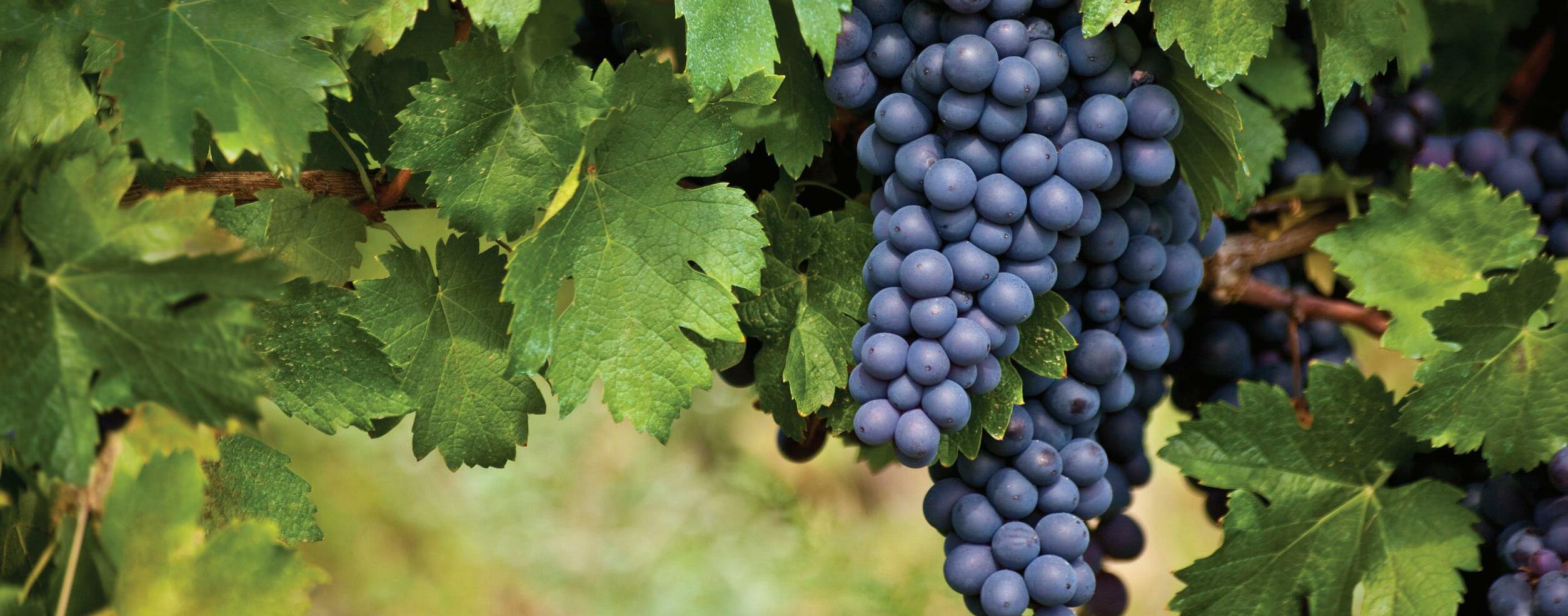


To learn more email Amanda: a.dupasdematos@massey.ac.nz

NEW ZEALAND WINEGROWER I FEBRUARY/MARCH 2023 I 35 THE SCIENCE
Stop Botrytis in its tracks 0800 116 229 biostart.co.nz BIOS 096 BioStart TripleX biofungicide » Prevents and controls botrytis by using a naturally occurring opponent to these fungi » TripleX is compatible with a range of other sprays » Available from leading Horticultural Suppliers. BIOS 096 TripleX Half Page Advert Update.indd 1 14/1/21 4:01 pm
Field Grafting
Longer-lived vines and healthier welds are two of the benefits growers can expect from the practice of field grafting, according to French experts Worldwide Vineyards.
Stefano Vezza, an Italian grafter for the company, visited Martinborough late last year to demonstrate field grafting and explain why it is favoured by Worldwide Vineyards. “Hand grafting directly in the field promotes a high-quality weld which gives the vines a longer lifespan,” says Stefano, who demonstrated two types of field grafting to a group of winemakers gathered at Colombo Wines. “The main advantage of T-bud and chip bud grafting is that there is less likelihood of trunk disease and you have a 90% success rate.” The rate of trunk disease experienced with top grafting is eight to ten times lower than bench grafting, Stefano says. But the costs can be higher.
While in New Zealand, Stefano re-grafted On Giant’s Shoulders vines using chip bud grafting. The vineyard has a new owner, and winemaker Wilco Lam was keen to upgrade the vineyard using this gentle technique. Chip bud grafting takes the vine out of action for one year and means it can crop again the following year. Tying the vine during grafting is important to prevent wind from damaging the vine during the grafting process.
The benefits of grafting are multi-faceted and include the opportunity to change grape variety for experimentation purposes
or to meet market demands. It also allows winemakers to change clonal selection and to rejuvenate aging vines.
However, grafting productive plants began as an intuitive response to grapevines for Worldwide Vineyard founders Paul and Marc Birebent, without any formal scientific training. Marc, now Managing Director, says grafting has been used “since antiquity” to harmonise the grape varieties of a plot or to improve fruiting. “Today, all vine plants are grafted in advance in a nursery. The term top-grafting refers to a new graft performed on the upper aerial part of the trunk, above the point of the original graft.”
Another benefit of top grafting is that it has about three times less mortality rate than mechanical grafting on sensitive grape varieties, he says.

Stefano also visited Marlborough and Central Otago to discuss vineyard upscaling with winemakers in those regions. The visit was long overdue because of delays brought on by the global pandemic, says Worldwide Vineyards New Zealand representative, Simone Amorese, who owns Martinborough wine brand Equilibrium Makers. “We would love to have had him out sooner, if it hadn’t been for the pandemic.”
a w inning i nfluence
suppliers of fine corks, barrels, screw caps & capsules

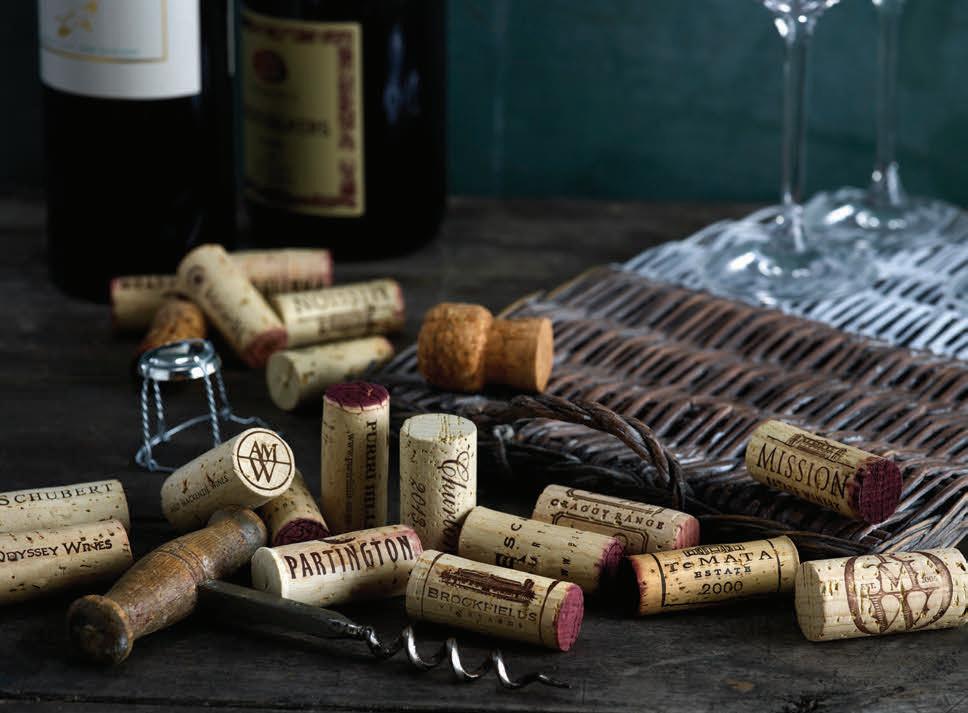
36 I NEW ZEALAND WINEGROWER I FEBRUARY/MARCH 2023 THE SCIENCE
JOELLE THOMSON
Fine corks hand-selected by Alberico Miranda. 100% individually & non-destructively tested.
06 879 6074 mob 0274 200 002 email info@awiclosures.co.nz www.awiclosures.co.nz
tel
BRIght Ideas

New rootstock research trial
Rootstocks are an essential but poorly understood component of winegrowing in New Zealand. It is generally known that rootstocks can confer favourable properties on the grafted plant, including insect resistance, tolerance of soil biotic and abiotic conditions, and other impacts on the scion. However, the industry does not have robust knowledge relevant to local conditions in order to make informed choices about the best rootstock options for a particular planting situation.
Bragato Research Institute (BRI) has developed a trial to generate this knowledge to support rootstock choice, with a block of 15 different rootstocks. The trial is a split plot of three different irrigation levels, with each rootstock replicated six times.

Focusing on Sauvignon Blanc, the trial aims to identify rootstocks that will confer drought tolerance and maximise the productive water use efficiency while maintaining high productivity and the characteristic style of Sauvignon Blanc that consumers expect.
Any rootstock trial is at least a fiveyear investment, with 10 or more years of trial data being desirable. Vines must be grown to maturity, and the contribution to grape productivity and yield will then be determined across rootstocks. Until the trial
block is established, water use efficiency and yield data will be collected on two mature replicated rootstock trials planted in the 1990s.
First-season vigour is a key factor in vineyard establishment, affecting the speed with which the fruiting canopy is established. This data will be available from year one from the trial block.
As trial vines mature and come into bearing, further valuable data will be collected, ultimately leading to the industry having objective data to guide the selection
of rootstocks for specific growing situations. The findings from the rootstock trial will contribute to the Sauvignon Blanc Grapevine Improvement programme and other future BRI programmes. New adaptation strategies are required to deal with the changing climate and using more efficient drought tolerant rootstocks is potentially a sustainable solution.
Sarah Rowley Adams is Senior Communications Advisor at BRI. For more detail on the trial, go to page 59 of this edition.
Swiss precision. Made to last.
FELCO 211 LOPPERS



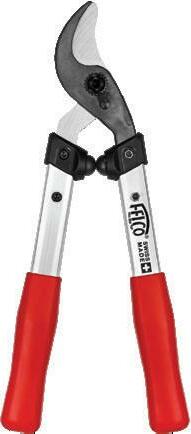
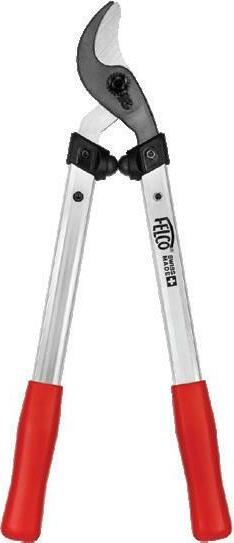

NEW ZEALAND WINEGROWER I FEBRUARY/MARCH 2023 THE SCIENCE
SARAH ROWLEY ADAMS
Available at your local FELCO Stockist. Heiniger is the exclusive FELCO distributor and authorised service centre in NZ - contact us to find a FELCO dealer near you. (03) 349 8282 | heiniger.co.nz
A team from BRI plant the rootstock trial block.
The perfect balance of power and manoeuvrability. The FELCO 211
FELCO POWER TOOLS Power through even the biggest jobs with ease. Designed to act as an extension of your body, the new FELCO Power Blade series feature lightweight, ergonomic handles for comfortable pruning all day long. NEW
range feature lightweight aluminium handles for comfortable cutting and curved cutting heads to pull in and easily slice through branches.
The People

XXXXXXXXX 38 I Women in Wine Melanie Brown 42 I The Profile Bart Arnst 44 I Bob’s Blog Tasting mismatch
Women in Wine
At The Laundry with Melanie Brown
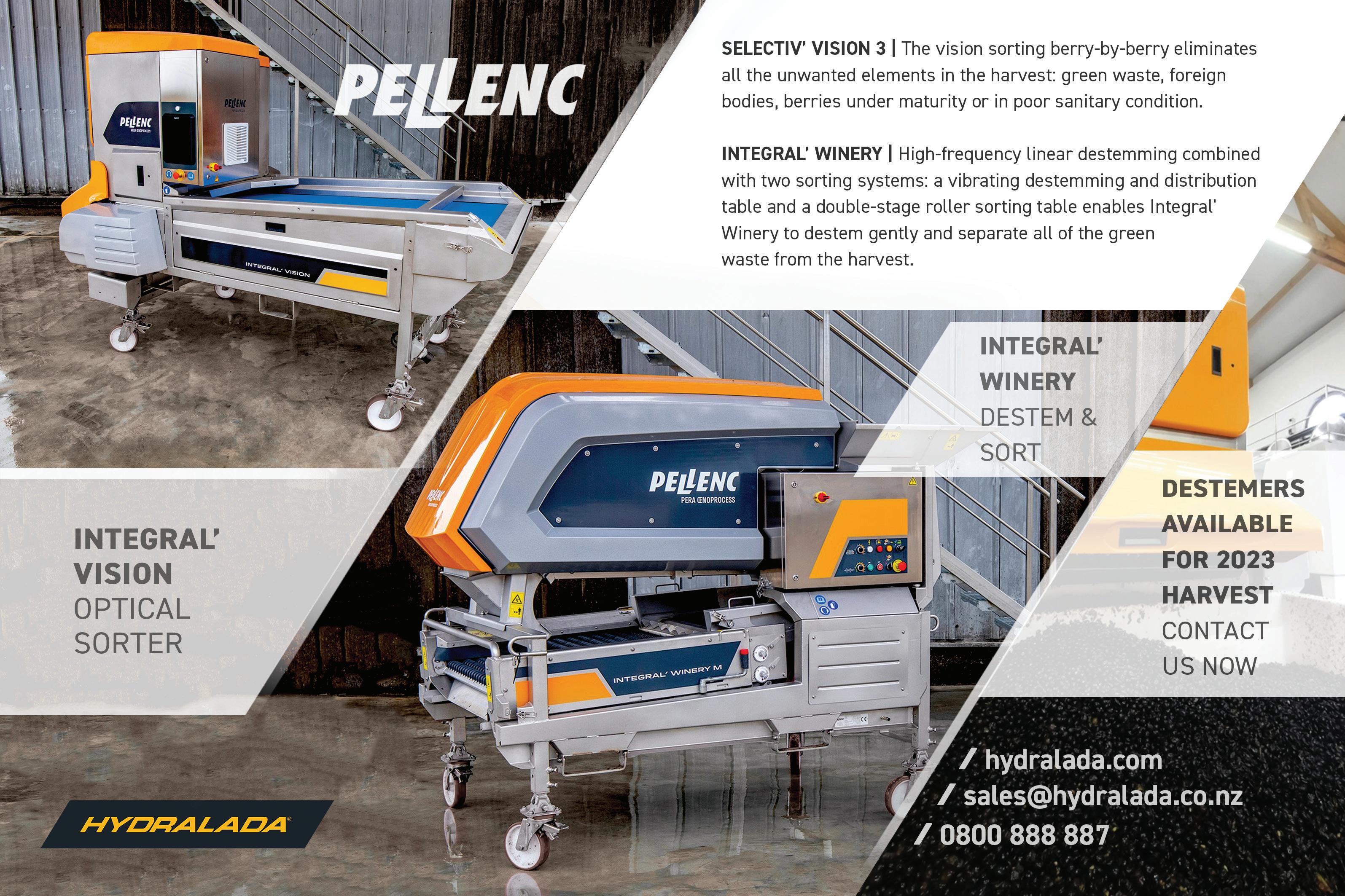 JO BURZYNSKA
JO BURZYNSKA
It’s November 2019, and London-based Kiwi hospitality champion Melanie Brown is thrilled to achieve her dream of opening her own restaurant and wine shop. Blending old world bistro style with a New Zealand attitude, The Laundry in Brixton is a hit. Then, just four months later, Covid-19 lockdowns force it to close its doors.
“The timing was awful, but I was determined that it wasn’t going to beat me,” Melanie recalls when I catch up with her over lunch at the now re-opened restaurant. From running a successful new business in a booming London restuarant scene, she suddenly lost all her staff to furloughs while the business still had to be run, bills paid and staff anxieties quelled. “But I wouldn’t go back and change anything about the experience,” she adds.
Melanie started her career in the United Kingdom 18 years ago, initially as a chef. On her return to Peter Gordon’s Providores as Bar Manager, she made the bold move to solely showcase New Zealand wines on its list. Then in 2014, Melanie started her online wine company, The New Zealand Cellar, “to connect UK consumers with wines that were not necessarily available in retail environments,” according to Melanie.
“As a brand New Zealand has grown so dramatically and successfully in the UK over the last 10 years, people want to hear the stories,” she notes. “It’s always been my philosophy to act as a conduit between New Zealand vineyards and UK consumers; to bring to the forefront the people behind the wines, and support wineries in having a voice, a place and presence in the UK.”
Her success with New Zealand wine, which saw The New Zealand Cellar receive a slew of high-profile specialist retailer awards, prompted other new world producers to approach her. While she says New Zealand wines will always dominate her portfolio, it has expanded to encompass wine from Australia, South Africa and California, and the business was rebranded as Specialist Cellars in 2019.
A successful crowdfunding initiative also enabled Melanie to set up a wine shop in the temporary Pop retail hub in Brixton, where it remains. “It’s been a huge success,” say Melanie. “We’ve been so fortunate that we were supported so widely throughout New Zealand with the crowdfunding campaign, which really made me who I am today and led to The Laundry.”
NEW ZEALAND WINEGROWER I FEBRUARY/MARCH 2023 I 39 THE PEOPLE
Photo on left, Melanie Brown at The Laundry
Life at The Laundry
When the lease came up for a historic exlaundry building in Brixton, Melanie leapt at the chance to create an establishment that fused her experience of European bistros and Kiwi hospitality.
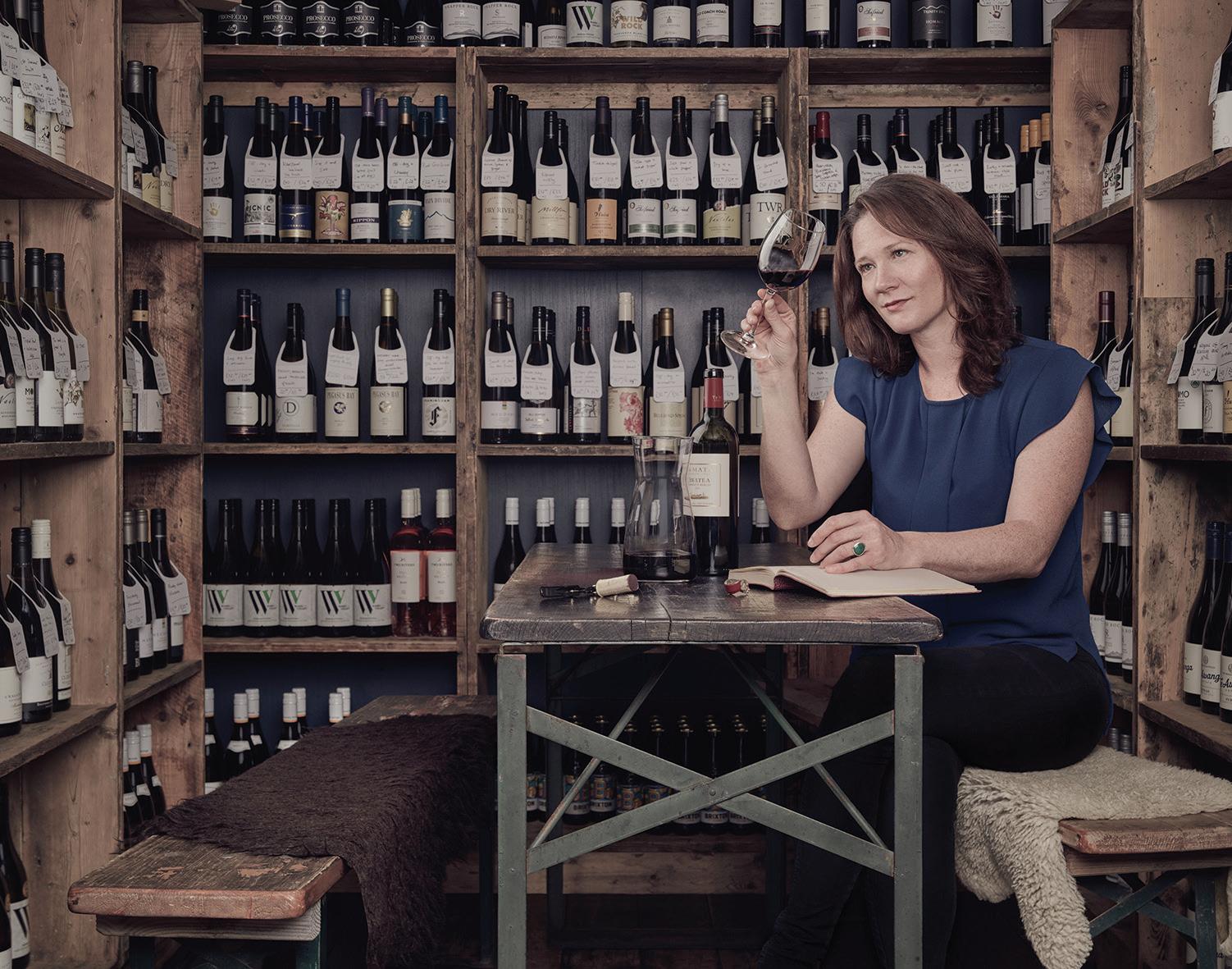
“There’s a connection of soul and culture that the bistros and cafes have on this side of the world that we don’t necessarily have in New Zealand.” “However, these often don’t have New Zealand’s customer service and personal connection. Aligning the synergy between those two really beautiful elements is something that inspired the birth of The Laundry.”
Housing a laundry for 119 years, the traditional character of the building appealed to Melanie. “It has a sense of place that matches my philosophy and reflects my ultimate aspiration to have a restaurant built on the foundation of France and Italy, but with Kiwi flair and attitude.”
Melanie drew on her chef’s background

we thought we would be,” she admits. “However, the silver lining is that we’ve had to analyse and critique everything we’re doing, and have learned in a short space of time that would have otherwise taken years.”
enough challenges, the massive rise in electricity prices currently being experienced in the United Kingdom is impacting profits. Last year The Laundry’s electricity bills almost doubled, this winter likely doubling again.
for the menu design, created from as much locally sourced produce as possible. It’s big on brunches and contains bistro classics such as croque madame and confit duck, but with a Kiwi twist. “It was always a big thing for us to use really quality ingredients, but not trying to be too fancy,” Melanie states. “Hearty classic dishes, maybe pimped New Zealand style with some spicy jalapeño!”
Covid-19 lockdowns meant a series of major changes occurred for The Laundry’s survival. “Restaurants were getting smashed,” Melanie recalls. “So we had to work hard to pivot and make a unique offering.” These included selling takeaways out the restaurant’s front window, creating menu boxes for people to assemble at home, and starting a general store for The Laundry’s food and wine.
“It was mental, but it kept us afloat”, says Melanie. “We had to use loans, which was scary as we weren’t making any money.” However, the business benefitted from the support of The Laundry’s largely Kiwi investors. The location of the building, opposite a newly opened theatre, and Melanie’s existing strong connections with the local Brixton communities also helped.
“We’re three or four years behind where
Next came the ramifications of Brexit, which unfurled during the pandemic. However, being closed when suppliers struggled to source produce from the European Union, provided time to acclimatise to the situation and understand availability issues, Melanie explains.
Staffing remains an ongoing issue, however. “The hard-working EU professionals were shipped back to their homelands,” she notes. “We’ve been left in a dire situation where we can’t find any staff, are trying to keep staff, and then having to turn them into professionals.”
One of her key messages to the team is that hospitality can be a profession and not just a job. “It is my profession; it is my life. But there aren’t enough role models for young people entering the industry. You need to employ and train a management team that can personify professionalism and casual excellence, so that the next generation learns that hospitality can be a career.”
In order to attract a higher calibre of staff through more attractive salaries, The Laundry has increased its service charge to 15%. “Most people have been supportive when they know it’s going to staff and allows us to continue doing what we’re doing really well,” Melanie reports.
If a pandemic and Brexit didn’t offer
After all these bitter struggles, a sweet reward came in 2022 when Melanie was one of just a handful of Kiwis in the United Kingdom to be acknowledged as a Kea World Class New Zealander. It’s an award that recognises New Zealanders who lead industries around the globe and help build New Zealand’s reputation on the world stage. “To be honoured in that way was just absolutely mind blowing,” says Melanie. “I couldn’t believe that I was being recognised for the small piece that I do for New Zealand. It really made my heart smile.
“I think it probably comes off the back of a lot of hard years of Specialist Cellars work with New Zealand wineries and extending that conversation around New Zealand wine,” she notes. “Events have also played a massive role in the success of that business, thanks to winemakers and the support that we get from the wineries.”
“There have been moments where I’ve been exhausted, but secretly I think I love the challenge,” she says of her recent journey. “There’s a beautiful restaurant and a beautiful team, so it’s a wonderful position to be. I’m incredibly grateful. I love it.”
A version of this interview will also appear in Viva Magazine.
40 I NEW ZEALAND WINEGROWER I FEBRUARY/MARCH 2023 THE PEOPLE
“It has a sense of place that matches my philosophy.”
Melanie Brown
Melanie Brown
Innovation, Flexibility & Maximum Productivity

The 5D TTV specialist series perfectly combines performance, productivity and comfort, and can be used and configured individually, with a range of options to suit your exact needs.
• Market leading hydraulic systems with open centre and load sensing variants available providing a maximum flow of up to 131 L/min
• A flat operators platform allows easier access and unrivalled comfort no matter which variant you choose

• Three available widths: 5DV TTV from 1,077mm, 5DS TTV from 1,267mm and 5DF TTV from 1,441mm.
Flat operator platforms, integrated armrest controls and climate air conditioning creates the ultimate operator comfort


Power Farming NZ
Category 4 filtration systems. Electronically selectable, the air intake is diverted through the carbon filter while the operator can monitor filter charge and cabin pressurisation through the dash display.
WHANGAREI 09 438 9163 PUKEKOHE 0800 570 571 TAURANGA 07 543 0021 WHAKATANE 0800 77 88 99 TE AWAMUTU 07 870 2411 MORRINSVILLE 07 889 5059 ROTORUA 07 349 6528 GISBORNE 06 868 8908 HAWERA 0800 480 309 HASTINGS 06 879 9998 FEILDING 06 323 8182 MASTERTON 06 370 8240 NELSON 03 544 5723 BLENHEIM 03 573 7089 GREYMOUTH 03 768 4370 CHRISTCHURCH 03 349 5975 ASHBURTON 03 307 7153 TIMARU 03 687 4127 DUNEDIN 03 489 3489 GORE 03 208 9395 INVERCARGILL 03 215 9039
The Profile
Bart Arnst
LORRAINE CARRYER
It’s almost Christmas Eve when I finally manage to catch up with Bart Arnst, who’s been busy in vineyards all over the country. He’s likely had little time to consider his title of Gourmet Traveller Wine Viticulturist of the Year 2022, but I ask whether it’s significant that an organic viticulturist has once again secured the title.
“Not really, because more and more people are coming to understand that it is, quite possibly, the best way forward – for the industry and for the country,” Bart says. “It fits right into the overall regenerative agriculture movement, which is replicating what organic farmers have been doing for a long time.”
Growing up in Ashburton, Bart felt he was always going to do ‘something in horticulture’, despite a brief foray into banking after leaving school. “But I was big on rugby then, so was always showing up at work on Mondays with a black eye or stitches, which wasn’t really a good look at the counter”, he says.
A couple of lightbulb moments proved pivotal to his conversion. “I was working in landscaping in London, and got told to spray herbicide... This was completely foreign to me as... we had always dug weeds out, or mowed them”, he says. Then, once he had people to manage, he observed the protective gear that was required to handle some of the chemicals being used in gardening. “It didn’t sit well that I was getting other people to deal with this material.”
Once back in New Zealand, having gained a three-year horticultural qualification and work experience on a vineyard, Bart started to research how grape growing had evolved prior to widespread chemical use. “I looked backwards”, he explains. His employer at the time, Montana, allowed him to run a small experimental block in Marlborough. “They let me have a play down the back of the property where no-one – particularly the Board of Directors – would go.” Bart remains grateful that Montana enabled him to demonstrate that it was more than possible to have a future in organic wine
growing. That experiment confirmed his path, as well as netting the company a local environmental award.
In the 1990s there was just a sprinkling of organic wine growers around the country, with a few leaders including James Millton in Gisborne. Montana was growing considerably and Bart felt he was more deskbound than hands-on in the soil, where he wanted to be. Fortunately, his work had also attracted the attention of others in the industry, and he took up an offer to work at Seresin Estate, converting its vineyards to organic.
A variety of paths are taken towards organic wine growing; for some growers it’s a gradual process towards certification – perhaps dipping their toes in until a level of confidence is achieved – while others go all in from the start. Bart believes either approach works, but it helps to have a plan.
What has steadily changed over the years is the progression for many from ‘dabbling’ with organic practices to becoming certified. However, many more orthodox vineyards are now using standard organic practices –such as cover crops and mechanical weed control – without intending to become fully organic. Currently about 10% of New Zealand wineries hold organic certification,
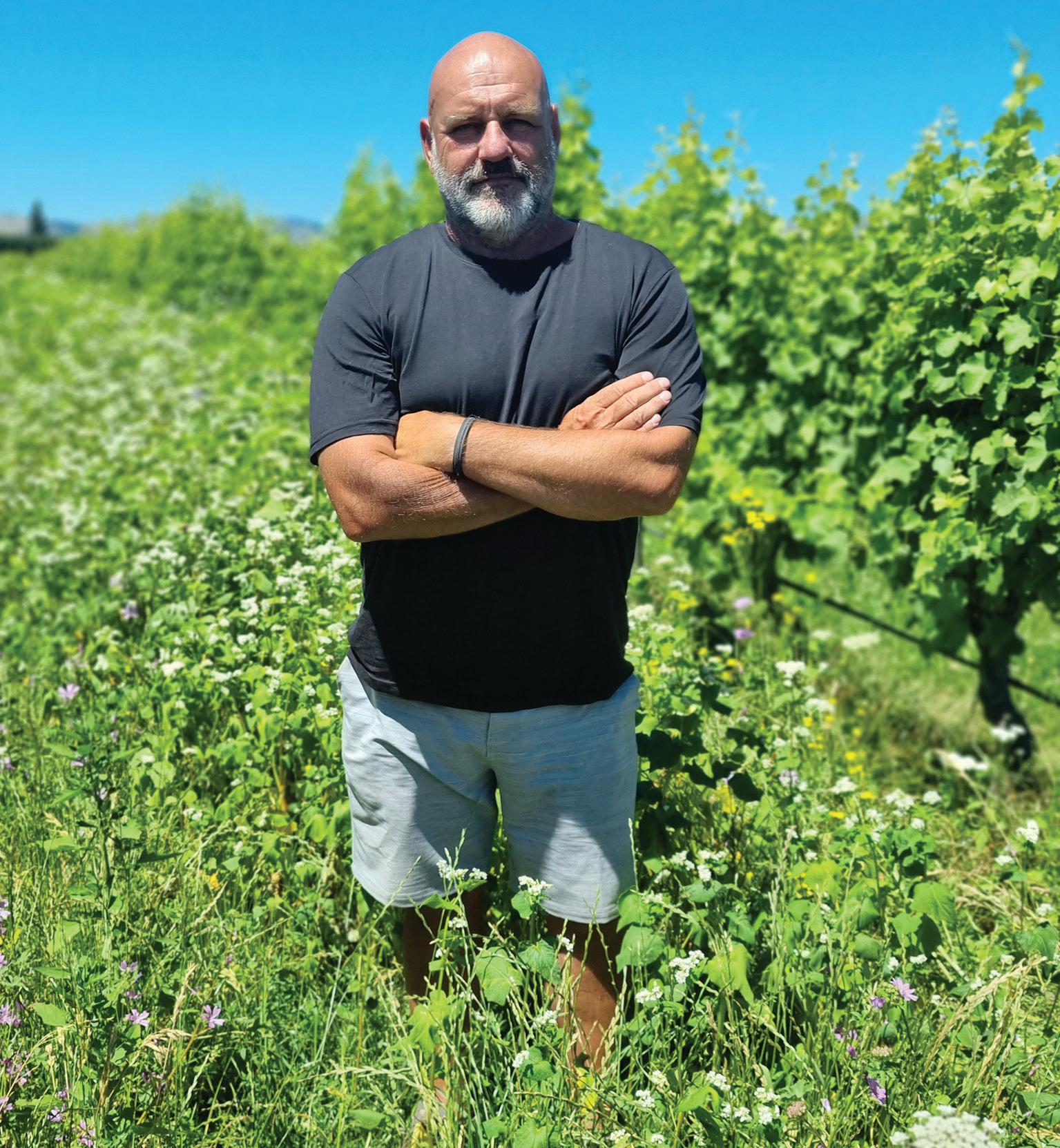
with Central Otago having the highest percentage at roughly one fifth of its plantings. Marlborough has less than 4%, and while the organic area is increasing, the ratio is declining.
Organic vineyards now spray about the same number of times in the season as conventional growers, and haven’t become subject to spray resistance build-up, according to Bart. Anecdotal evidence has shown organic fruit tends to be very clean, helped by the thicker skins that the fruit develops as a result of not using chemical sprays.
On being asked about business reluctance to becoming organic, Bart believes it is simply about tonnages; in general, a higher tonnage requires synthetic fertilisers and a different business model. “A lot of organic growers are in the business for the long term, and have an eye on the big picture.”
Early in 2000, on the strength of increasing phone calls from vineyards asking for advice on alternatives to some of the chemicals in use, Bart identified a need for mentorship and advice, so set up a consultancy. Some of those who became clients wished to become certified but weren’t confident of a market for their grapes. In a tidy loop, Bart was able to
42 I NEW ZEALAND WINEGROWER I FEBRUARY/MARCH 2023 THE PEOPLE
Bart Arnst
offer to take the grapes for the new organic wine label he and Chris Darling were about to launch. “So I was able to help them to develop their organic vineyard, while guaranteeing we would take the grapes – a win-win really”, he says. The Darling label still sources all its grapes from fully certified growers, and currently exports mainly to Australia, the United Kingdom, Scandinavia and Japan.
I ask Bart about the intersection between organics and biodynamics. Biodynamics is a step further, he explains; while biodynamic practitioners include most organic practices, they also add the use of preparations and farming in accordance with moon phases. While Bart has a number of clients employing biodynamic techniques, he sees it as an overall philosophy, as much as a way to farm. “The people that are very good at biodynamic and organic horticulture are good farmers anyway, and in it for the long game”, he says. Failure seems to result from people assuming it’s going to be an easier path, but there are no quick fixes. “Good farming is, among other things, about recognising problems early, and then working out what to do – which can be a
lifelong process”, he says.
While any time is a good time to go organic, Bart believes it’s more pressing in a time of accelerated climate change. Organic horticulture promotes carbon sequestration by adding organic matter to the soil; for instance, many vineyards are now crimper rolling rather than mowing. Work is already going on to evolve canopy management techniques as the weather gets hotter, but major ‘climate events’ are going to be more difficult to manage. Continuing to build organic matter in the soil will help with absorption of excess water as well as mitigate drought conditions.
While Bart says he never set out to be an ambassador for organic viticulture, he feels a justifiable pride in being part of the organic wine growing movement in New Zealand, and helping organic growers to find their place in the market. Consumer demand
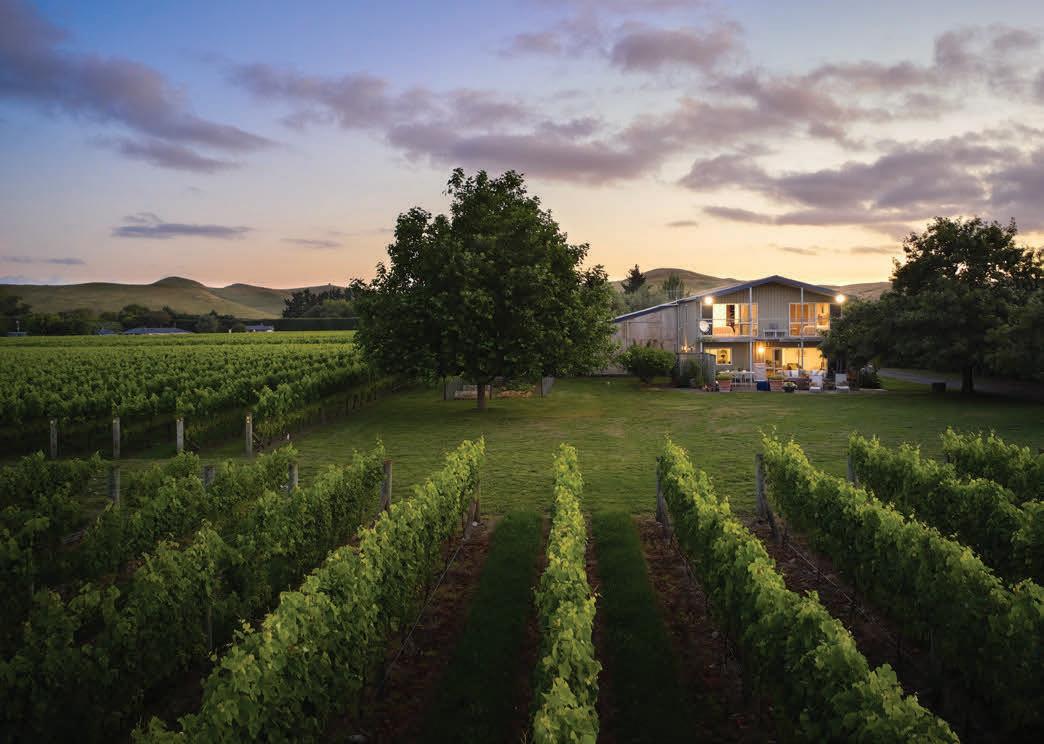
Desert Island Wishlist
Wine – Shared with friends

for evidence of environmental stewardship is increasing, and Bart cannot foresee an oversupply of organic wines.
He sees his award as an acknowledgement from wine writers, possibly reflecting an indication of their thinking as to where the industry may head. He in turn acknowledges the many individuals who have been leaders in the movement, as well as the huge amount of work done by the executive committee of Organic Winegrowers New Zealand (OWNZ). Playing a key role in the successful inception and growth of the OWNZ conference has proved particularly gratifying to Bart, who believes it is indicative of the level of interest in the movement.
Now, all he needs to do is find a bit of spare time to indulge his other passions of freshwater fishing, mountain biking, and – his lockdown discovery – virtual cycle touring. No carbon offsets required there.
Meal – Any BBQ roast with my wife’s salads or veggies
Album – Massive Attack Blue Lines
Book/Magazine – Any fishing, biking or nature mag
Redmetal - Wine Business Opportunity

Located in the Bridge Pa Triangle Wine Growing District, this eight (8) hectare property offers an exceptional opportunity to acquire an established and well-known wine growing and wine making operation. Wine is marketed under the Redmetal brand and enjoys excellent distribution to restaurants and fine wine stores throughout New Zealand. The property includes a comfortable home and working winery which along with the business, are being sold as a going concern (plus GST if any).
FOR SALE: Price By Negotiation
VIEW: nzsothebysrealty.com/HBNP1071
Please phone for an appointment to view.
Damian Sweetapple | M. +64 21 503 337
James Haggerty | M. +64 27 485 8419
NEW ZEALAND WINEGROWER I FEBRUARY/MARCH 2023 I 43 THE PEOPLE
Each office is independently owned and operated. SHB Limited (licensed under the REAA 2008) MREINZ.
Bob’s blog

Mr Grumpy
Wine & food mis-matching
Kingsley Wood, owner of First Glass Wines & Spirits in Takapuna, is a man of habit. For the third or fourth time in as many years he has enjoyed lunch on Christmas day with the same group of friends at a vineyard on Waiheke. They usually start with a pre-taster of Dom Perignon champagne.


Last year the Dom was fantastic, enthused Kingsley. This year they toasted Christmas with the same vintage of Dom but were disappointed. It was nothing like the wine they had tasted the previous year. At first they assumed the loss of quality may have been caused by a low threshold cork taint which can kill flavour without revealing the musty, wet cardboard character that we associate with cork taint. “Then I realised”, said Kingsley, “that we had been given a Campari on arrival, something we’d never had before. I took a sip of the Campari and re-tasted the Dom. It was even worse, confirming my suspicion that it had reacted badly with the Dom.”
We tend to focus on the positive aspects of food and wine matching and overlook the negative reactions that can take place.” Kingsley makes a good point. Campari is quite bitter and may have made the Dom slightly bitter – not a good look in champagne. I learnt many years ago to resist the biscuits on offer when judges take a break at wine competitions. A sweet biscuit can make wine taste quite bitter. The same applies to coffee.
Homoclimesa new wine word
Flicking through the fourth edition of the Oxford Companion to Wine (OCW) I came across a word that neither I nor my spell-checker were familiar with. Homoclimes is a geographical term meaning ‘similar climate’. Anyone prospecting for a vineyard site in their quest to make serious Pinot Noir probably takes more than a passing interest in Burgundy’s climatic credentials. Michael Cooper describes in his Wine Atlas of New Zealand (second edition) how the founding partners of Martinborough Vineyards at their first meeting were invited to enjoy a glass of grand cru burgundy and were told, “this is the objective”.
It helped that the partners included a soil scientist, a pharmacist, and someone with a background in horticulture and viticulture. Their scientific minds must surely have addressed the extent to which Martinborough and Burgundy were homoclimes. Martinborough rapidly become New Zealand’s Pinot Noir capital thanks in no small part to the region’s similarity with the world Pinot Noir capital, Burgundy. “Homoclimes are typically sought using temperature and rainfall data” explains the OCW. “For example, Tamar Ridge Vineyards has used this approach to identify new vineyard regions in Tasmania with the same climate as distinguished the Marlborough region of New Zealand.”
Imitation, they say, is the sincerest form of flattery. Tassie Savie anyone?
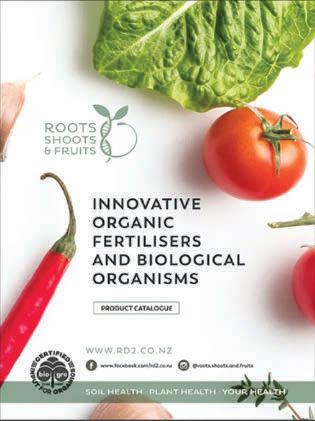
44 I NEW ZEALAND WINEGROWER I FEBRUARY/MARCH 2023 BOB CAMPBELL
09 372 9155 www.rd2.co.nz The greatest advantage in foliar nutrition – 100% soluble Biomin Glycine Chelated Minerals. Highly systemic & non-phytotoxic. Apply less, absorb more for quality wine! BIOMIN RANGE INCLUDES: CALCIUM • ZINC • IRON • BORON • MANGANESE • MAGNESIUM • BOOSTER V SCAN TO DOWNLOAD OUR PRODUCT CATALOGUE
BIOMIN minerals?
Is it time you tried
Wine to Cruise By

My house overlooks Auckland harbour and the CBD. When I drew the curtains this morning a good chunk of the view was taken up by the largest cruise ship to visit Auckland, ‘Ovation of the seas’ or, as my wife calls it, “Ovulation of the Seas”. There are three cruise ships in town. It is 31 December so I guess they are here to view Auckland’s New Year’s firework display.
I have only been on a cruise ship once. I can’t remember the name of the ship but it was a short three-day cruise between Los Angeles and Mexico. We had a cabin with a balcony, which was nice. I spotted sealions, dolphins, a sun fish, a hammerhead shark and a whale. We attended a wine tasting which was disappointing. The wine list was fairly bland. I had packed a few bottles of interesting wines but they were confiscated and subsequently returned on debarkation.
Ovation of the Seas is clearly a luxurious liner. I felt sure that it would stock a carefully chosen wine list. With the help of Mr Google (try royalcaribbean.com) I located an onboard wine bar called “Vintages.” Under “Menu Highlights” they enthused “If Sauvignon Blanc is more your speed, the menu at Vintages offers several great options from Marlborough, New Zealand.”
The Vintages wine list offered a range of around 66 wines including Peter Yealands Sauvignon Blanc, Marlborough US$49. Cloudy Bay Sauvignon Blanc, Marlborough US$75, Nobilo Sauvignon Blanc, Marlborough US$59 and Cloudy Bay Pinot Noir, Marlborough US$75. Irritatingly, they didn’t reveal vintages.

I wondered whether they might have made a mistake by line pricing Cloudy Bay Sauvignon Blanc with Cloudy Bay Pinot Noir. The most expensive wine on the list is Opus One at US$379 with Opus One “Overture” US$162 in second place.
The wine list is disappointing with too many rock-bottom wines at inflated prices.
NEW ZEALAND WINEGROWER I FEBRUARY/MARCH 2023 I 45 BOB CAMPBELL
In the Heartland
A Marlborough pioneer returns to his Heartland
A collaboration between a collective of Marlborough grape growers and one of the region’s pioneers, David Hohnen, is bringing a new premium Sauvignon Blanc to United Kingdom supermarkets. The Marlborough Grape Growers Co-operative (MGGC) has launched a joint venture project with Crackerjack Wines, focusing on a Sauvignon Blanc called Marlborough Heartland.
David and Rupert Clevely, his Londonbased partner in the wine making and brokering business Crackerjack Wines, chose to work with MGGC as they believe its growers represent the “real heartland” of Marlborough, being mostly smaller in scale, on some of the best soils, and with the profits from their labours staying within the local community.
David is renowned for helping launch Cloudy Bay on the world in 1985, later selling it to Veuve Clicquot in 2003. He told Winegrower that he feels aligned with the Co-op’s values after working with co-operatives out of Bordeaux. “Kiwi Sauvignon Blanc doesn’t need a lot of help, but what I like about it is the people I’m working with in the Co-op,” David explains. “Without the Co-op, all these small farmers would be under pretty restricted contracts with the big guys. But now they’re in charge;
80 farmers have formed their own company. Until now, they’ve been dealing with the usual suspects, the big companies that they sell bulk wine to. But now they’ve got their own label, and they’re overjoyed.”
His vision for the wine project, together with MGGC, is creating a wine expressive of the best parts of the Wairau, Waihopai and Awatere valleys .
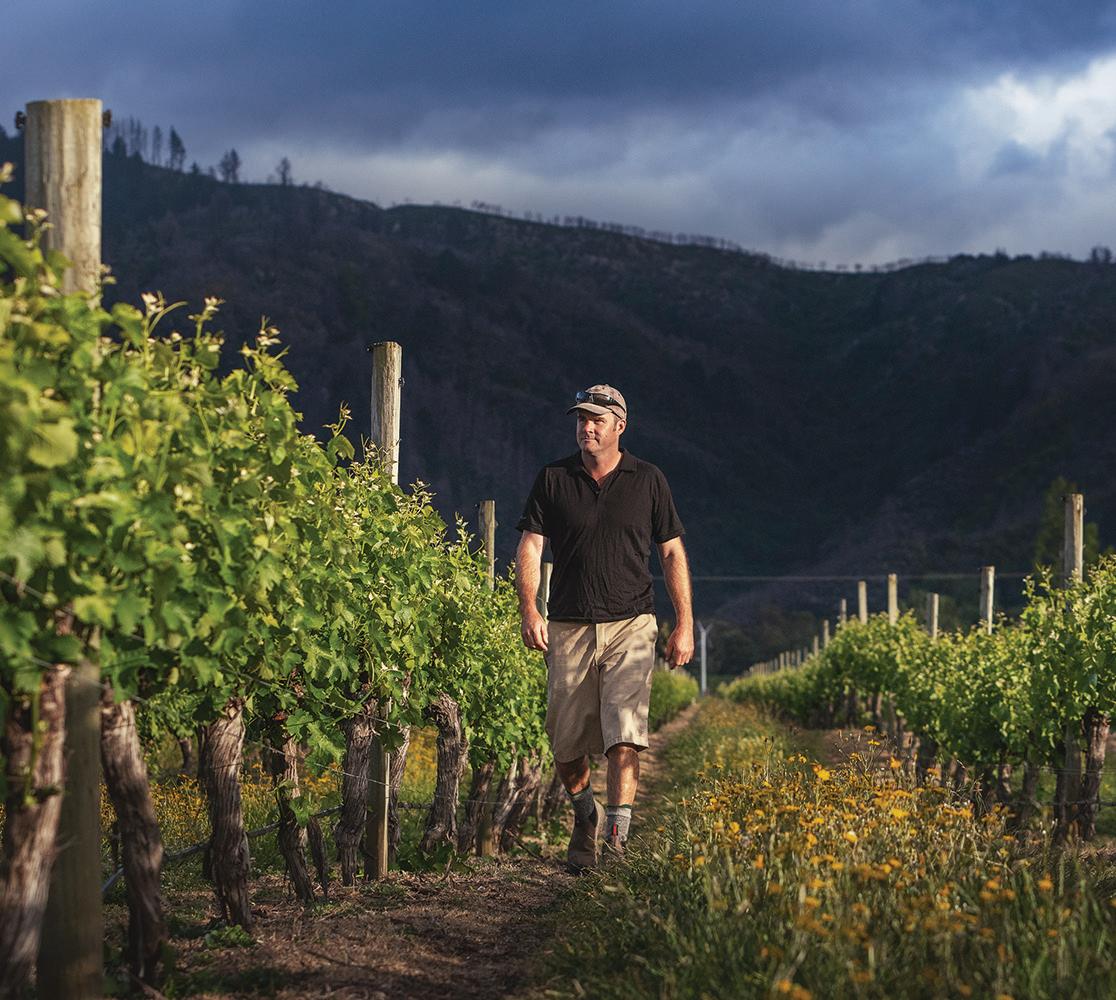
The Marlborough Heartland 2022 Sauvignon Blanc is launching exclusively in Sainsbury’s supermarkets in early 2023, with a premium price tag of £14. After Sainsbury’s gets a head start, MGGC expects to move into other channels in the United Kingdom, while discussions for distribution in Australia, the United States and New Zealand are taking place.
MGGC Chief Executive Mike Brown


READ IT ONLINE

says Heartland is a game-changer. “We don’t need to play in all parts of the market – we have a very successful business with our existing model, which is low risk but relatively high return,” Mike explains. “So if we are to move into a branded space, we want to do it with higher-end wines such as the Heartland Sauvignon Blanc.”
Mike’s vision is that within three years, 10% of MGGC production will go into Heartland, giving the Co-op a valuable addition to its business portfolio. “We can do this without incurring great costs in brand development because of the leverage we gain from partnering with such a reputable partner as Crackerjack Wines, which means we are not risking the ‘family silver’ in our first foray into the branded marketplace.”

46 I NEW ZEALAND WINEGROWER I FEBRUARY/MARCH 2023 THE PLACES
TONY SKINNER
www.nzwinegrower.co.nz GENERAL NEWS OPINION PEOPLE PROFILES REGIONAL UPDATES AND MUCH MORE NOW
Reading the magazine online has never been easier.
MGGC Chair Ben McLauchlan. Photo Jim Tannock
Growing Viability


Marlborough’s model vineyard
Marlborough grape growers are boosting mechanisation and efficiency in the face of rising costs. That’s one of the insights from the recently released 2022 Vineyard Monitoring Report for the region, produced by New Zealand Winegrowers and the Ministry for Primary Industries.

The report, which assesses production and financial performance based on a vineyard model of 30 producing hectares, using data from 10 vineyards in the Awatere Valley and 35 in the Wairau Valley, reported a record financial outcome in 2021/2022, with an operating profit of $19,425 per producing hectare, driven by high yields across all grape varieties, along with increased grape prices.
The good return helped offset a 9% lift in vineyard working expenses, following a 6% lift in the previous year, largely driven by rising labour costs. “Increasing wage rates was a significant driver, with labour expenses accounting for over 55% of total vineyard working expenses,” says the report. Growers are working to mitigate those increasing expenses by using technology, such as machine vine stripping and machine topping to reduce pruning labour, as well as upgrading machinery to more efficient models, including three-row sprayers and more fuel-efficient tractors.
Meanwhile, about half of the surveyed growers are planning vineyard
re-development to improve business viability. “Many vineyards in Marlborough are becoming less viable and require re-development due to their age, and the prevalence of trunk disease causing yields to decline. There is a trend amongst contract grape growers to remove less profitable varieties such as Pinot Noir and replace with Sauvignon Blanc,” the report says. “Wineries are more likely to preserve Pinot Noir plantings to meet the requirements of their portfolio.” Other changes noted by some participants included increasing fertiliser use to enhance yields; using subsurface irrigation and plastic posts to reduce operating costs and alleviate environmental concerns; and having bulk wine made for direct grower sale.
Report author Greg Dryden, from Fruition Horticulture, says the good financial year helped balance out the poor returns of the low-yielding 2020/2021 year, when the vineyard model reported an operating profit of just $4,535 per
producing hectare, down 66% on the previous year and the lowest outcome since 2011/2012. “These two years’ results reflect the ongoing volatility grape growers face and reinforce the importance of maintaining good yields while working closely with their wineries in an environment of rapidly increasing costs.”
Additional participants required
The Marlborough Vineyard Monitoring Programme is seeking a small number of new growers for the 2023 survey group. While all vineyards would be considered, the preference is for medium-sized vineyards, and vineyards located in the upper Wairau, including contract growers and those with their own winery. For more information contact Greg Dryden: gregdryden@fruition.net.nz

NEW ZEALAND WINEGROWER I FEBRUARY/MARCH 2023 I 47 THE PLACES
SOPHIE PREECE
© Copyright 2021 Farmgard Ltd. All rights reserved. Specifications are subject to change without prior notice.
A
CALL FARMGARD 24 HOURS 0800 FARMGARD FIND OUT MORE AT farmgard.co.nz Nationwide Dealer Service Network 35 years, Generations of Experience
The Berti Ecosprint has a patented rotor with 8m of nylon per spool, which can be easily extended when worn, and will tackle the harshest of weeds without damaging the vines.
fast, commercially viable alternative to sprays which won’t damage vines.
Point of View
Why monitor grapevine trunk diseases?
I am often asked about best practice for managing grapevine trunk disease (GTD) or solutions for GTD in existing blocks. I have a few standard questions I ask in return:
1. Are you using wound protection on the vines?
2. Are you removing dead and diseased wood (good hygiene)?
3. Do you prune in the rain (when spores are produced)?
4. Are you monitoring your blocks consistently for GTD?
I normally receive a range of replies for questions 1–3 but few people I speak to are monitoring systematically for GTD and can provide me with information on symptom or vine death progress of a block over time. I would suggest that monitoring is important not just to determine the size of your problem but also if your management is working or if you need to move up a gear with your investment in protecting your vineyard.

If I am asked how GTD should be monitored, I would suggest checking at least 2000 vines or 1% of the block (whichever is lower) to make sure you can detect GTD at low rates of incidence (occurrence). GTD can be patchy within a vineyard, therefore, when selecting the rows to score, these should be spread across the block, ideally as whole rows, to allow repeated monitoring over time. I find November or December is the best time in Marlborough to see most of the GTD symptoms, but monitoring can be done later in the season if necessary. The most important part of designing a GTD monitoring system is consistency. This will allow comparisons of results (disease progression) from season to season and block to block. Exact vine position is not needed as results will be applied across a vineyard for whole block management. However, if individual vine management is planned, this will be a different activity that requires mapping of the whole block rather than monitoring for disease progress.
GTD is a slow-growing disease, so blocks will have to be monitored annually to see differences over time. Therefore, it is important to record row number, block details and dates of scoring as well as pruning method and any other information of note. I always take some time to think about how I will record and store the information. Adding photos can be very useful to make sure the same symptoms are recorded each time.
If I was to monitor a commercial block for GTD management I would use a simple method choosing which rows I would monitor and make a tally of symptoms in the row. In this system, while moving down a row, symptoms are recorded into a tally sheet with a column for each symptom I wish to record. When I am monitoring, I am looking for dead or missing vines, half-head vines (growth all on one side of the head), vines with short shoots and vines that have been reworked. Cankers can also be recorded but are harder to define and do not always lead to vine death due to GTD. Totals for each row of dead and missing vines are recorded in the columns labelled with these titles. Vines can have multiple symptoms, so if a vine has a half head and short shoots then that vine contributes to the total for both columns. Reworked vines have had large parts of the trunk removed and a new trunk or cordon grown. For spur pruned vines, the half-head symptom will not be present but the related symptom is a dead arm. When scoring, spur pruned vines are considered to have GTD if two or more spur positions are dead (these do not need to be next to each other, just on the same vine).
Once I have monitored the vines, it is important to look at the data. Some symptoms will change from year to year with more short shoots in dry seasons, but the number over time will be either consistent (flat disease curve) or increasing (uncontrolled disease curve). If I had a flat curve, then the management has been
effective and I would keep up the good work. If the disease curve continues to increase year on year, then I would need to invest in more active GTD management such as reworking vines or planning to redevelop the block.
To provide some idea of the cost of GTD, we assessed direct observation from a range of experiments conducted since 2007, industry interviews and published statistical data for the New Zealand wine industry. These data were used to construct a framework of three scenarios involving Marlborough Sauvignon blanc vines. Using these, the equivalent annual costs of GTD over the next 50 years were forecast. Industry best practices of pruning wound treatment from planting would incur costs of $1,227 per ha per year (Scenario 1). Scenario 2, with pruning wound protection from year 10 and reworking of vines at year 20, would incur costs of $2,054 per ha per year. Scenario 3, with no active management and the requirement to replant at year 20, would cost $3,120 per ha. Effective management immediately from planting (Scenario 1), with the lowest long-term annual cost per hectare, was therefore the most cost-effective practice for GTD management. The other scenarios provide information that is highly relevant to managing existing established vineyards and possible future costs. We are currently writing a full paper on this work to enable additional data to be substituted for assumptions used in the framework and for individuals to be able use the calculations for their personal block data.
So, I would monitor vines over time, confirm if GTD is progressing, and estimate what the future costs over time might be for current management practices. If the epidemic curve is taking off, I would invest more in effective management to protect my asset.
Dion Mundy is a Senior Scientist at Plant & Food Research, based in Marlborough, working on plant pathology of horticulture crops and related projects since 1999.

48 I NEW ZEALAND WINEGROWER I FEBRUARY/MARCH 2023 THE PLACES
DION MUNDY
Dion Mundy, Photo by Craig Robertson, Plant & Food Research
CLEAN AROUND THEVINEWITHOUT CHEMICALS
CLEAN AROUND THEVINEWITHOUT CHEMICALS
LUV Perfekt
LUV Perfekt
LUV Perfekt
RotaryStar Tiller
RotaryStar Tiller
RotaryStar Tiller
DiscPlough
DiscPlough
DiscPlough
Vine TrunkCleaner
Vine TrunkCleaner
Vine TrunkCleaner
Mulcher Alpha
Mulcher Alpha
Mulcher Alpha
Cultivator Vario
Cultivator Vario
Cultivator Vario
BRAUN MODULAR SYSTEM Made in Germany
“INDIVIDUAL SOLUTIONS FOR VITICULTURE AND FRUIT GROWING ALL OVER THE WORLD”.
Byrnebuilt Engineering Ltd is your exclusive importer and distributor of equipment from Braun Maschinenbau, Germany.

The complete range of undervine, inter-row and mowing machines are now available from our new Renwick showroom and warehouse.
Customers can choose from mid, front or rear mount depending on tractor specifications. This equipment is the highest quality and had been produced to give you the results you want in a huge range of conditions.
CLEAN AROUND THEVINEWITHOUT CHEMICALS Find
out more:
www.braun-maschinenbau.com
9 Pak Lim’s Road Renwick, Marlborough w: byrnebuiltengineering.co.nz e: byrnebuilt@xtra.co.nz
Adrian 021-456 936
Phone
Wine Weather
What’s been going on?
JAMES MORRISON
Warm, cloudy and wet. Three years into La Niña, eastern regions are looking green and with rainfall to match the West Coast. Record heat has been the talking point in Buller and Westland, but over east the high temperatures that we associate with a ‘classic’ summer have been almost non-existent.
With the Southern Annular Mode in positive phase, our traditional westerlies have all but faded away to be replaced with the humid, sub-tropical northeasterly airstream that fits the La Niña stereotype.
Three in a row for La Niña is unusual but it does happen. The last ‘three-peat’ occurred from 1998-2000 and prolonged La Niña episodes were recorded through much of the early 1970s. It was in 1974 that Lake Eyre (South Australia) filled for just the second time in the 20th century. Large scale flooding has also been taking place across much of Australia this summer.
December was a cloudy and damp start to summer for many. Hastings, for example, recorded 12 days with more than 1mm of rain and January started particularly wet as well, with rain recorded on the first 11 days of the month. This is equal to long standing rainfall records for summer months and highlights how wet
and miserable this summer has been for those in the north and east.
Mean temperatures and maximum temperatures:
The mean temperature is a calculation we use to determine whether our weather during a period of time is warmer or cooler than usual. It is the average of the maximum and minimum temperatures recorded during a 24-hour period. These mean temperatures are then collated from across New Zealand to produce a national mean. This mean is compared to historical data to determine if it is warmer or cooler than normal.
‘Normal’ is a 30-year period preceding the current weather observations. The latest ‘normals’ for New Zealand are taken from 1981 to 2010 and this is what our monthly climate data is compared to. This summer we have seen maximum temperatures that are running below average in some areas. This does not necessarily mean that the mean temperature is below average. Night time minimums have been running above average in many places and this has countered the cool days experienced by many in the east. Cloud is the big driver of
this and the cloud that keeps the days cooler is also keeping the nights milder. This leads to a smaller diurnal range between maximum and minimum temperatures. In extreme cases, the difference can be as little as 1C.
In summer, eastern areas such as Hawke’s Bay and Marlborough would normally have a diurnal range of 12C to 14C. For example, an overnight low of 12C followed by a daytime high of 24C to 26C.
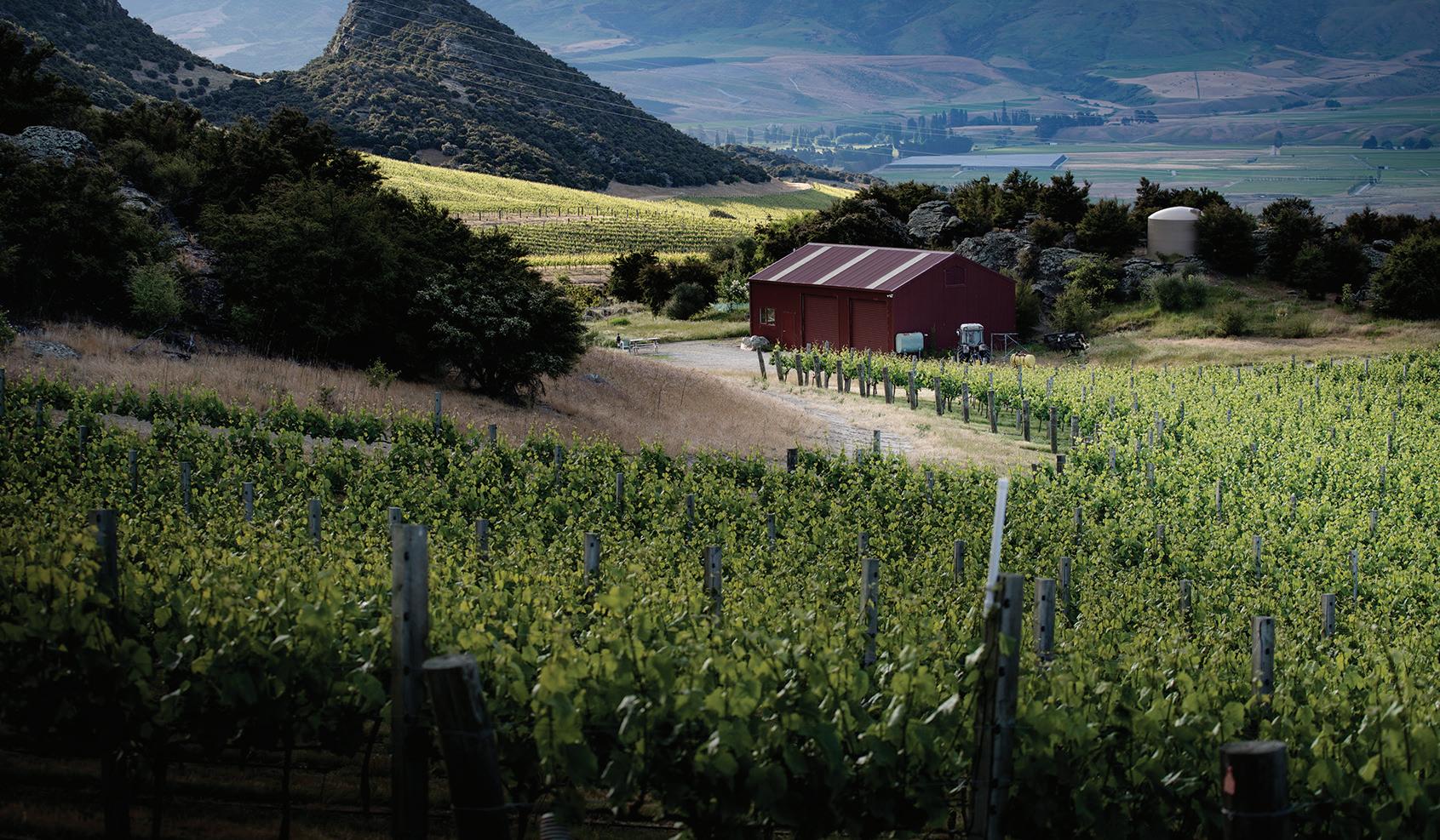
This summer, minimum temperatures are milder at about 15C in some places; however, the day time maximums are only about 22C to 23C. The diurnal range is much smaller and, in some areas, may be as low as 7C to 8C. However, the mean temperature is still close to or above average for the time of year.
When will La Niña end?
Autumn through into early winter is the expected timeframe. Long range modelling from around the world is picking La Niña to finally wane from February onwards. There is no model confidently picking what will happen in late 2023 so we will need to wait for a clearer picture to emerge during the next few months.
50 I NEW ZEALAND WINEGROWER I FEBRUARY/MARCH 2023 THE PLACES
Prophets Rock
Outlook for February and March: Gisborne/Hawke’s Bay
Mean temperatures remain above average and this is driven by mild night-time minimums. The lack of hot 30C days is likely to continue although there is still a chance of the occasional hot day until mid-April. Day time maximums may be a little below average. Rainfall has been above average and with a high number of rain days through the first half of summer. This may improve a little through February and March, however there is still the risk of further cyclones bringing heavy rain and severe weather to the east coast. Sunshine totals are well below average and may recover a little. It is likely that summer 2022-23 will see sunshine totals well below average for the North Island East Coast. Unfortunately, along with cloud and rain, humidity levels are likely to be above average until April.
Wairarapa




Temperatures are expected to remain above average and again it is minimum temperatures that will drive much of this. It is likely that this will continue into April.

Rainfall totals may not be as extreme as Hawke’s Bay and Gisborne, but there is still a risk of heavy rain events through thunderstorms and under a southeast flow as ex-tropical low-pressure systems pass to the north and east. Sunshine is likely to remain lower than average and humidity will be above average through until midautumn. There may be an occasional blast of wind from the northwest as we approach the autumn equinox.
Nelson
Mean temperatures continue to run above average across the region. Night time temperatures have been particularly mild and this is likely to continue. Rainfall totals may be mixed with prolonged dry periods, however sub-tropical airflows increase the risk of thunderstorms or the chance of an isolated heavy rain event. Sunshine totals are likely to remain close to average but humidity is elevated.
Marlborough/North Canterbury
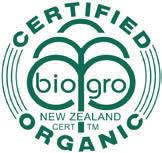

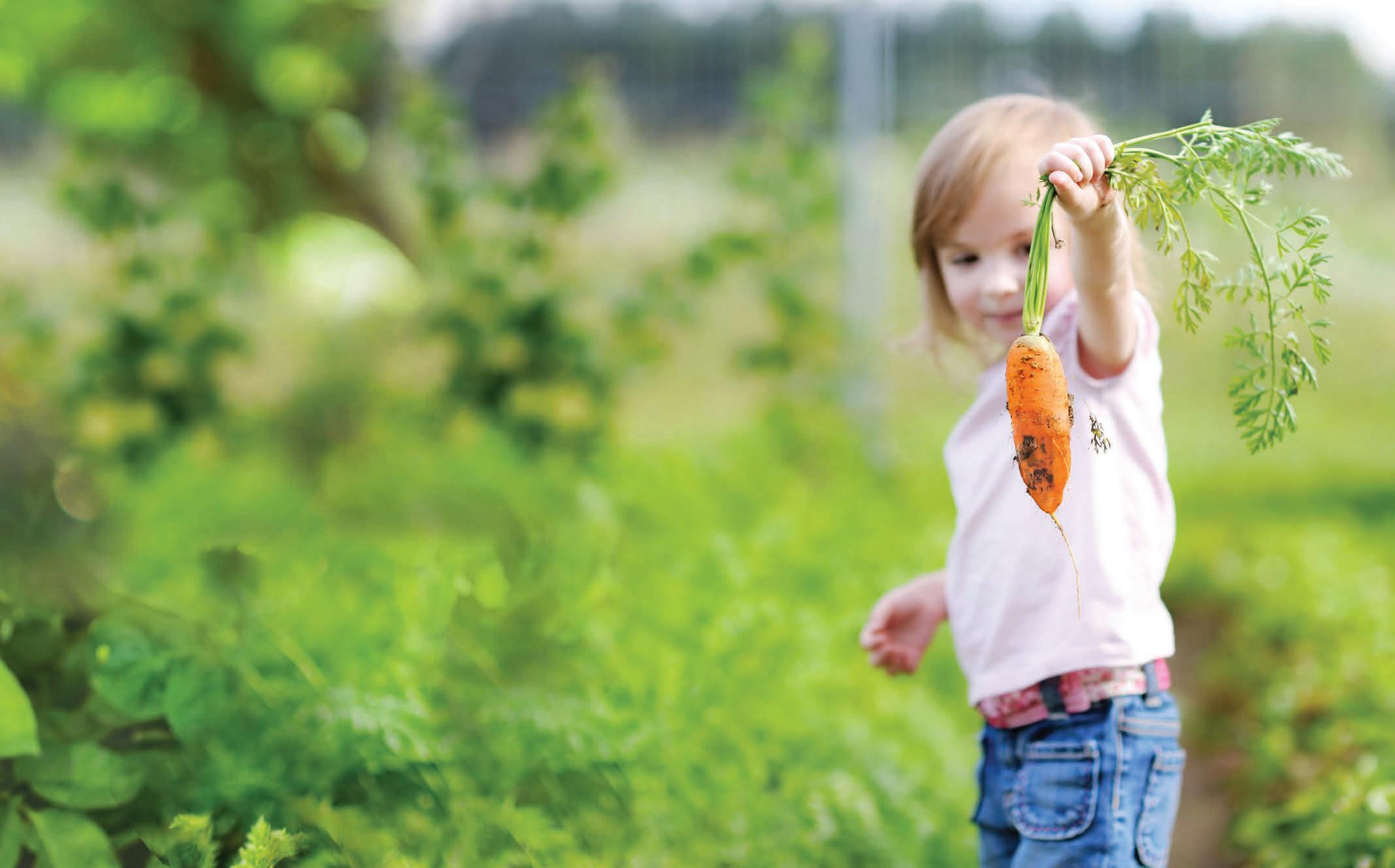



Mean temperatures are likely to be near or a little above average and once again this is driven by mild night time minimums. Day time temperatures should run close to
average. There may be a rare appearance of a milder nor’wester as we move into autumn to push temperatures into the 30C’s. Rainfall totals are likely to be close to average under a predominant easterly flow. There is the chance of a heavy rain event due to the increased risk of tropical cyclone development. Sunshine totals are likely to remain below average and humidity levels above average about Marlborough. However, conditions may be a little closer to average about North Canterbury.
Central Otago

Feeling the fewest effects of the humid La Niña, Central Otago is likely to see above average temperatures continue with day and night time both warmer than normal. High pressure systems have been crossing the lower South Island from the west and this may continue for the next few weeks. This should help to keep sunshine totals closer to average. Rainfall totals are likely to be below average, however there is a risk of further thunderstorm activity throughout summer. Humidity levels remain higher than average.
James Morrison runs Weatherstation Frost Forecasting: weatherstation.net.nz

NEW ZEALAND WINEGROWER I FEBRUARY/MARCH 2023 I 51 THE PLACES
Available at:
soil. 100% natural, BioGro certified Supplies readily available source of calcium and sulphate sulphur to support soil health and plant growth. For more information go to gypsum.co.nz
It all starts with healthy
Biosecurity Update
Keep an Eye Out: Spotted Lanternfly
American researcher Dr Julie Urban is coming to New Zealand in February to raise awareness about the spotted lanternfly, an exotic pest that could have a big impact on the New Zealand wine industry should it arrive here.
Native to China and Vietnam, the spotted lanternfly invaded South Korea in 2004 and then Berks County, Pennsylvania in the US in 2014. It has since spread into all of the States neighbouring Pennsylvania, and there have also been detections in many other places, including Oregon and California on the west coast. A recent modelling study (Jones et al., 2022) has found that without preventative intervention, it could be well established in California wine country by 2033.
Julie will be running a series of workshops, including in Marlborough and Hawke’s Bay, to highlight learnings from the spotted lanternfly incursion in the eastern United States, where the pest’s feeding and honeydew production has decimated some vineyards. Contact biosecurity@nzwine. com if you’d like to attend a session or find out more.
Identification
Spotted lanternflies are not actually flies –they are planthoppers and prefer to jump rather than fly (they are clumsy fliers). They look similar to moths, are about 18mm long and have two sets of wings. The forewings are light brown with black spots, while the
hindwings are scarlet with black spots at the front and black bars at the rear. Nymphs change in colour as they develop through four instars, changing from black with white spots to red with dark stripes. Egg masses look like smudges of mud and are a waxy brown colour.
Member awareness is critical
While spotted lanternfly adults and nymphs are quite distinctive and easily recognisable, the egg masses can be very difficult to spot visually. This means they could be imported on a range of goods and not picked up prior to import, or at the border. New Zealand Winegrowers (NZW) urges members to ensure all vineyard and winery staff are aware of what to look for and ensure all imported vineyard and winery inputs are inspected upon arrival. The NZW Vineyard Pest and Disease Identification Guide has some good images of all spotted lanternfly life stages. If anything suspicious or unusual is noticed, call the Biosecurity NZ hotline on 0800 80 99 66 and send an email to biosecurity@nzwine.com with a photo.
Impacts in the vineyard
In South Korea, the spotted lanternfly was noted as a pest of grapes, apples and stonefruit, with the largest economic impact due to the deposition of honeydew (a sticky excrement produced by feeding on plant sap) on grapevines and fruit clusters, encouraging sooty mould growth and rendering fruit unsaleable. It is thought that since about 2008, an increase in parasitoid populations in South Korea has helped to control the spotted lanternfly outbreak somewhat and less damage and loss is being reported. In the United States, sooty mould is not an issue; anecdotally, this is because a lot more fungicide is applied than in South Korea. The higher sugar content in the predominantly table grape varieties commonly growing in South Korea is also thought to be a factor. In the United States, significant damage has been reported due to swarms of lanternfly feeding in large numbers on vines. This feeding causes increased susceptibility to winter injury, interferes with photosynthesis, reduces nitrogen and starch concentration in roots, reduces yield in subsequent years postfeeding damage, and in some cases causes the death of vines.
Much of the spread is thought to be assisted by humans, through the movement of vehicles, containers and equipment. Spotted lanternfly is an excellent hitchhiker and a challenging pest to manage and contain for several reasons:
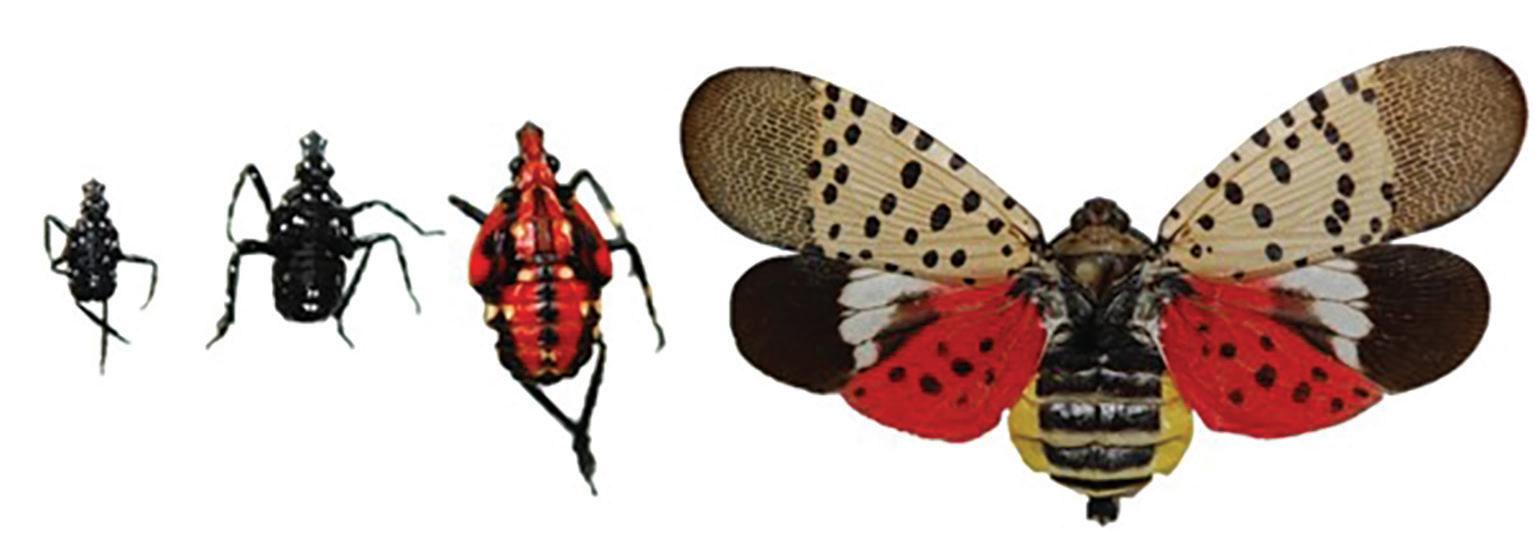
52 I NEW ZEALAND WINEGROWER I FEBRUARY/MARCH 2023 THE PLACES
Spotted lanternfly nymphs and adult. Image credit: Laurence Barringer, Pennsylvania Department of Agriculture
• It lays eggs on inanimate surfaces (buildings, posts, stone, containers, vehicles) as well as host material. The egg stage also lasts eight months, providing ample opportunities for transport to new areas.

• Egg masses are covered with a sludgy proteinaceous coating and look like dried mud, making them very difficult to detect.
• Nymphs and adults are voracious feeders on many hosts and frequently host-switch; they can be unpredictable. First to third nymphal instars feed on herbaceous tissues, fourth instars prefer woody hosts, adults feed on a range of hosts over a four-month period, so able to do a lot of damage. Grapevine is a key host of all life stages, but the lanternflies constantly move in and out of vineyards.
• Feeding preference is relative to what is in the area and it is hard to predict where they might move; constant shifting results in patchy distribution.
• Lanternflies move across landscapes, from crops to managed parks and backyards, to natural or managed forested areas. Controlling them in vineyards alone can have little effect.

The spotted lanternfly is a highly mobile pest and if it becomes established in New Zealand it will be very difficult to prevent it from entering vineyards. Reports from the United States indicate spotted lanternflies tend to congregate around the edges of vineyards in higher numbers. They appear to be sensitive to most contact insecticides, but these do not prevent re-infestation and the sheer number of them are a major issue for control. The most effective insecticides are pyrethroids, neonicotinoids and organophosphates, which disrupt IPM programmes for established pests and diseases.
Risk of entry into New Zealand
A pest risk analysis was carried out by the Ministry for Primary Industries in March 2020. The risk assessment found that the most likely ways spotted lanternfly might enter New Zealand are via inanimate pathways (such as shipping containers or vehicles), on forestry products, or in passengers’ personal effects.
The life stage most likely to arrive is egg masses, but the risk of them being viable is considered low due to the conditions they would undergo during transportation. However, if they are viable, the likelihood that a population could establish is considered moderate to high, and New Zealand’s climate is thought to be suitable to sustain populations.
Technology for efficient irrigation management
Galileo CLOUD

The most advanced Cloud-based controller for viticultural irrigation & fertigation

Amiad Steel Screen Filters

The first choice for high volume filtration of bore water and river takes
KROHNE Electromagnetic Flowmeters



High precision flow meters for irrigation, water supply and process control applications
A.R.I. Combination Air Valves
Protect pipelines & equipment from entrapped air to increase efficiency & reduce pumping costs

To find your local dealer contact Water Supply Products: Auckland: 09-916 0094 Christchurch: 03-348 1293 wsp@watersupply.co.nz www.watersupply.co.nz
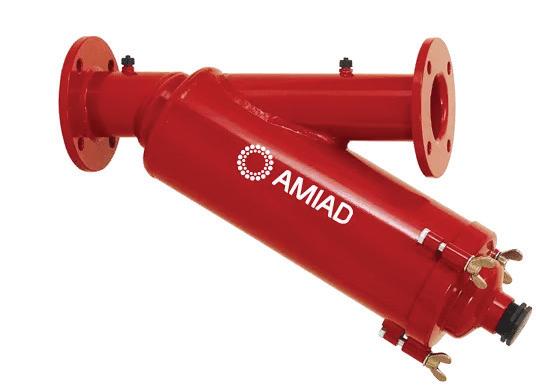
NEW ZEALAND WINEGROWER I FEBRUARY/MARCH 2023 I 53 THE PLACES
Spotted lanternfly adults congregate on a vine in a Pennsylvanian vineyard. Image credit: Jacqui Todd, Plant & Food Research.
On your behalf
Advocacy on matters of vital importance to the industry
SARAH WILSON
The future of the Sale and Supply of Alcohol Act: what this means for winegrowers
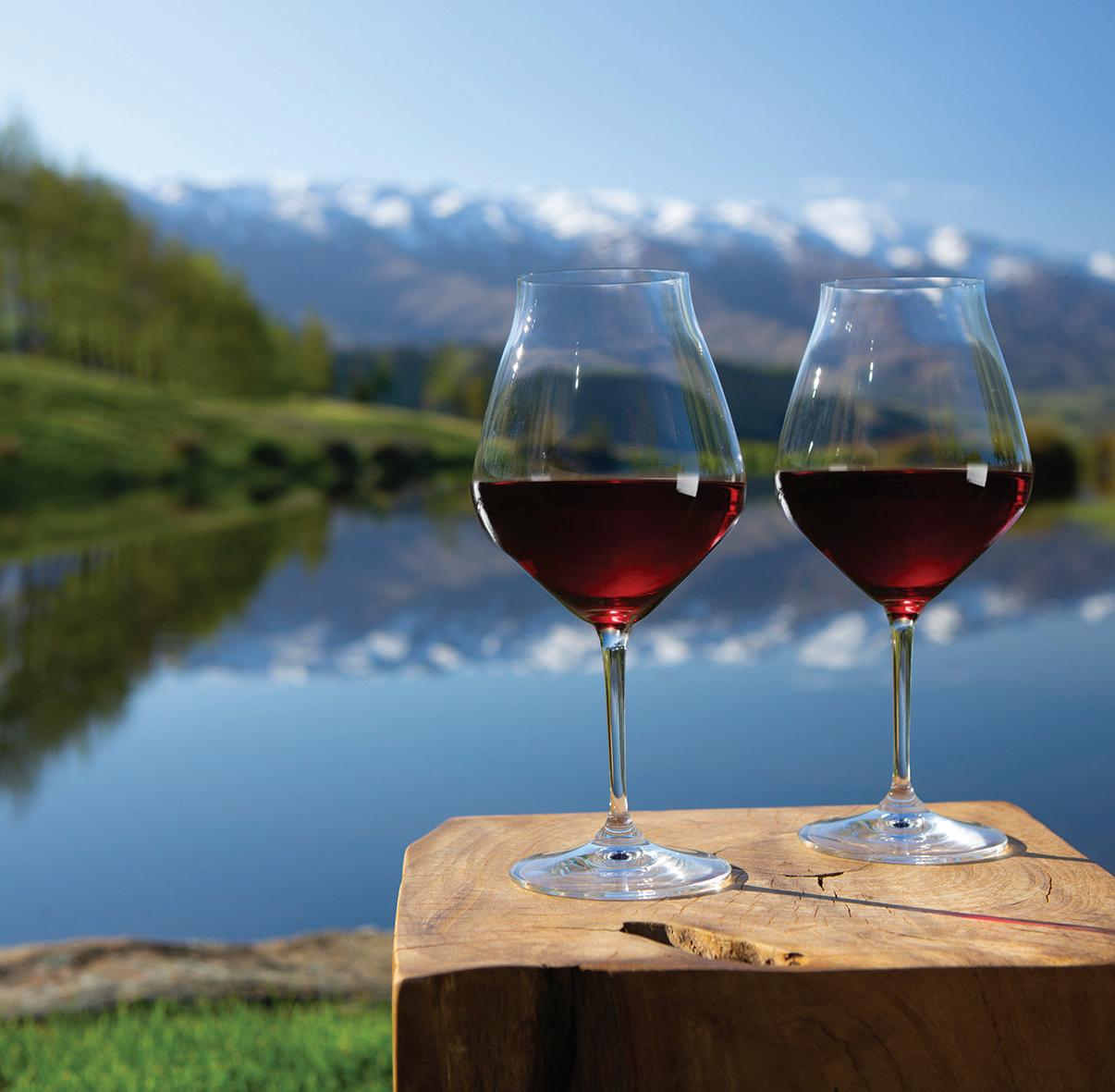
The Sale and Supply of Alcohol Act (previously known as the Sale of Liquor Act) is a law that nearly all wineries will deal with in some way – some hold one licence but others hold multiple licences to run the different parts of their business (for example a cellar door and restaurant). The Act sets out when you need a licence, what type of licence you need, how to get one and how it must be run.

There are a number of potential changes to the Act in the pipeline, set out below. These are all up to date at the time of publication, but the position may have changed by the time you read this – for the latest information, keep an eye on our current consultations page: nzwine.com/ members/current-consultations
Cellar Door Tasting Bill
Stuart Smith MP’s private member’s Bill has been drawn from the ballot in Parliament – this bill has not yet had its first reading in Parliament. If passed, changes will be made to better support winery cellar door businesses and appropriately provide for wine tourism by enabling cellar doors to charge for tasting samples, without the need for an on-licence. The Bill would also create a dedicated category of a winery cellar door off-licence, in recognition of their low risk, which means wineries do not need to meet complex revenue tests in order to hold an off-licence. More information, including on other changes under the Bill, is available at: nzwine.com/members/cellardoor-tasting-amendment-bill
A request to our members
NZW invites wineries to contact their local MP to raise awareness of this Bill and its significance. To assist, NZW have created a factsheet, which outlines the key change and the reasons for it that members can refer to, available at the link above. You can find out your local MP and their contact details at www.parliament.nz. Please also send a copy of your correspondence to advocacy@nzwine.com to support our discussions.
Community Participation Bill
The Government has introduced a new Bill that would change the processes for local alcohol policies. The Bill would remove the ability to appeal a local alcohol policy, allow licence renewals to be declined if they are inconsistent with such a policy, and broadening the categories of people who can object to a licence application. The Bill proposes other changes intended to make the hearings process less legalistic and adversarial. NZW has submitted to the Select Committee on behalf of our members. The Government has said they are aiming for the Bill to pass into law by mid-2023.
Harm Minimisation Bill
This is another private member’s Bill drawn from the ballot in Parliament, this one proposed by Chlöe Swarbrick MP. The
Member survey
Bill would make some changes which are similar to the Community Participation Bill, but would also impose restrictions on alcohol advertising and sponsorship of broadcast sport. This Bill has not yet had its first reading and there is no consultation process currently open.
Review of the Act:
The Government has indicated that it will undertake a wider review of the Act, including on topics such as alcohol advertising and sponsorship, licensing structures, marketing and pricing. We will keep members updated with any developments. As always, the Advocacy team is here to help our members if you have questions or need support on anything related to the Act. You can contact the team at advocacy@nzwine.com
As part of our ongoing engagement with the Act and these changes, the advocacy team has prepared a survey for members to let us know about how the Act is currently working for their business, and where changes would be beneficial. We would like as many members as possible to complete the survey before it closes on Friday 10 February: surveymonkey.com/r/N5MGQYZ. You can also contact advocacy@nzwine.com
54 I NEW ZEALAND WINEGROWER I FEBRUARY/MARCH 2023
Cloudy Bay
Kiwi Summer Lovin’
It’s not all work and no play! Leaf plucking, canopy trimming, alfresco dining and big blue skies have been the order of the day in the vineyards and cellar doors as we count down to Vintage 2023.

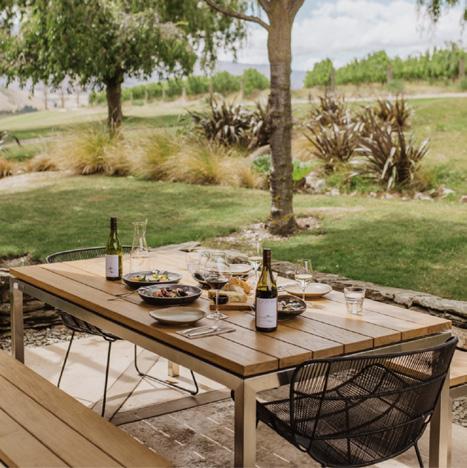
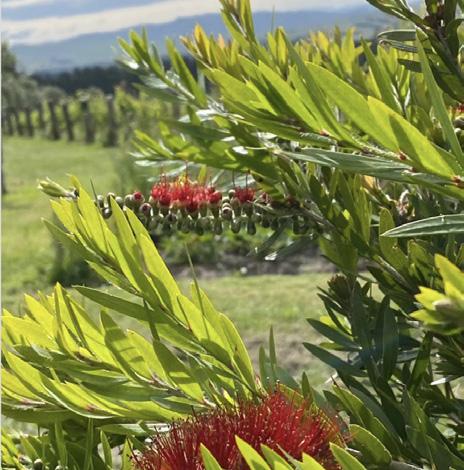
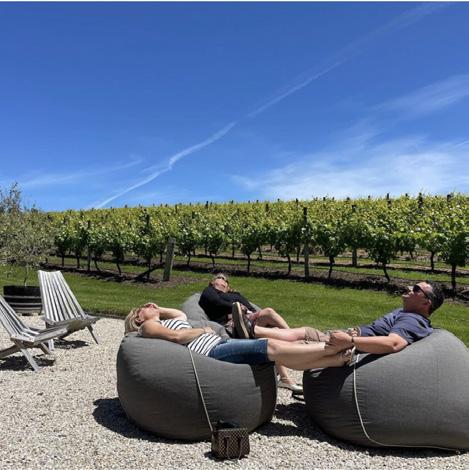
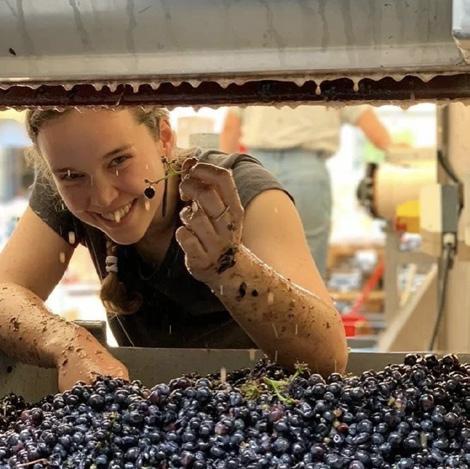
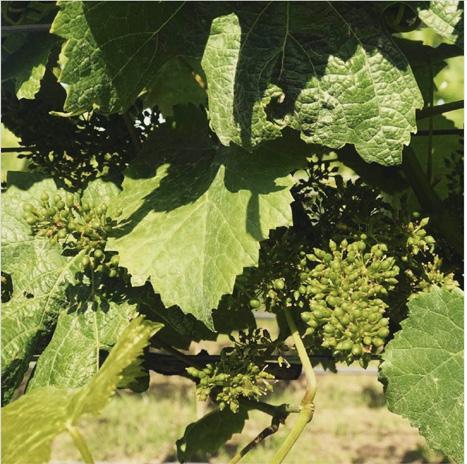
215,877 POSTS TAGGED #NZWINE AND COUNTING
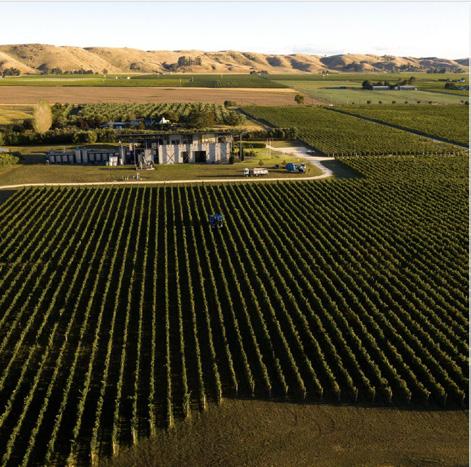

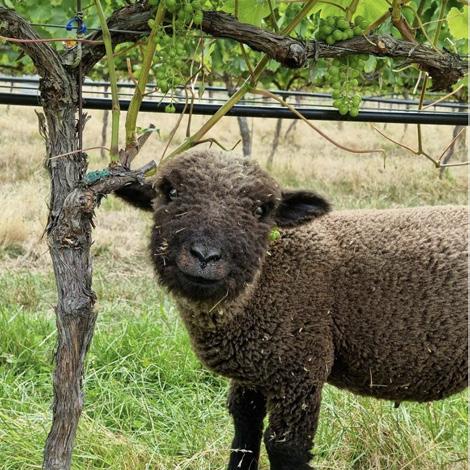
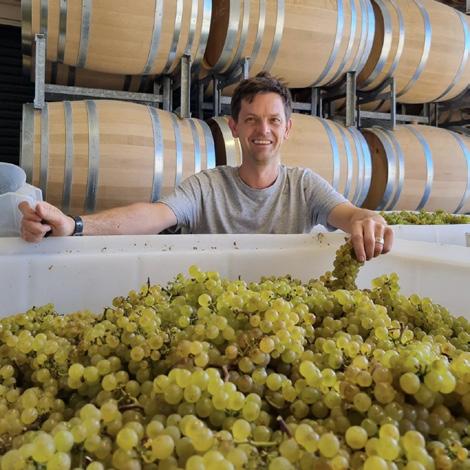
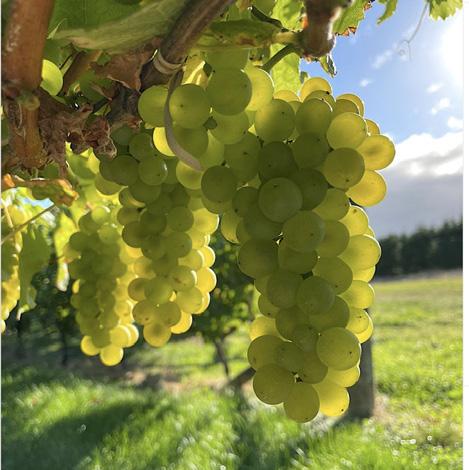
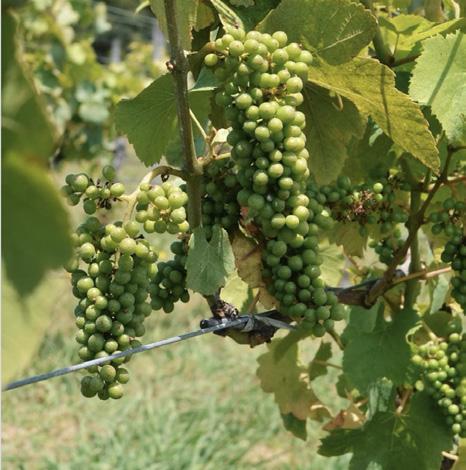
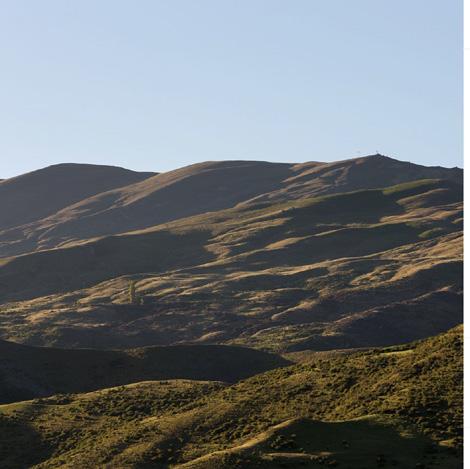
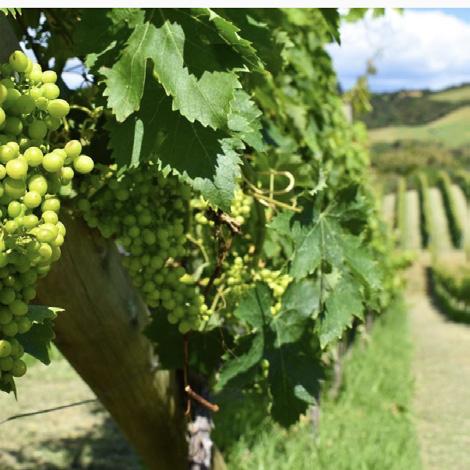
240 CELLAR DOORS LISTED ON NZWINE.COM
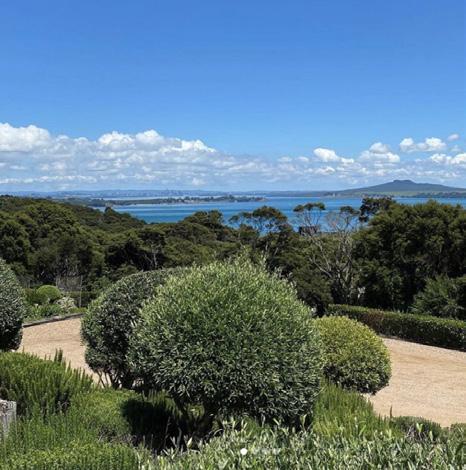
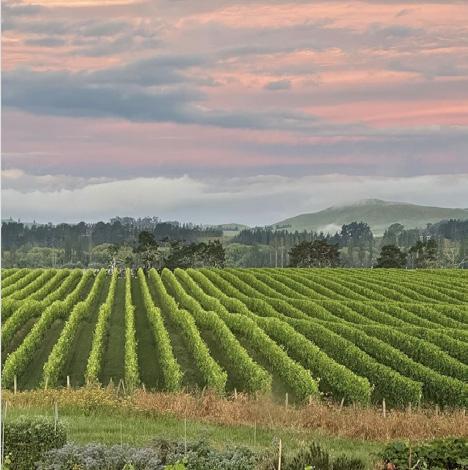
Don’t forget to use #nzwine or tag @nzwinegrowers for your chance to be featured.


NEW ZEALAND WINEGROWER I FEBRUARY/MARCH 2023 I 55 THE SOCIAL PLACE @HOPESGROVEWINES @CENTRALOTAGOWOMENINWINE @TWOTERRACESVINEYARD @FLAXMORE_VINEYARDS
@MCCORKINDALEWINES @ASKERNEESTATE @LEEFIELD_STATION @SACREDHILLWINE @BROODFERMENTATION @PARITUAWINES @TERRASANCTAWINE @ARAWINES @MUDBRICK_NZ @THECLOUDYBAYSHED @ BLACKENBROOKWINE @ URLAWINE
@MTDIFFICULTY
@THELANDINGWINES
Mark Daniel’s updates on machinery and technology

The future is already in the vineyard
Just prior to Christmas, Winegrower Magazine’s machinery editor Mark Daniel was a guest at CNH Industrial’s Tech Days in Phoenix Arizona. The event was a showcase of the global giants’ current and emerging technologies in agriculture, horticulture and viticulture.
In the case of the latter, much of the focus was around individual vines, speed and quality of harvest and ongoing season on season productivity. The well-known Braud self-propelled harvesting range is now available with a new automated guidance system that doesn’t require a GPS connection. The SmartSteer system, available on all 9000L, M and X variants uses a 3D camera system to survey its surroundings up to 33 times per second, while also looking at the growing canopy up to 10 metres ahead of the machine to self-steer automatically. Particularly suited to night-time operations, an infra-red illumination system allows to camera to work consistently even on dark, moonless nights.
The system also measures the selfaligning head angle to inform the machine steering direction. Said to allow operators
to spend more time on observing the crop flow and the working environment, SmartSteer also helps reduce fatigue alongside supporting a more efficient and productive harvest.
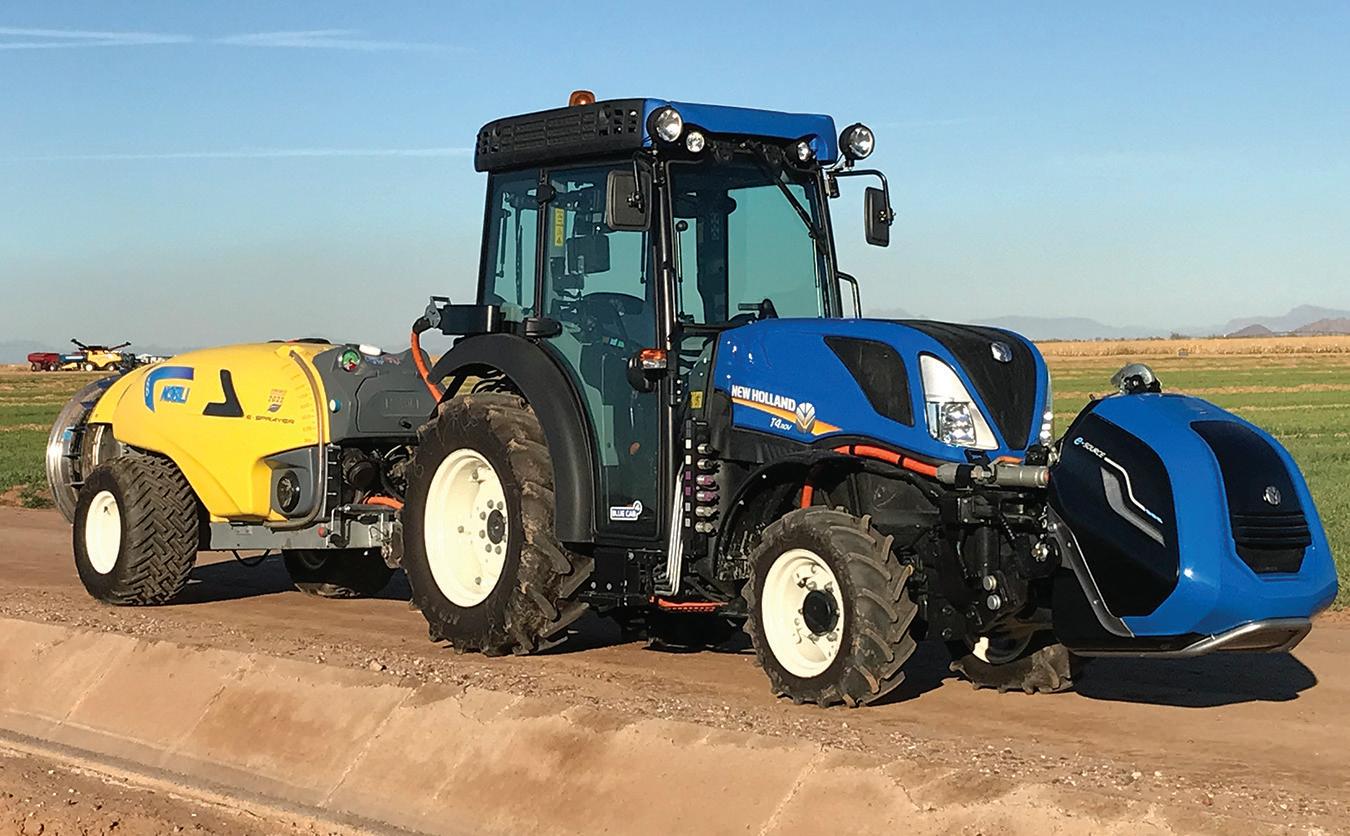
During the harvesting operation, the Braud Intelligent Management System-
functions, meaning the operator can set a preferred picking head height that is automatically maintained during changing ground conditions or terrain. In operation, sensors also ensure that that picking head cannot meet the ground. During moves between vineyard blocks, machine height is also maintained, using the auto-levelling system, to ensure the picking head is held secure at roading speeds.
IMS 2.0 continually monitors engine power demand to help maintain pre-set parameters constantly, also looking at terrain and hydrostatic drive loading before adjusting engine rpm. Meanwhile, the Twin Lock hydrostatic system maintains traction between the front and rear axle wheel motors which is said to be particularly
Looking at other useful functions, Quality Fruit Selection can be used to select two grape qualities within a block. Pre-harvest a quality map is established using Precision Land Mapping (PLM) and loaded into the harvester control system. As the harvester moves along individual rows in the prescribed area, it can recognise its position with regards to the previously loaded map, from where it loads Quality A grapes into one hopper and Quality B examples to the other.
This function allows users to extract higher quality grapes from a given area, rather than mixing them with those of “ordinary” quality.
Compared to hand-picking, this allows for the development of the best wines from



• Land: 9.18 ha (22.68 acres)

XXXXXXXXX 56 I NEW ZEALAND WINEGROWER I FEBRUARY/MARCH 2023 MACHINERY UPDATES Nuts and bolts
Matakana Matavino
By means of telematics, multiple machines working in the same block can see the total work coverage for the area.
6 Hamilton Road,
Award winning boutique vineyard and farm
By Negotiation
Mellor +64 27 929 7767 annie.mellor@raywhite.com Black Group Realty Limited Licensed (REAA 2008)
• 2 rental homes Price
Annie
heterogenous vineyards.
On the sustainability front, the event also showcased the New Holland T4-ePower system, based around one of its well-known T4 specialised tractors, but carrying a front mounted, PTO-driven generator pack. Delivering a 50kw, high voltage feed to rearmounted implements, the layout is designed to increase efficiency by allowing the tractor to operate at a fixed engine rpm.
Working with leading implement manufacturers in the sector, the mechanical/electrical delivery system sees rear implements solely driven by electricity, offering the benefits of ease of coupling which increases operator safety by not having to squeeze between the tractor and machine to attach the PTO shaft. The high voltage interface, when coupled with an electrically driven sprayer is said to have resulted in a 35% fuel reduction alongside a 35% reduction in CO2 emissions.

Looking a little more closely at control and management systems, MY PLM Connect-Viti is a new platform aimed at adapting the Cloud and Off Board solutions to the specific needs of permanently planted crops.
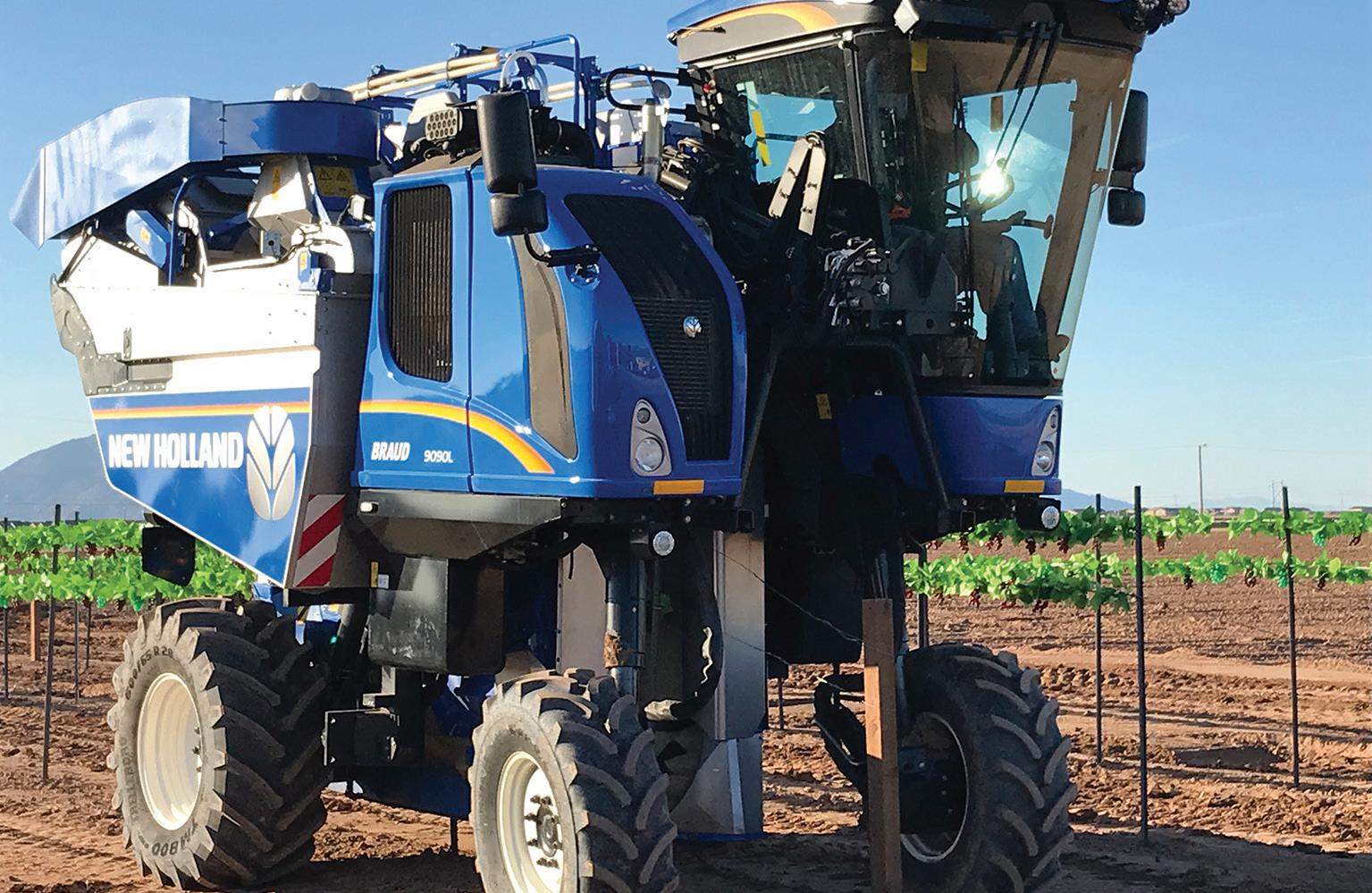
Connect Viti features Track, Trace and Map functions, with each module targeting

direct added value for each of the key roles in any vineyard operation. Typically, this may be an operator looking for the last “worked” row in the vineyard, a manager looking for fleet visibility, or an agronomist wanting mapping or agronomy-related data. This solution is also available to work in conjunction with the machinery of other manufacturers, if they can connect to the My PLM Connect World.
PLM-IntelliField, together with the Processing and Connectivity Module enables operators to share GOS machine
coverage maps between multiple machines. By means of telematics, multiple machines working in the same block can see the total work coverage for the area. This practice helps to ensure that each row is only sprayed, fertilised, pruned or harvested once. It also makes sure that each row receives the proper levels of treatment or application for the greatest potential success, while also helping with safety, by allowing operators to see the exact position of other machines working in the same locale.
NEW ZEALAND WINEGROWER I FEBRUARY/MARCH 2023 I 57 NUTS AND BOLTS
A regular feature to inform industry about research projects being undertaken for their benefit. Newly approved projects (when available) are briefly summarised and longer reports will describe what has been achieved so far. When completed, each project will be reported in full detail with references, on nzwine.com
Information and updates on Bragato Research Institute research programmes.
CONTRACTED RESEARCH PROJECTS
Research Supplement
Information and updates on Bragato Research Institute research programmes.
CONTRACTED RESEARCH PROJECTS
Quality Wine Styles for Existing and Developing Markets
Breaking the quality-productivity seesaw in wine grape production (Pinot Noir Programme)
University of Auckland, Plant & Food Research and Lincoln University (Various) jointly funded by New Zealand Winegrowers and MBIE
Prevention of quercetin instability in bottled wine
Villa Maria Wines Limited (O Powrie)
The effect of winemaking decisions on polysaccharide content in wine
University of Auckland (B Fedrizzi)
The importance of green: understanding ‘green’ and ‘herbaceous’ characters in Pinot noir wine and their role in driving judgements of perceived quality. Lincoln University (D Torrico)
Exploring reductive aromas in Pinot noir
University of Auckland (B Fedrizzi)
Precipitation of calcium tartrate and other compounds in wine
University of Canterbury (K Morison)
Potential applications of nanotechnology for wine growing in New Zealand
University of Auckland (M Kah)
National Vine Collection Virus Eradication
Bragato Research Institute (D Lizamore)
Pests and Disease
Improving remedial surgery practices for control of grapevine trunk disease to increase vineyard longevity
Linnaeus (E van Zijll de Jong), South Australian Research & Development Institute (M Sosnowski)
Weevils in New Zealand vineyards
Bragato Research Institute (P Epee)
Cost Reduction/Increased Profitability
Long spur pruning as an alternative to cane pruning for Sauvignon blanc in Marlborough
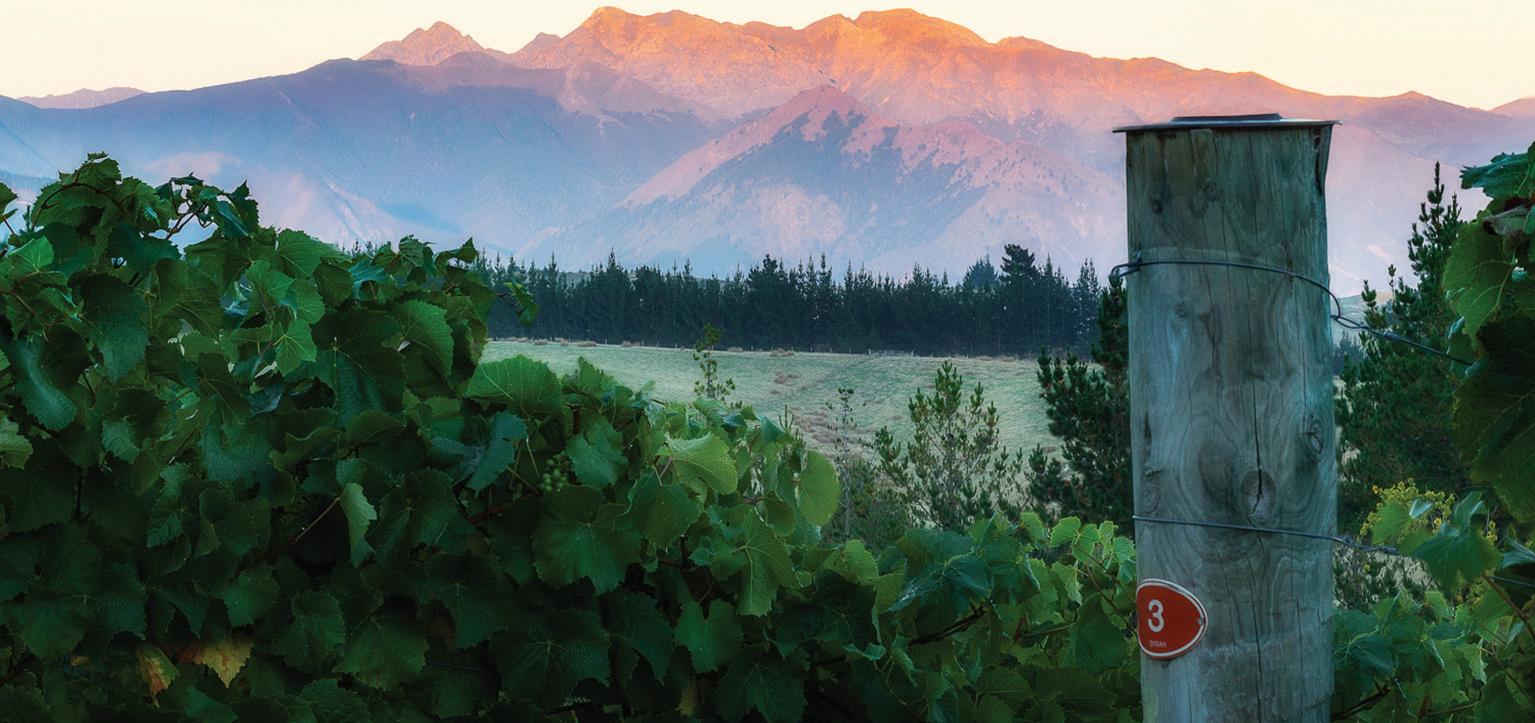
Bragato Research Institute (C Vasconcelos)
The Vineyard Environment
Microbial Responses to Under Vine Treatment
Bragato Research Institute (M Barry)
Shared Vision for Land Use in Marlborough
Bragato Research Institute (M Barry)
Regenerating Vineyard Soils - Phase One
Bragato Research Institute (M Barry)
Development of an anaerobic chain-elongation bioprocess for grape marc valorisation
University of Auckland (S Yi)
Evaluating ecologically sustainable ways to disrupt the wine weta-vine association
Plant and Food Research (J Vereijssen)
Weather and Climate
Sauvignon Blanc Grapevine Improvement Programme
Bragato Research Institute (D Lizamore)
Microbial community and vine responses to increasing temperatures in the New Zealand context
University of Auckland (S Knight)
Evaluating water use efficiency and drought tolerance of various rootstocks grafted to Sauvignon blanc
Bragato Research Institute (C Vasconcelos)
Tuned Vines
Bragato Research Institute (D Lizamore)
RESEARCH
58 I NEW ZEALAND WINEGROWER I FEBRUARY/MARCH 2022
SUPPLEMENT
58 I NEW ZEALAND WINEGROWER I FEBRUARY/MARCH 2023
Vista Wines. Photo by Chocolate Dog Studio
Introducing the new BRI rootstock trial
Dr M Carmo Vasconcelos (Bragato Research Institute)
As vineyards age and succumb to trunk disease, there is an urgent need for information to support replanting decision-making. The selection of rootstock is one of the most important decisions in the development of a vineyard. To address this issue, Bragato Research Institute (BRI) recently started a rootstock research programme. A new research trial was planted in October 2022 in the Wairau Valley of Marlborough. It includes 14 rootstocks combined with three levels of irrigation, with the goal of identifying rootstocks which will prepare us for a warmer and drier future.
primarily due to rising temperatures, changing precipitation patterns, and an increase in the frequency of extreme events (Pörtner et al., 2022), affecting grape yield and quality. Drought, flooding, and soil erosion are only a few indirect effects of climate change that limit productivity and alter grape composition. Adaptation and mitigation are two strategies for reducing and controlling the impact of climate change.
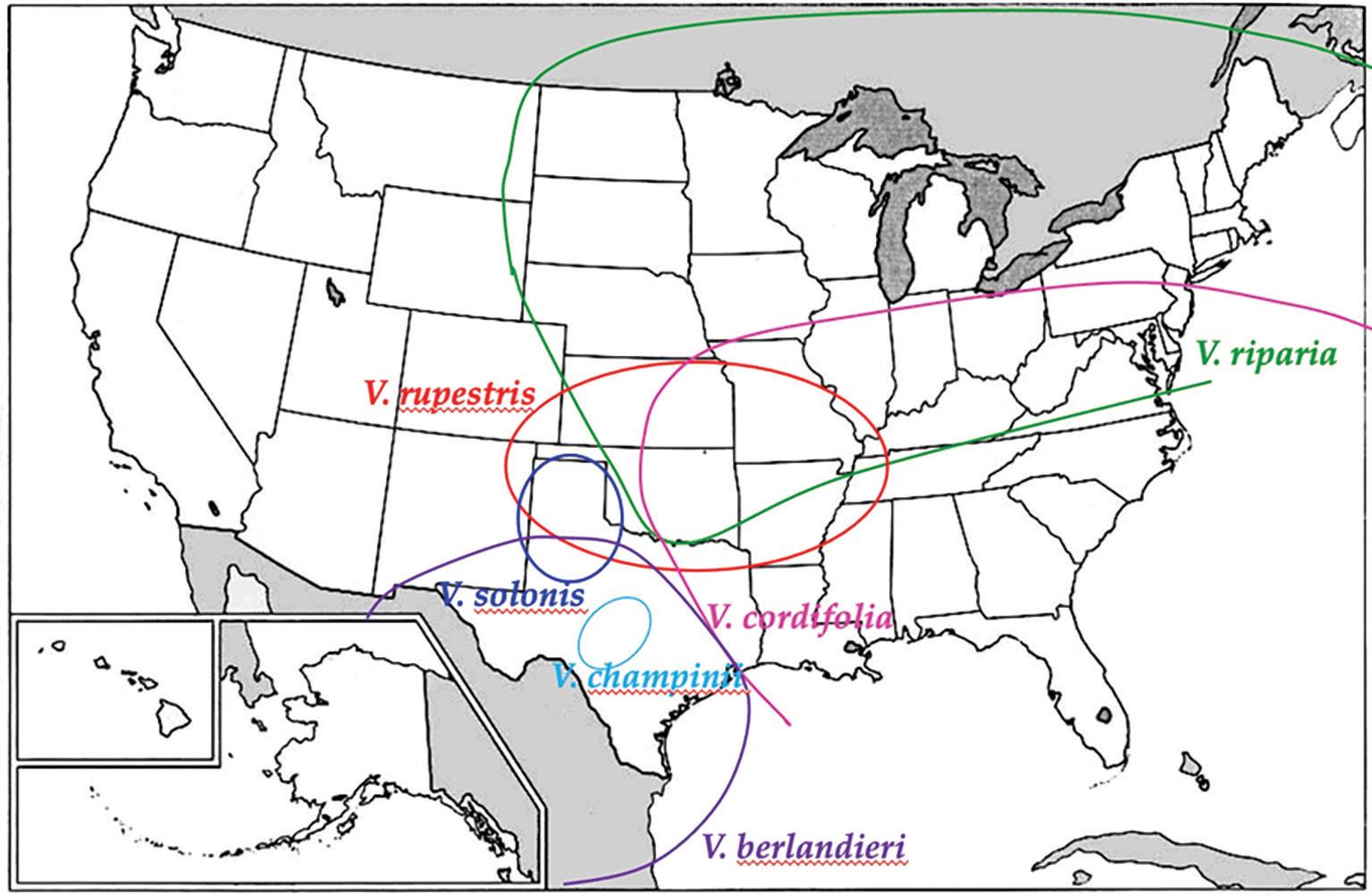
New adaptation strategies are required to deal with climate change, and using more efficient rootstocks is a sustainable solution.
Higher global air temperature and intensity of climatic anomalies are projected to increase evaporative demand (Pörtner et al., 2022). These effects could be mitigated by increasing transpiration rates and lowering leaf temperature.
efficiency (WUE) is critical to ensure viticulture’s long-term viability.
Rootstocks have been reported to alter the gas-exchange performance of the scion and regulate water use efficiency (Barrios-Masias et al., 2015; Bartlett et al., 2022; Berdeja et al., 2014; CandolfiVasconcelos et al., 1994; Carbonneau, 1985; Cuneo et al., 2021; Dargie et al., 2014; de Souza et al., 2022; Lucini et al., 2020; Marguerit et al., 2012; Reingwirtz et al., 2021; Sampaio, 2007; Tsegay et al., 2014; Yildirim et al., 2018; Zhang et al., 2016; Zombardo et al., 2020).
UNDERSTANDING GEOGRAPHIC ORIGINS AND CHARACTERISTICS OF ROOTSTOCKS
The domesticated grapevine is a composite of two genomes. The root system of the vine, or the connection between the soil environment and the plant, is represented by the rootstock genotype. Rootstocks are crucial for storing nutrients and carbon assimilates and absorbing water and minerals. The grafting point designates the junction between the root (belowground organs, i.e. rootstocks) and the shoot (above-ground organs, such as those of V. vinifera).
Rootstocks were originally selected for pest resistance, ease of rooting, grafting, propagation, and limestone tolerance. By providing the interface between the soil and the scion, rootstocks also impact nutrient and water uptake and many aspects of scion physiology via hydraulic and chemical signalling.
Anthropogenic climate change has impacted viticulture in almost all wine regions in recent decades,
The water footprint of agriculture is under increased scrutiny, and industries need to be prepared for future restrictions on water available for irrigation. Optimising water use for vineyards by increasing water use
Interspecific hybrids of the American species Vitis riparia, Vitis rupestris, and Vitis berlandieri make up the majority of rootstock types. Knowledge of the geographic origins and characteristics of the parent species helps in understanding the potential attributes of their crosses.
Wild Vitis riparia spreads over the largest geographic area, from the centre of Canada to Texas and
NEW ZEALAND WINEGROWER I FEBRUARY/MARCH 2023 I 59 RESEARCH SUPPLEMENT
NEW PROJECT
Figure 1. Geographical origin of the main American Vitis species used as rootstocks
New adaptation strategies are required to deal with climate change, and using more efficient rootstocks is a sustainable solution.
Louisiana in the south and extends to eastern Canada and the American states bordering the Atlantic (Figure 1). It grows on riverbanks in moist, fertile soils. The root system is shallow growing. It has high resistance to phylloxera, resistance to humidity, has a short vegetative cycle and is adapted to cold climates. It has low to moderate vigour and low tolerance to limestone. It grafts well (Galet, 1988; Pongrácz, 1983). Vitis riparia Gloire de Montpellier is a widespread selection used as a devigourating rootstock in fertile soils.
Vitis rupestris is native to the South of the United States. It is a shrub rather than a vine. It is found in the wild on gravelly banks of mountain streams. It has high resistance to phylloxera, is resistant to drought in deep soils with penetrable subsoils, has a very long vegetative cycle, and is very vigorous. The root system is very deep growing. It roots easily and grafts well. It is sensitive to lime-induced chlorosis and does not tolerate wet feet (Galet, 1988; Pongrácz, 1983). Rupestris du Lot is a variety used in warm climates with long growing seasons.
Vitis berlandieri is native to the limestone hills of southwest Texas and grows in northern Mexico. It has an excellent grafting affinity with V. vinifera. This species is not used as a rootstock because its cuttings are very difficult to root. That is why it has been crossed with easy-rooting species such as V. riparia and V. rupestris. V. berlandieri was originally selected for its resistance to limeinduced chlorosis. It is a species best suited to hot climates and has a long vegetative cycle. It is very vigorous and very drought tolerant (Galet, 1988; Pongrácz, 1983).
There have been several long-term rootstock trials conducted by Plant & Food Research comparing the performance of Sauvignon blanc grafted to five rootstocks (3309 C, 101-14 Mgt, Schwarzmann, Teleki 5C, Kobber 125 AA) (Neal et al., 2014). Commercial rootstock trials have also generated valuable information on yield performance and fruit composition. The objectives of those studies did not include rootstock’s impact on the water relations of the scion. We propose focusing this
study on rootstocks’ performance under limited water availability. Rootstocks that can confer improved water efficiency will contribute to the industry’s resilience.
The main rootstocks used in New Zealand vineyards are interspecific hybrids of V. riparia and V. rupestris. As a group, they have low to moderate drought tolerance and confer low to moderate vigour to the scion (Shaffer et al., 2004). Figure 2 shows the parentage of the most common rootstocks.

Crosses of berlandieri X riparia and berlandieri X rupestris have been shown to have a higher tolerance to drought than the riparia X rupestris crosses. They also confer moderate to high vigour to the scion and are potentially better suited to a warmer and drier climate resulting from global warming (Sampaio, 2007).
One of the main issues limiting plant productivity is the availability of water; hence one important strategy for improving agrosystems is the development of crop types that use water more efficiently (Condon et al., 2004). To maximise yield, organic and inorganic assimilates must be preferentially allocated to the harvested organ, the grapes in
viticulture. Ravaz (1906) proposed the use of pruning weight as a proxy for canopy size and vegetative growth and popularised the use of the ratio of yield to pruning weight as an estimate of the balance between reproductive and vegetative growth of grapevines. Based on his observations, the ideal values for what is now called Ravaz Index (RI) range between five and seven. Sauvignon blanc grown in Marlborough produce yearly an enormous quantity of wood, 90% of which is removed with winter pruning and displays a RI between one and four. This low ratio may be related to the need to reinforce shoot tissues with thick cell walls to enable the vine to withstand high winds. However, improving this ratio should be one of the criteria for rootstock selection.
Besides tolerance to phylloxera, rootstocks also provide some protection against other pathogens such as nematodes (Edwards, 1989; Ferris et al., 2012; McKenry & Anwar, 2006; Pinkerton et al., 2005; Smith et al., 2018; Téliz et al., 2007; Wallis, 2020), mealybugs (Naegele et al., 2020) and may be more or less tolerant of trunk disease pathogens (Gramaje et al., 2014).
For the literature cited, please visit bri.co.nz/2023/02/07/introducing-brirootstock-trial
60 I NEW ZEALAND WINEGROWER I FEBRUARY/MARCH 2023 RESEARCH SUPPLEMENT
Figure 2. Parentage of internationally available rootstocks according to their breeders. Recent research confirmed the genetic background of most but not all of these hybrids (Riaz et al., 2019). One of the unknowns is the widely used 3309 Couderc. The rootstocks used in the BRI trial are highlighted in grey.
Potted Vines: Exploring the management effect of leaf area to fruit weight ratios on yield and quality
The concept of vine balance is attaining a functional equilibrium between the three essential grapevine sinks — fruit, shoots, and roots. This means that any manipulation of source-sink balance that alters competing sinks will influence the equilibrium of the plant. The leaf area to fruit weight ratio (LA:FW) is a key metric used for assessing balance between the vegetative and reproductive growth of the vine. This ratio indicates that the main source of carbohydrates supplied to the fruit derives from leaf photosynthesis. A leaf area of 0.8-1.5m2 of leaf/kg of fruit is reported to be optimal in the field. An alternative measure is that to ripen a bunch a shoot requires 14 leaves. Thus, vines that are source limited (inadequate leaf area) or have a high yield and excessive sink demand, will potentially have inadequate carbohydrates to enable fruit to reach an optimum ripening. The outcome of this imbalance is grapes can be low in soluble solids concentration, lighter colour, and undeveloped flavours and aroma at harvest. Therefore, it is essential to define the right balance between the vegetative and productive relationship to increase yield as well as improving the biochemical composition of the grape, ultimately affecting the yield-quality seesaw.
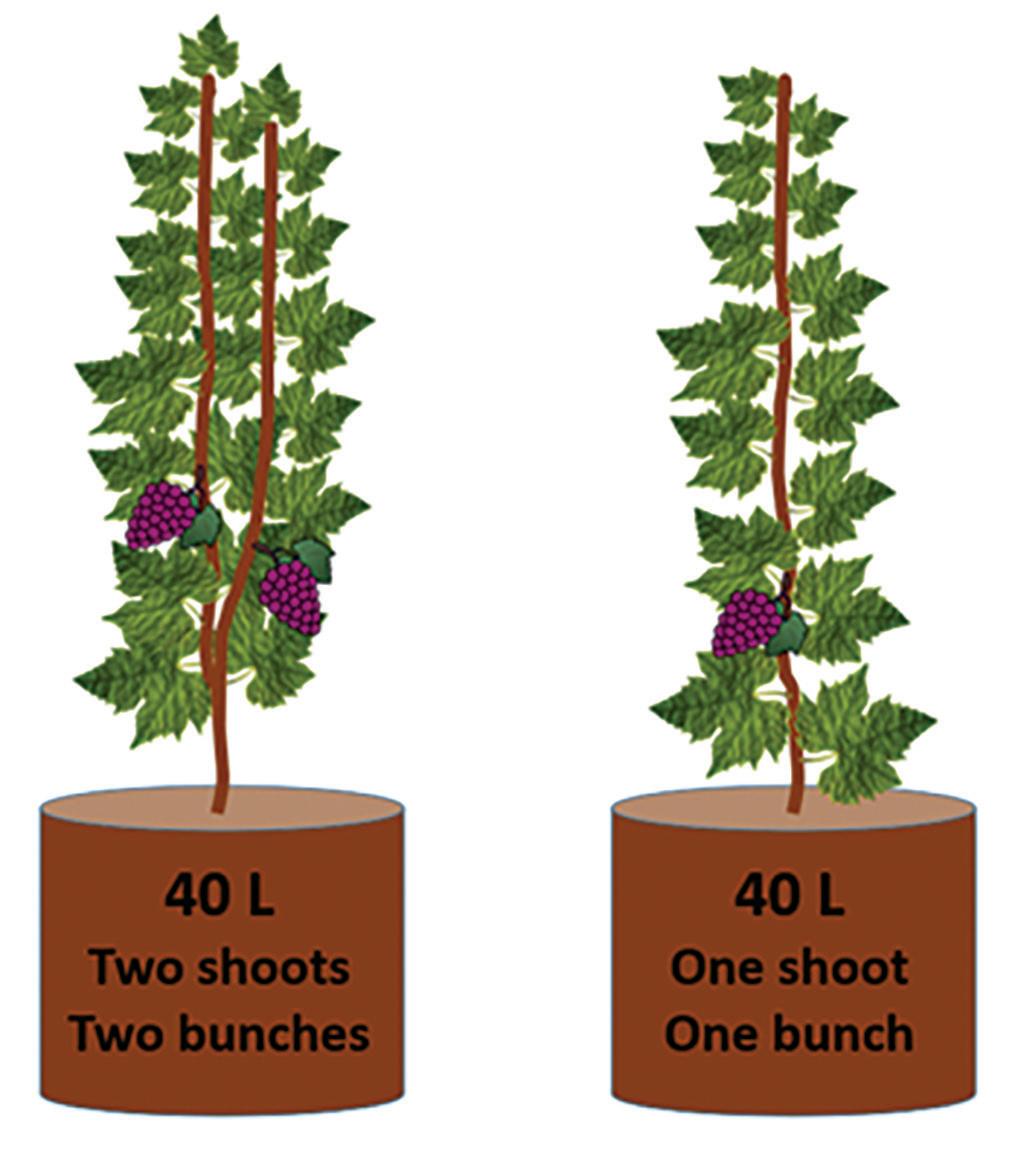
POTTED VINE SYSTEM AND EXPERIMENTAL SET UP
Our work aims to investigate the influence of changing the leaf area to fruit mass ratios on the yield and quality of Pinot noir using a potted vines system. This model
system does not limit the theoretical source-sink ratio but alters the overall above-ground source sink size. It also minimises the influence of microclimate and existing sourcesink imbalances that happen when working with field vines.
Two treatments were applied to Pinot noir vine clones, 777 and Abel grafted on rootstock 3309 on 2-year-old vines grown in 40 L pots. Vines were either pruned to retain one shoot with one bunch (1 shoot/1 bunch) or two shoots each
NEW ZEALAND WINEGROWER I FEBRUARY/MARCH 2023 I 61 RESEARCH SUPPLEMENT
PINOT NOIR PROGRAMME
Dr Romy Moukarzel, Dr Amber Parker, Dr Olaf Schelezki, Professor Brian Jordan and Professor Mike Trought (Lincoln University)
Figure 1 Experiment layout presenting the two applied treatments (one shoot carrying one bunch and two shoots each carrying one bunch). These treatments were tested for two Pinot noir clones, 777 and Abel.
with a bunch (2 shoots/2 bunches), with each shoot limited to 14 leaves per bunch. This is the suggested amount needed to ripen a bunch. Therefore, these treatments had the same LA:FW ratio as calculated by numbers of leaves and bunches despite one treatment having twofold the total amount of both. This experiment was repeated over two growing seasons and throughout the growing season, the vines were managed, monitored, and sprayed. At harvest, leaf area was measured, and the dry weights of the root, trunk, shoot, and leaves were recorded. Berry weight, total soluble solids (TSS), titratable acidity (TA) and pH as well as phenolics and amino acids were also measured.
OVERALL FINDINGS
Our findings show that whilst the total LA and FW increased (but not doubled) in the 2 shoots/2 bunches compared with the 1 shoot/1 bunch treatment, the LA:FW ratios were the same for both treatments. This means that the treatments were effective in generating the same LA:FW ratio but by carrying different overall (total vine weight) above ground size for the source (LA) and sink (FW) (Table 1). Total berry weight for Pinot noir 777 (both seasons) and Pinot noir Abel (2020/21) as well as total berry number for both clones (both seasons) were twice where vines had

2 shoots/2 bunches compared with those with 1 shoot/1 bunch. Pinot noir Abel had heavier cluster and berry weights than Pinot noir 777 (Figure 2).

The one shoot/one bunch vines (season 2020/21) had greater allocation to above ground vegetative growth when there were two shoots, each with one bunch despite
both having the same theoretical LA:FW ratio. When there were two shoots/two bunches, root growth was prioritised. There was greater allocation of carbohydrates to fruit compared to leaves in both treatments (Figure 3, A). In the 2021/22 season, both treatments had greater allocation to root growth (below ground) compared to above ground vegetative growth (Figure 3 and 4). It seems
62 I NEW ZEALAND WINEGROWER I FEBRUARY/MARCH 2023 RESEARCH SUPPLEMENT
Table 1 Effect of shoot number on average and total leaf area (LA), fruit mass and LA:FW ratio in both PN clones (Abel & 777) for both seasons (2020/21 and 2021/22). ± indicates Standard Error of the Mean (SEM).
Figure 2. Pinot noir bunches from 1 shoot/1buch and 2 shoots/bunches (1 shoot/bunch) treatments in both clones (777 and Abel).
that in this season the carbohydrates were equally allocated between above and below ground vegetative growth (Figure 3, B).
TSS, sugar concentration, TA, and pH, total amino acids and total phenolics did not differ in response to the two treatments. However, anthocyanin concentration as well as the specific anthocyanin malvidin-3glucoside concentration (known to be important for colour and quality perception in Pinot noir) increased in Pinot noir Abel in vines with one shoot/one bunch compared with two shoots/two bunches (one bunch/ shoot). Despite no differences in total phenolics, higher concentrations of caftaric and caffeic acid were found in 2 shoots/2 bunches compared with 1 shoot/1 bunch. This may negatively affect quality as these phenolic acids play a major role in grape reaction product formation, of which high concentrations result in juice and wine oxidation. Individual amino acids (proline, glutamine,

alanine, and histidine) had higher concentrations in the 2 shoots/2 bunches vines compared with 1
shoot/1 bunch vines. The increased accumulation of these amino acids (except of proline non-YAN) can have a positive effect on YAN and given amino acids play an important role in aroma and flavour precursor formation, this could have an indirect effect on quality.

TRANSLATING OUR RESULTS TO INDUSTRY
Our findings have emphasised the known importance of thinking beyond simply the yield-quality relationship, and rather focussing on the balance-quality relationship. Yield was less affected by shoot number and may be difficult to change in terms of the yield-quality seesaw in a potted vine model system. However balanced vines (defined by LA:FW ratio metrics) with no source limitation may not change in yield but can still change in berry composition and therefore potential quality. We propose that the vines invest in retention of carbohydrate partitioning at the cost of some secondary metabolism and therefore quality.
When interpreting the results in the context of retained node number at pruning, this means the node number could increase without creating a source limitation but still impact quality. Previous research outside of
NEW ZEALAND WINEGROWER I FEBRUARY/MARCH 2023 I 63 RESEARCH SUPPLEMENT
Figure 3. Effect of shoot number on vegetative growth parameters on a per shoot basis: root, trunk, shoot and leaf dry weights (g) in both Pinot noir clones (Abel & 777) for both seasons (2020/21 and 2021/22).
Figure 4. Root mass differences in relation to shoot number (one shoot vs. two shoot) of the two Pinot noir clones (Abel and 777) at harvest (2020/21).
this programme has demonstrated that high node numbers, which create a source limitation, initially increase yield and delay ripening and TSS accumulation, but vines will compensate and equilibrate yield and maturity over the seasons minimising these observed changes. However, our research suggests it is possible to increase node numbers without creating such a source limitation, but quality may still change. So, the balance for quality may be different to that for
ACKNOWLEDGEMENTS
The Pinot Noir Programme was a multi-year partnership between New Zealand Winegrowers and the Ministry for Business, Innovation and Employment that was managed by the Bragato Research Institute. The research programme ended in September 2022, aiming to grow returns through disassociating quality from yield in New Zealand Pinot noir production. This article concludes the findings of three research aims relating to potted vine studies

carbohydrate partitioning, indicating the potential to define a new ‘sweet spot’ where we can increase node load, meeting carbohydrate needs without compromising quality.
FUTURE CONSIDERATION
Based on these findings, future research could explore non-sourcelimiting node loads in field that generate stable increased yields over the years and determine the ‘sweet spot’ for optimising quality. These will
(2.2, 2.3 and 2.4): manipulating the yield-quality seesaw via competing sink, bunch micro-climate and leaf areas. For more information about the programme and these research aims, please visit the research library in the members’ section of nzwine.com.
THE AUTHORS WOULD LIKE TO ACKNOWLEDGE:
• The Bragato Research Institute and programme managers who led the research programme and the subcontract (NZWRC 17-105
be dependent on-site capacity and climate factors as well so this may need to be tailored at an individual vineyard level. Furthermore, extending shoot length (increasing leaf area by leaving more shoot nodes and trimming higher) could also be considered in combination with optimising non-source-limiting node loads. Based on our findings, an important component of this will be to consider not simply the yield-quality seesaw, but the balancequality seesaw.
to Lincoln University).
• Scott Gregan for his contributions to the programme.
• Brent Richards, Suzanna Post, Minoo Mohajer, Ghouse Shaikh Kulsum Peera and Stephen Stilwell from Lincoln University for assisting with vine maintenance and harvest.
• Damian Martin, Rebecca Deed and Emma Sherman for discussions on quality indicators in the programme.
64 I NEW ZEALAND WINEGROWER I FEBRUARY/MARCH 2023 RESEARCH SUPPLEMENT
Extraction and Reaction
The composition of wine at the pressing stage is a result of the various components from different grape compartments and their reactions. These outcomes depend on the rates that these components transfer from grape to must and/ or wine (extraction), and the rates of these important transformations (reaction).
In the Pinot Noir Programme, Research Aim 3.3 addressed this part of the winemaking process. By gaining a better understanding of extraction and reactions, winemakers can make better decisions related to the final phenolic composition of their wines. The programme had two key areas of investigation:
• How sensitive is the composition of wine at pressing to the concentrations of specific metabolites reactants (such as anthocyanins and tannins) in the must/wine at particular times during maceration/fermentation?
• What are the factors that control these concentrations?
Researchers established a maceration fermentation system on a lab scale and used this to investigate the effect of adjusting the relative concentrations of key components, particularly anthocyanins, flavanols and tannins. Because of the complexity and scale of ‘real-world’ winemaking, these lab scale trials have often been used to study some

of the key processes. For example, early studies in a white wine medium demonstrated that anthocyanins combine with tannins during winemaking and that this reaction both increases the amount of soluble tannin in a wine and leads to a more stable red colour. Other later studies have used model systems to study the effect of pH on the formation of coloured compounds in solutions containing anthocyanins, catechin and acetaldehyde; interactions of grape skin, seed and pulp on tannin and anthocyanin extraction; the precipitation of tannin-anthocyanin derivatives in wine; and, the effect of anthocyanin addition on tannin extraction from grape skins. Thus, lab scale model fermentation systems have over the years provided useful insights into processes occurring during winemaking and continue to be used by researchers today.
One of the requirements of this study was sufficient purified anthocyanin material for use in the experiments. Pinot noir grapes have lower anthocyanin concentrations when compared with many other red varieties. Pinot noir also contains no acylated anthocyanins, which are a more stable form of the compound. Therefore, methods for extraction of anthocyanins from Pinot noir grape material were investigated. Some published methods were not suitable because they did not properly separate anthocyanins from
other grape components, specifically tannins. This was clearly important because a primary purpose of the experiments was to investigate the reaction between anthocyanins and tannins. However, a suitable method was identified and refined. This allowed anthocyanins of consistent composition to be used in all five experiments conducted in this part of the programme.
Despite advances in characterising phenolic compounds in grapes and wines, winemaking products are complex and only their general features are known. A decision was made, therefore, to measure the products from the maceration fermentation system using relatively simple methods which might be relatively easily transferred to the winery situation. These were so-called MCP tannin and SO2resistant pigments. MCP tannin is a measure of wine tannin that has shown to be particularly useful for Pinot noir wines. The MCP stands for methylcellulose precipitable, which is essentially the way it is measured. Measuring SO2-resistant pigments is a long-established method, part of a suite of methods commonly referred to as the Modified Somers Colour Assay. Essentially, this is a measure of the red colour remaining in the wine after excess SO2 has been added. Because anthocyanins are bleached by SO2, this method targets modified anthocyanins, mostly after reactions with tannins but also including other red-coloured molecules. Sometimes this measurement is referred to as polymeric pigments because most, but not all, of the pigments determined are polymeric in nature (involving anthocyanins combined with tannins).
RESULTS FROM FIVE EXPERIMENTS RESULTED IN NOTABLE FEATURES:
When anthocyanins were present, wines had higher tannin concentrations than when anthocyanins weren’t present. This
NEW ZEALAND WINEGROWER I FEBRUARY/MARCH 2023 I 65 RESEARCH SUPPLEMENT
NOIR PROGRAMME
PINOT
Lokesh Kumar, Bin Tian and Roland Harrison (Lincoln University)
In this experiment, the additions of flavanols (catechin and epicatechin) and tannins were used to establish and test the lab-scale maceration and fermentation system
is a well-known result, but it was good to see it confirmed in the lab scale model maceration fermentation system. In this system, the period of two to four weeks after the end of fermentation was particularly important, indicating that a definite timescale exists for some of these reactions.
Anthocyanins declined exponentially with time, reaching negligible concentrations within 8-12 weeks. The exponential decline was faster in the presence of higher tannin concentration. By contrast, SO2resistant pigments increased with time.
Maximum SO2-resistant pigment values were obtained with lower rather than higher concentrations of tannin. By contrast, maximum MCP tannin was obtained with the higher rather than lower concentration of anthocyanins. This illustrated two points. First, more anthocyanin provided more wine tannin (assuming tannin is in excess, which is reasonable in most cases). Second, the anthocyanin-to-tannin ratio affected the nature of the products of the reaction, specifically that there appeared to be an optimum ratio to generate maximum colour. The other implication of this result was that MCP tannin and SO2-resistant pigments did not measure exactly the same material, although there was often a strong correlation between the two.
The chemical nature of anthocyanins means that they are highly soluble in water and alcoholic media, but this is less true of tannins and the monomers (predominantly catechin and epicatechin) from which they are derived. This was an important factor in determining the amount of tannin in solution at the end of one experimental period (90 days).
Experiments were also carried out to determine the effects of harvest date (early, mid, late), pre-fermentation maceration (0, 7, 14 days) and timing of tannin release (0, 4, 9 days after inoculation). These experiments generated less clear-cut results. The late harvest date favoured increased
MCP tannin and SO2-resistant pigments, as did the 14 days prefermentation maceration. Similarly, later release of tannin also favoured MCP tannin but there was no effect on SO2-resistant pigments.
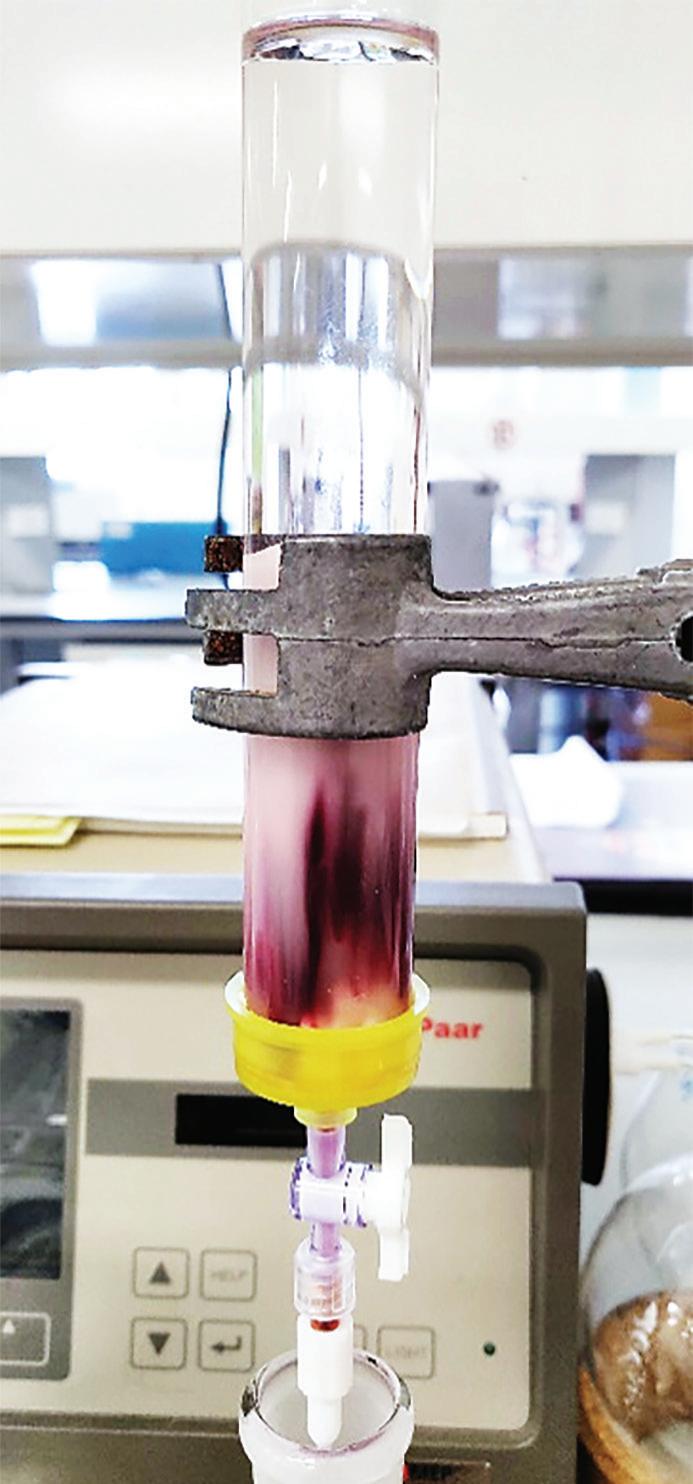
Overall, the results reveal that transformations and chemical reactions involving phenolic compounds begin immediately, that anthocyanins decline exponentially, and that modified tannins are the main products. The results presented here suggest a timescale for these processes, although this is likely faster at a commercial scale. The results also indicate that the anthocyanin-to-tannin ratio (something that is assessed in practice by visual observation and tasting but can be objectively measured) influences the nature of products. The results indicate that greater wine tannin and stable colour is favoured by later harvest dates and longer pre-fermentation maceration times (with limits, clearly). Finally, the results suggest that the reaction between anthocyanins and tannins is affected by the inherent solubility of species. Here, tannins and their consistent monomers are strongly influenced by alcohol content, something that increases gradually and then rapidly during fermentation. Also, note that in all experiments, malolactic fermentation was not a factor and that wines were without SO2 while on skins.
Clearly, every winery and every fermentation are different. So how might these general observations be used in practice? The results suggest that measurement of either MCP tannin or SO2-resistant pigments are good methods to monitor the progress of the reactions involved. MCP tannin is slightly more complicated to carry out and requires the use of a spectrophotometer (the CloudSpecTM instrument may have a role here). In the laboratory, the measurement of SO2-resistant pigments also utilises a spectrophotometer, but the procedure could be easily replicated in any winery; all that is required is glassware, a solution of SO2 of appropriate concentration, and a
white background. Using this basic apparatus, it would be relatively straightforward to ‘see’ the progress of these important processes and thus compare a group of wines from different fruit parcels or resulting from vineyard or winery trials.
The Pinot Noir Programme was a multi-year partnership between New Zealand Winegrowers and the Ministry for Business, Innovation and Employment that was managed by Bragato Research Institute. The science programme ended in September 2022, aiming to grow returns through disassociating quality from yield in New Zealand Pinot noir production. This article summarises and concludes the findings of Research Aim 3.3, relating to extraction and reaction. More information can be found in the research library of the members’ section at nzwine.com.
66 I NEW ZEALAND WINEGROWER I FEBRUARY/MARCH 2023 RESEARCH SUPPLEMENT
Extraction of monomeric anthocyanins from Pinot noir grape skins using solid phase extraction.
South Wairarapa, 247 Mahaki Road
Large scale viticulture development opportunity
Located on the fertile plans South Martinborough township on Mahaki Road is this 152.3 hectare flat easily developed property offering 127 hectares more or less of excellent viticulture land with a sizeable water right. The area has produced award wining wines for many years giving wine industry investors confidence in the area. The property bounders the Ruamahunga River with deep fertile silt loam soils that have historically been used for cropping and grazing stock, producing solid income for the vendor. In preparation for viticulture development the vendor has had the property drained with viticulture in mind. The property is suitable for growing Sauvignon Blanc, Pinot Gris and Pinot Noir at solid cropping levels for commercial wine production. As we see the viticulture market tighten and a shortage of new bare viticulture land for development becoming available in Marlborough this is an excellent opportunity to secure a significant piece of tightly held land in this proven grape growing region. Contact the exclusive listing agents today!


bayleys.co.nz/4135419



Tender 2pm, Thurs 2nd March 2023 186 Chapel Street, Masterton Andrew Smith I 027 7608 208 a.smith@bayleys.co.nz EASTERN REALTY (WAIRARAPA) LIMTED, BAYLEYS, LICENECED UNDER THE REA ACT 2008 Mike Poff I 027 665 5477 mike.poff@bayleys.co.nz BE MARLBOROUGH LTD, BAYLEYS, LICENECED UNDER THE REA ACT 2008
bayleys.co.nz
Boundary lines are indicative only
BA VINE SPRAYER


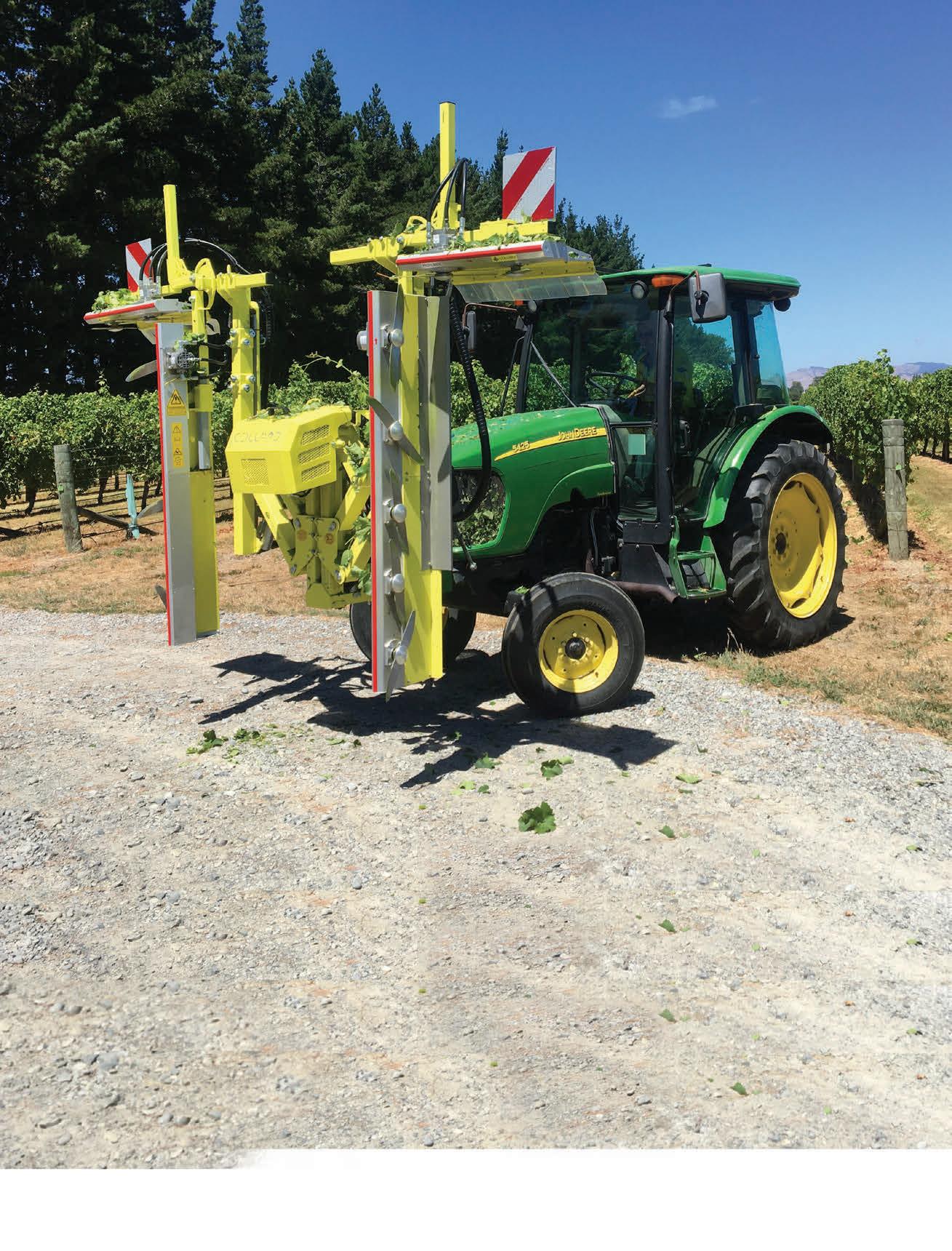
2200 or 3000 litre tank sizes
Tangential heads that provide excellent turbulence within the canopy (two row units) to maximise spray coverage
Hydraulically driven fans lower power consumption providing major hydraulic efficiencies and fuel savings
PROFILMATIC TRIMMERS
Stainless steel blades provide exceptional cut quality
Modular design provides cutting element configuration
Fast operating speeds reduce tractor hours
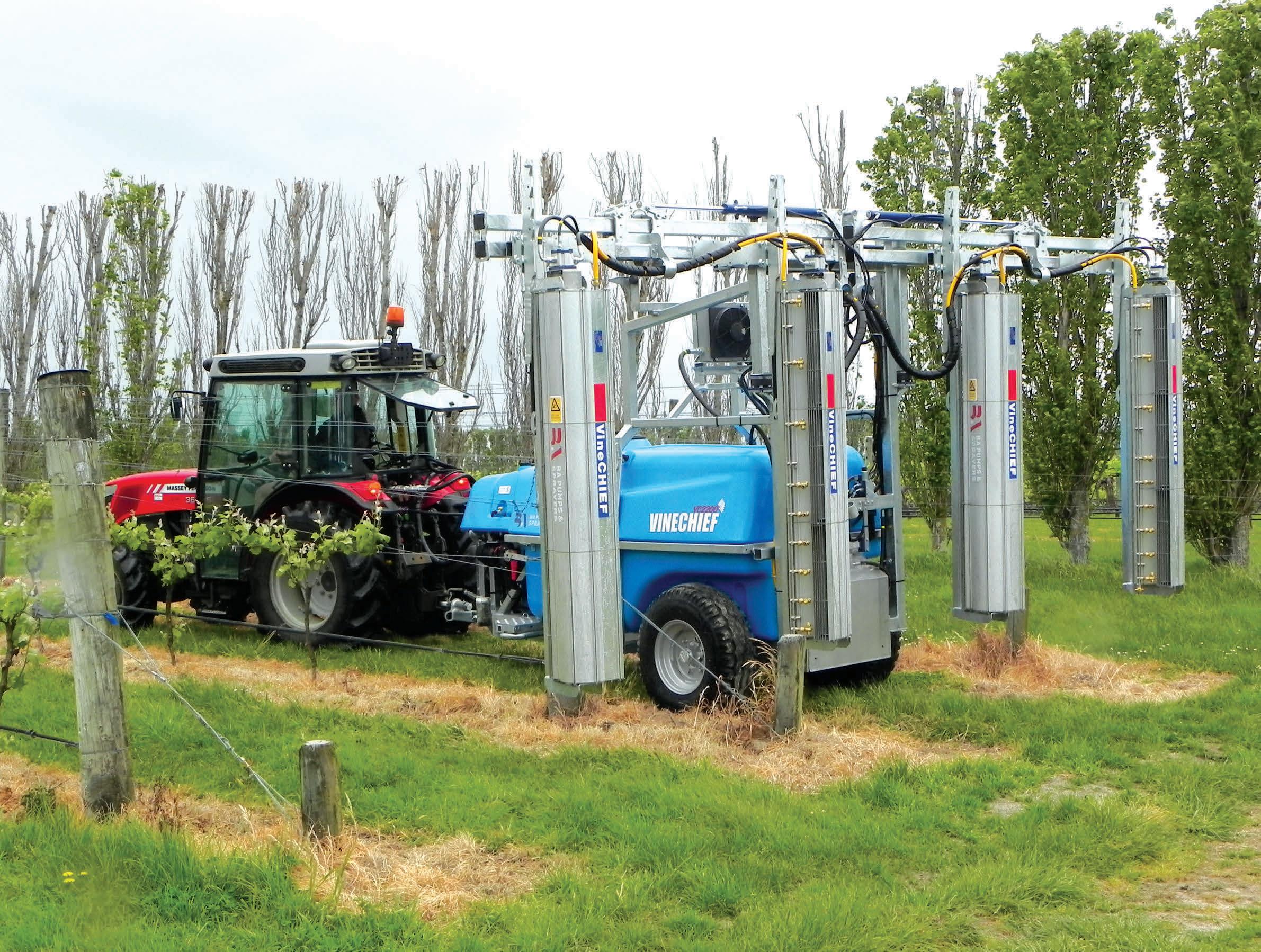
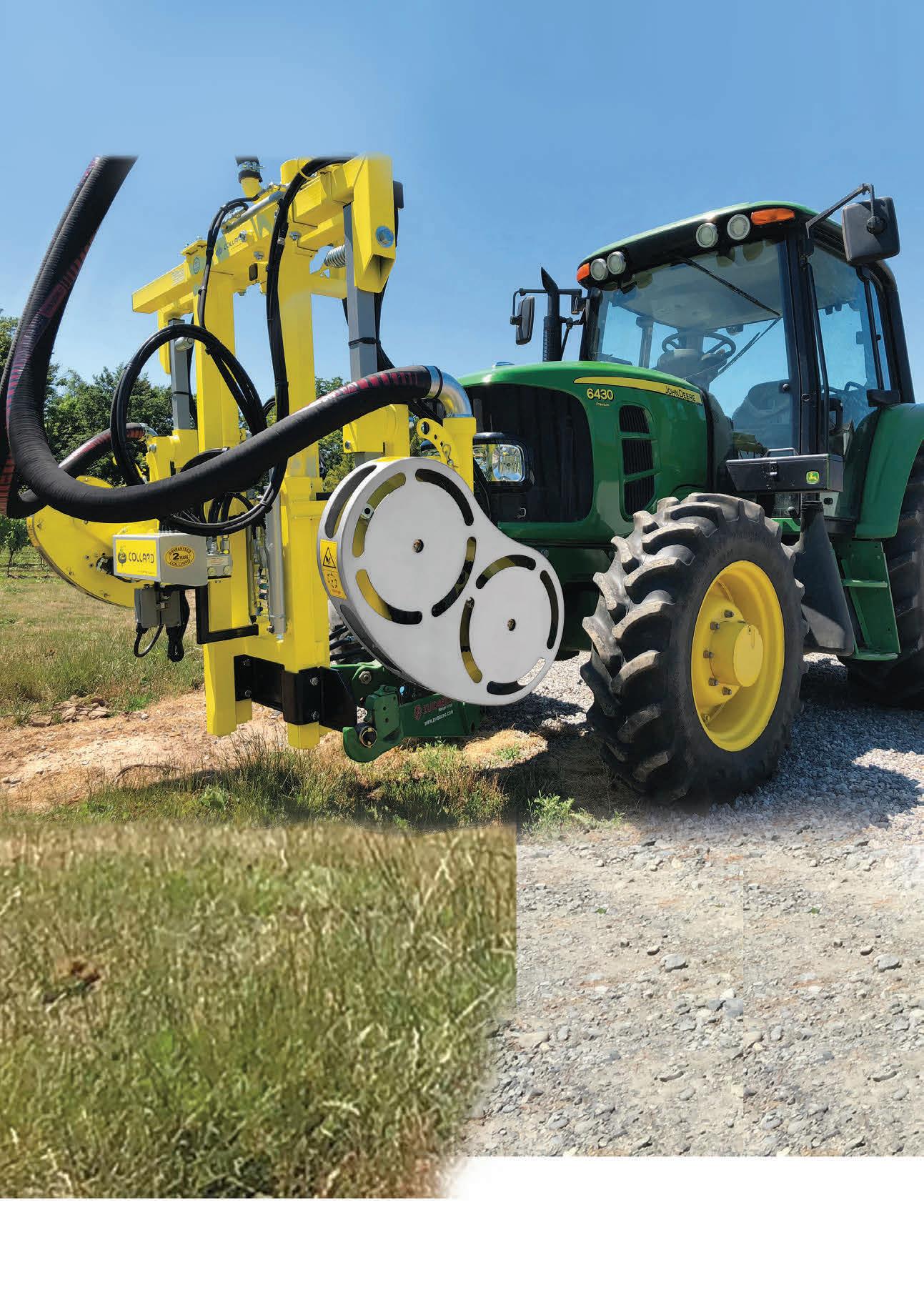
ELLIPSE DEFOLIATORS
Removes leaves from both the outside and interiors of the row
Compact design faciliates easy row entry
A multitude of possible combinations to adjust to your working height
Proudly NZ Made for over 30 years 0800 833 538 | www.bapumpsandsprayers.com PREPARE FOR NEXT SEASON WITH BA
















































































































 JO BURZYNSKA
JO BURZYNSKA



















































































